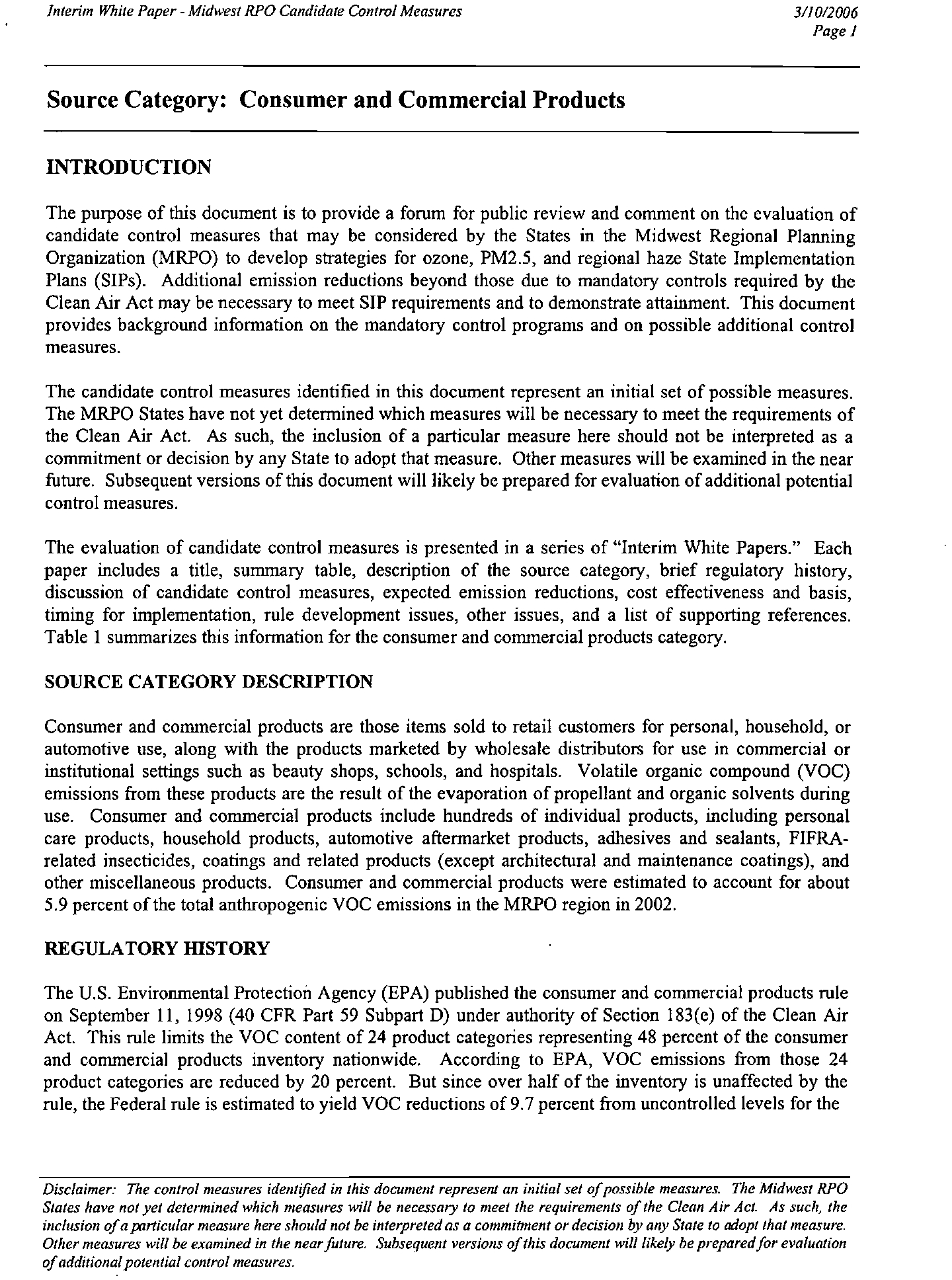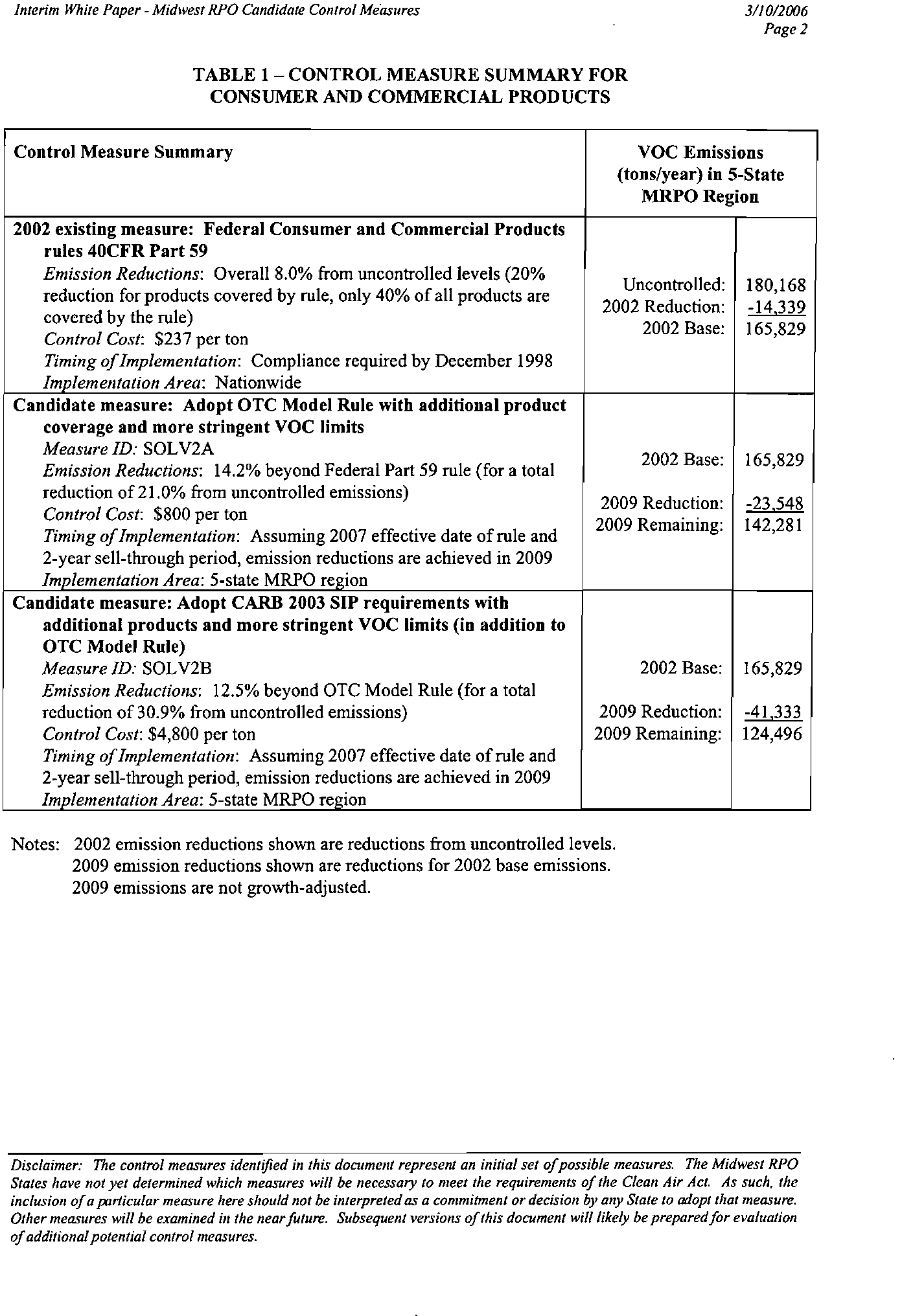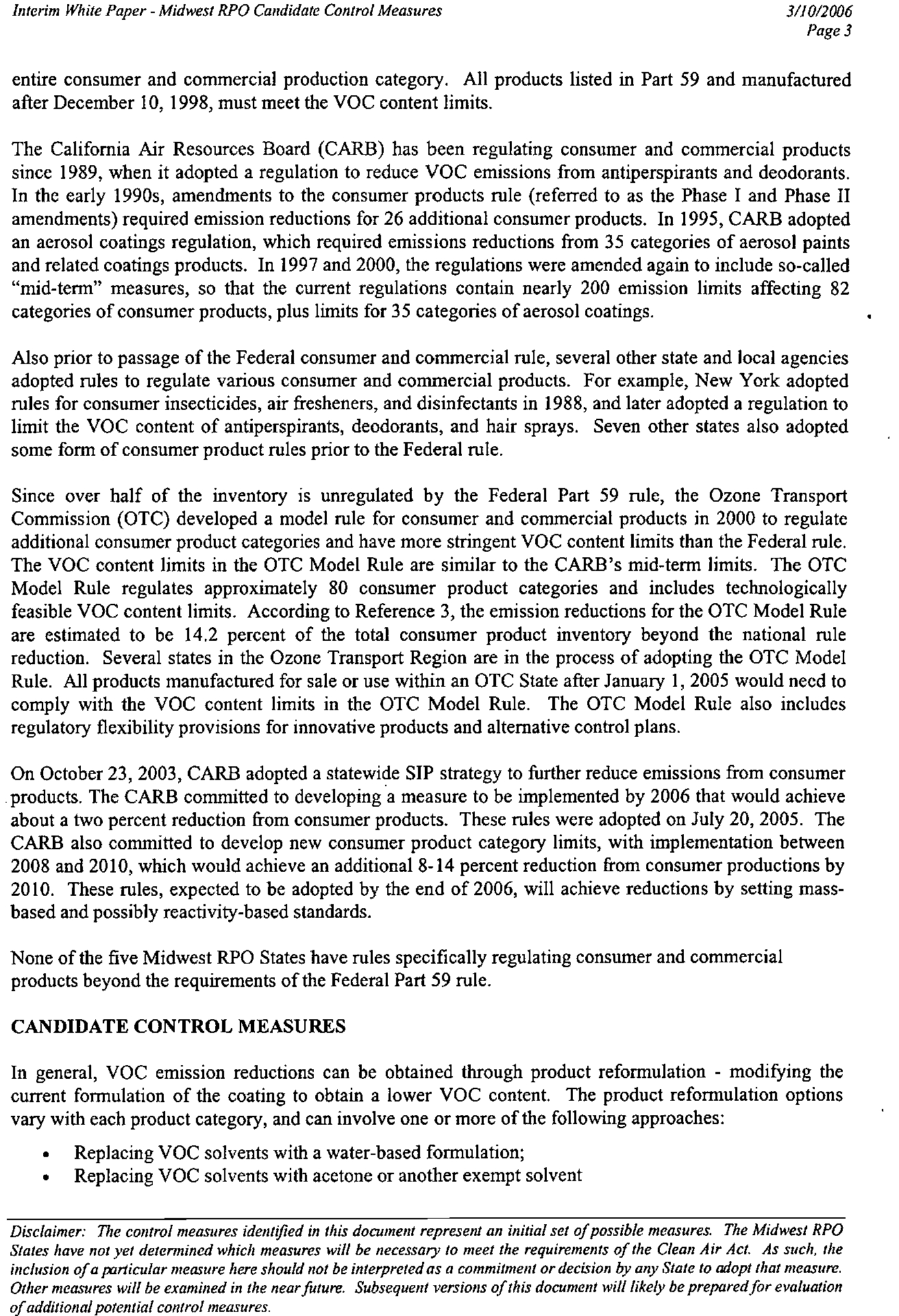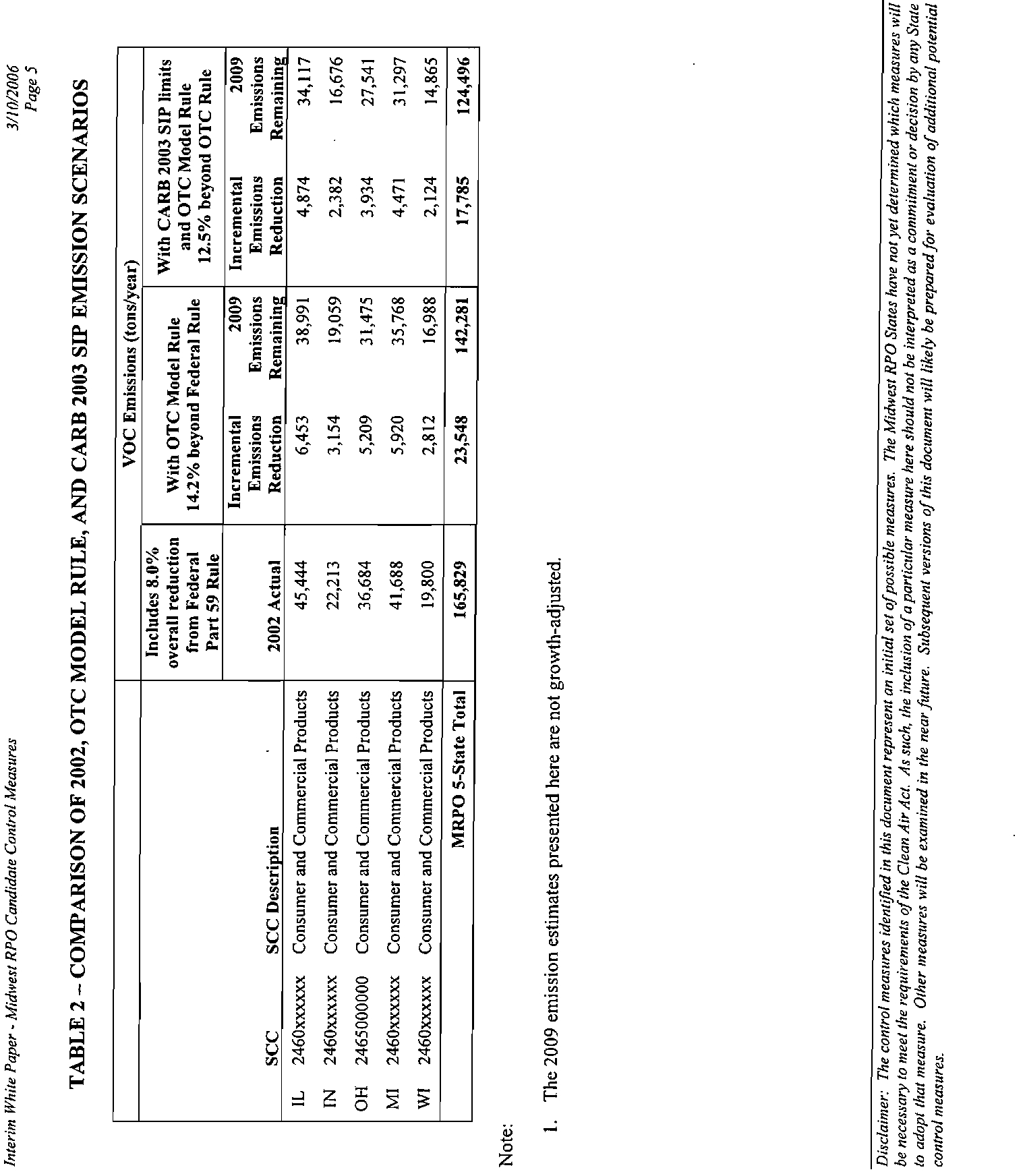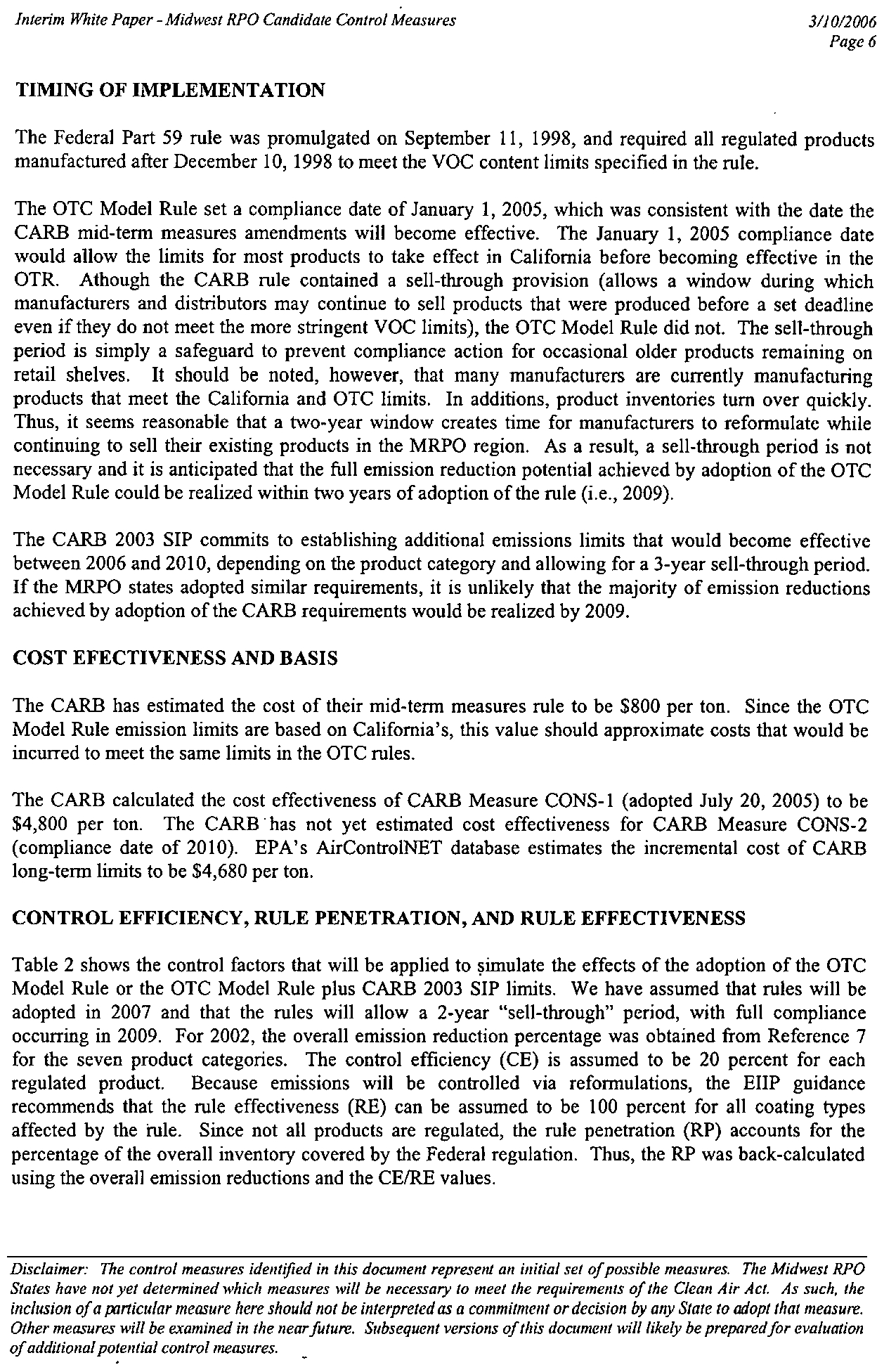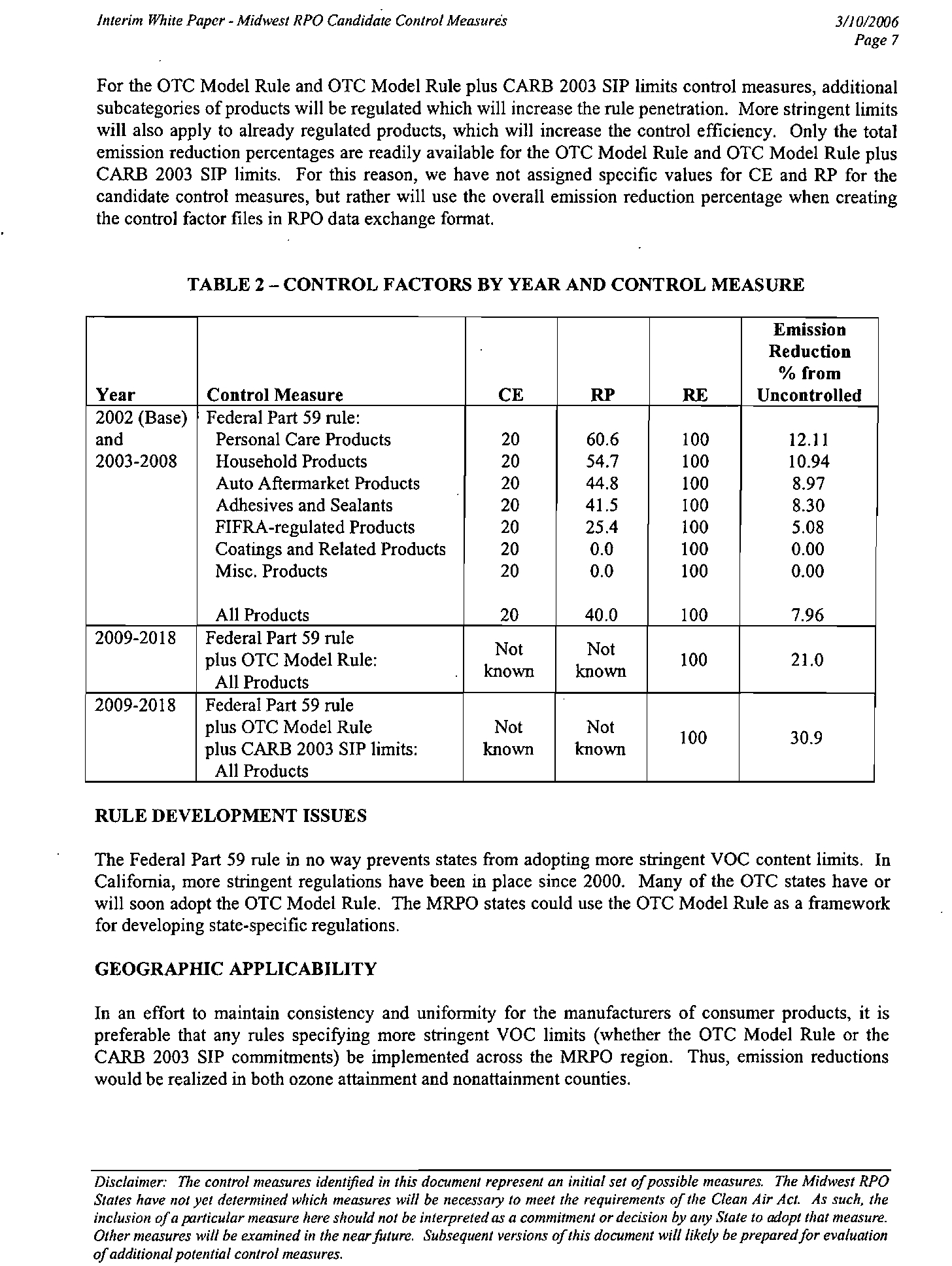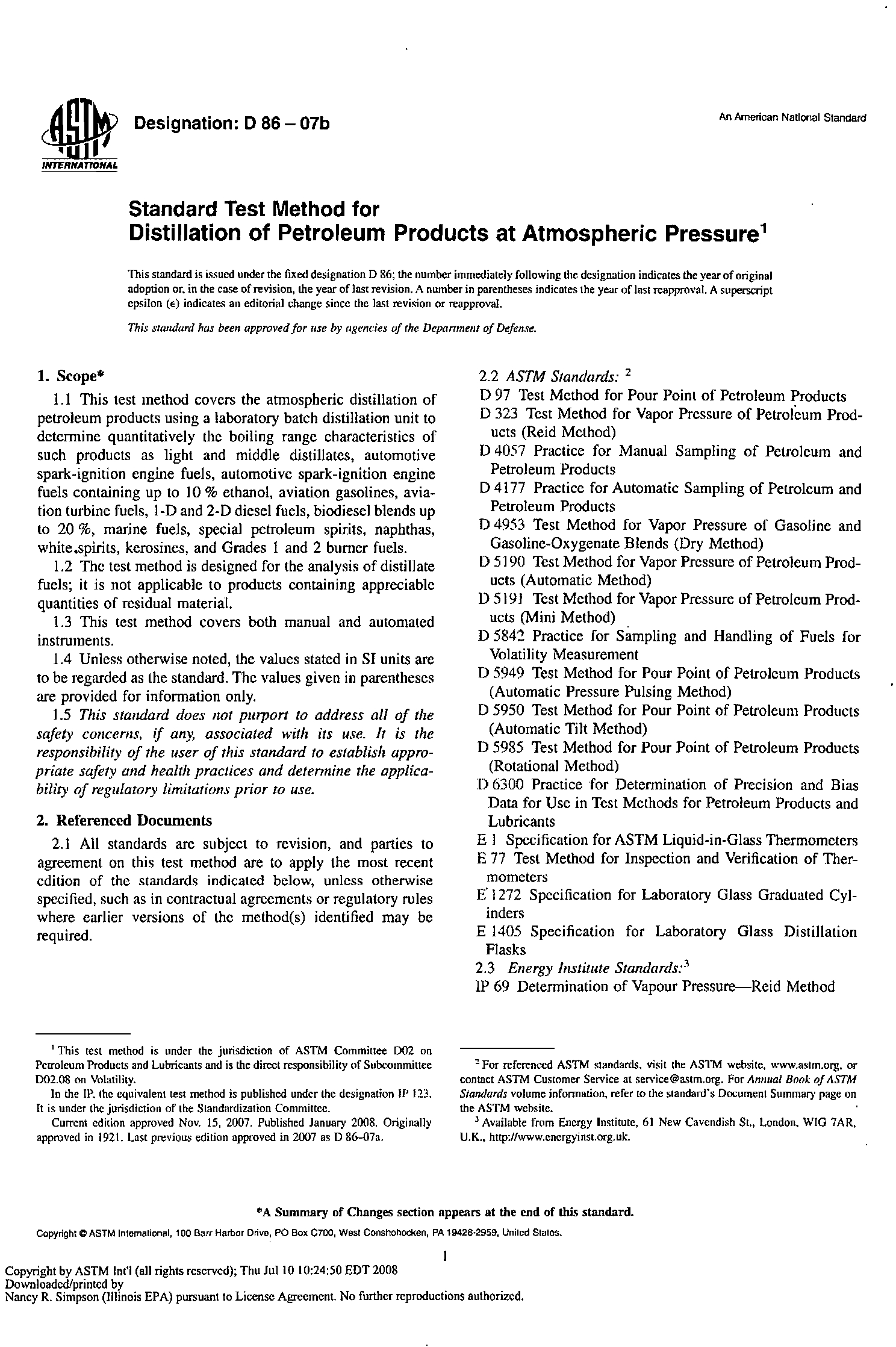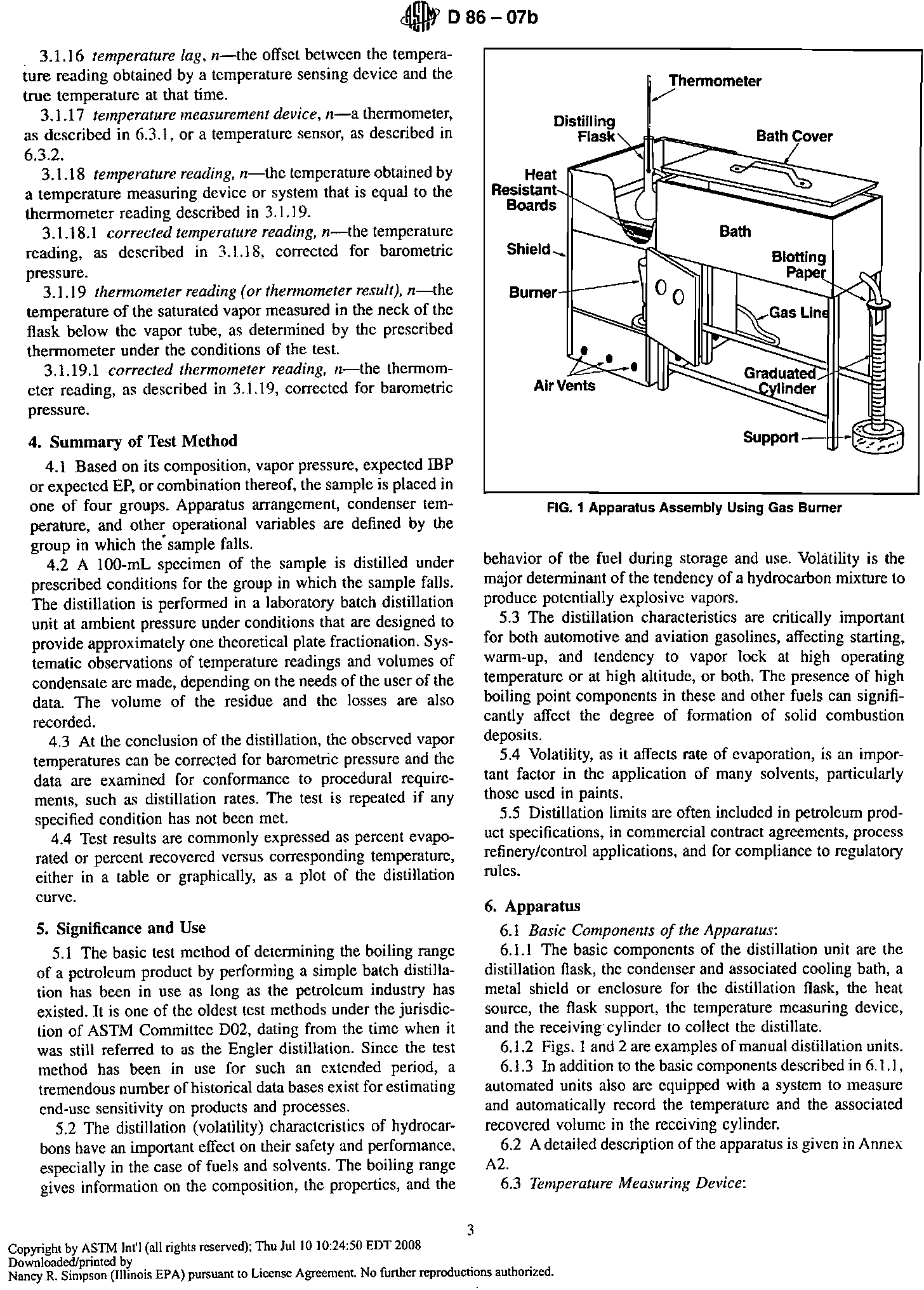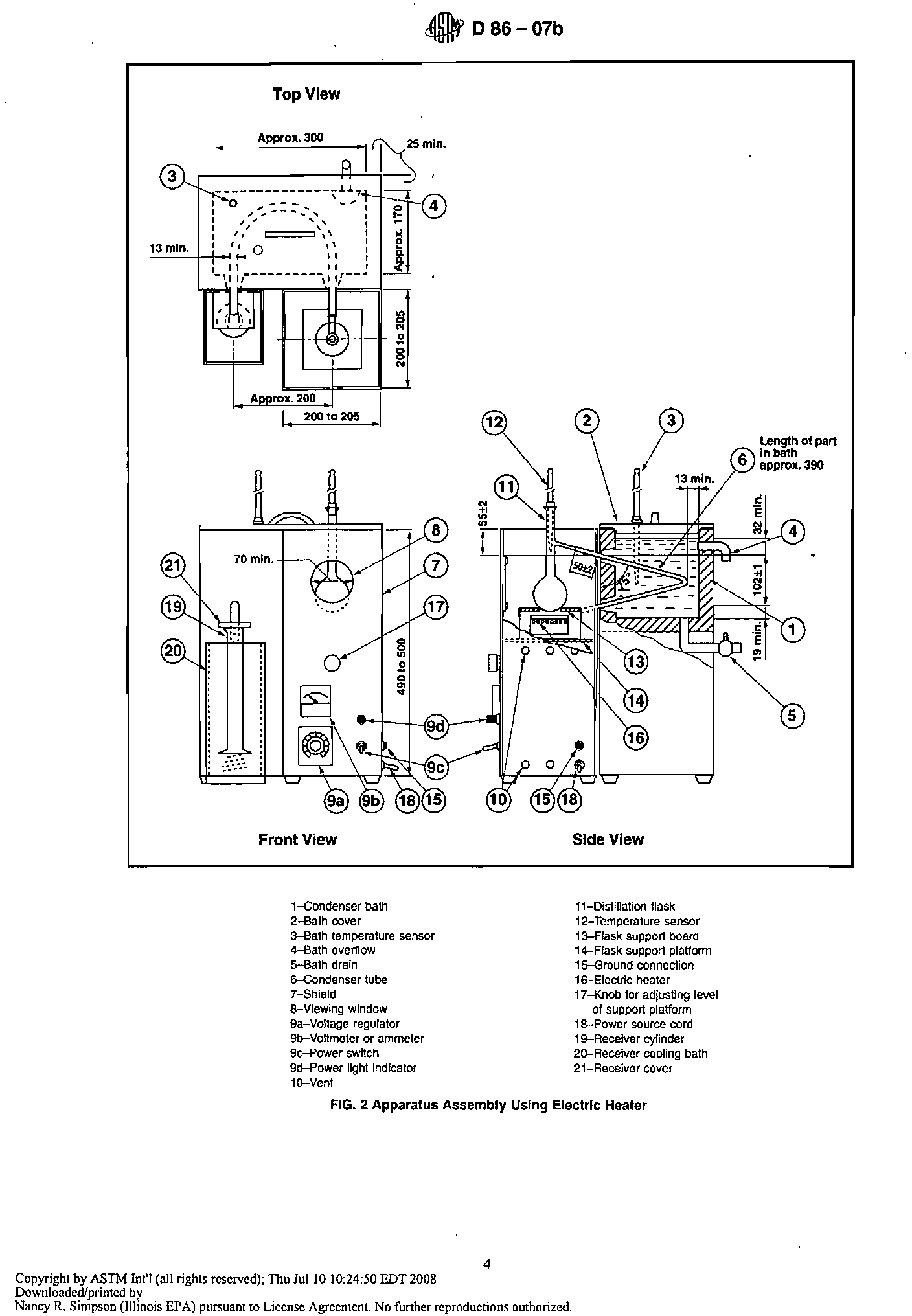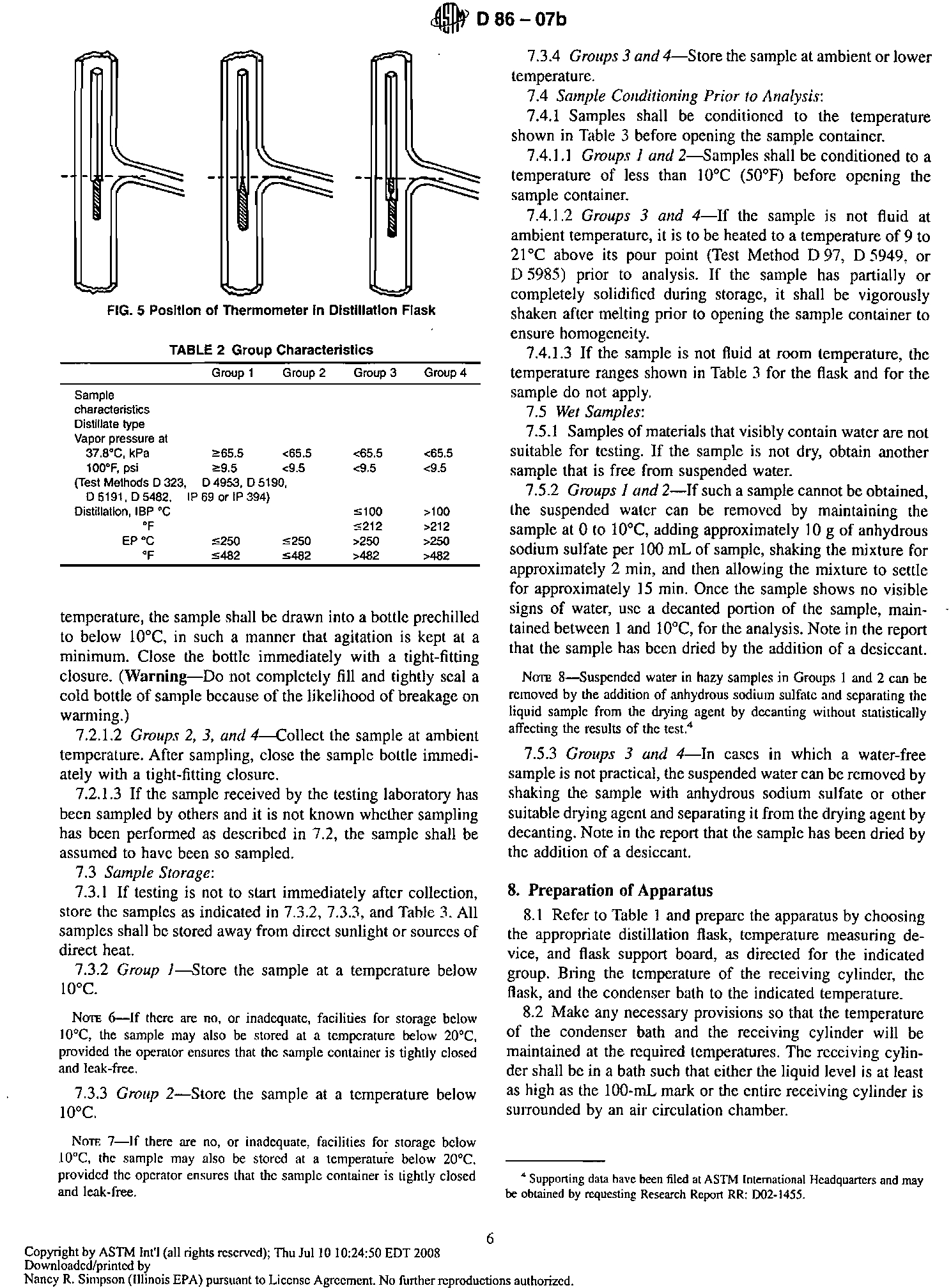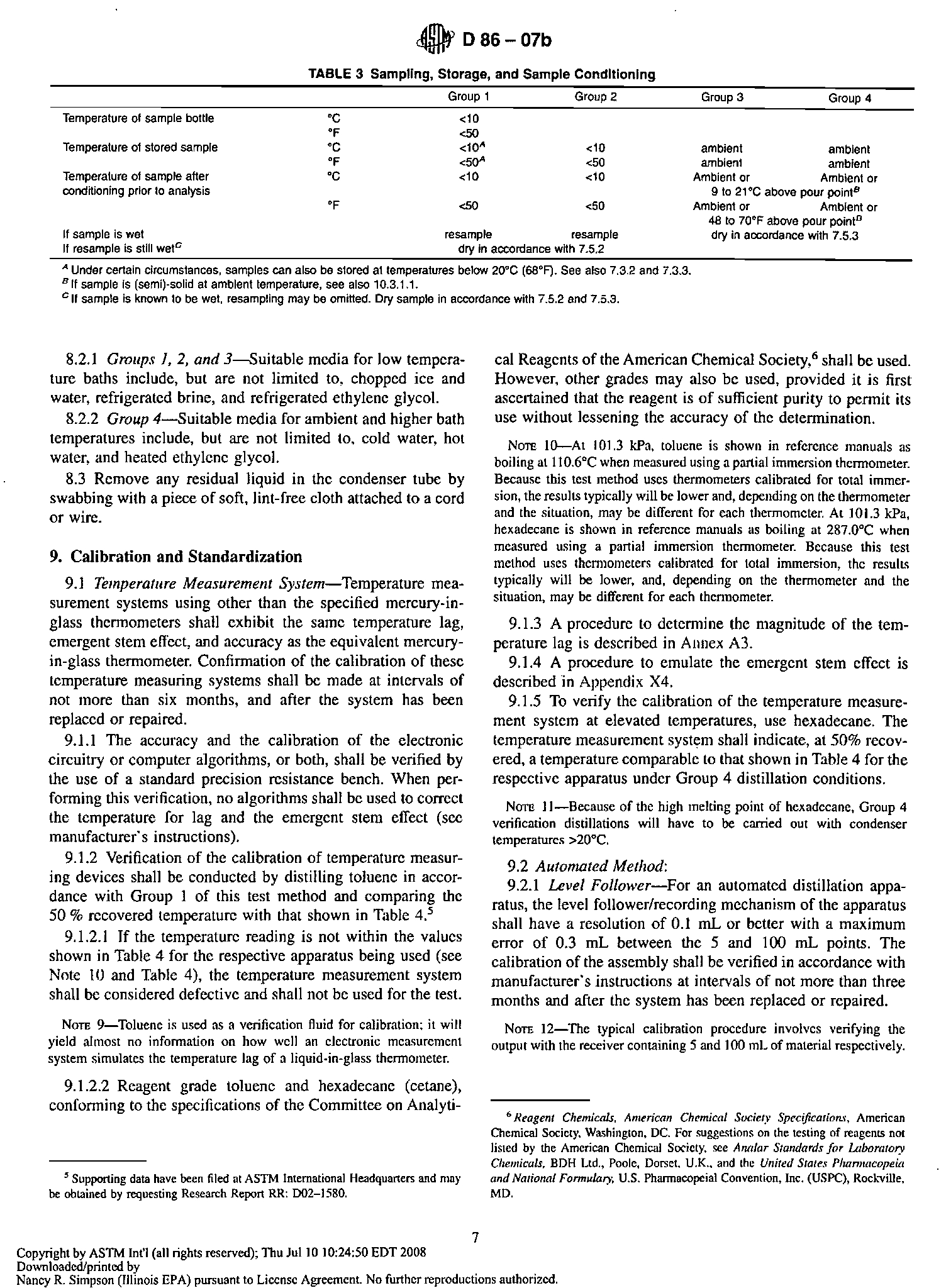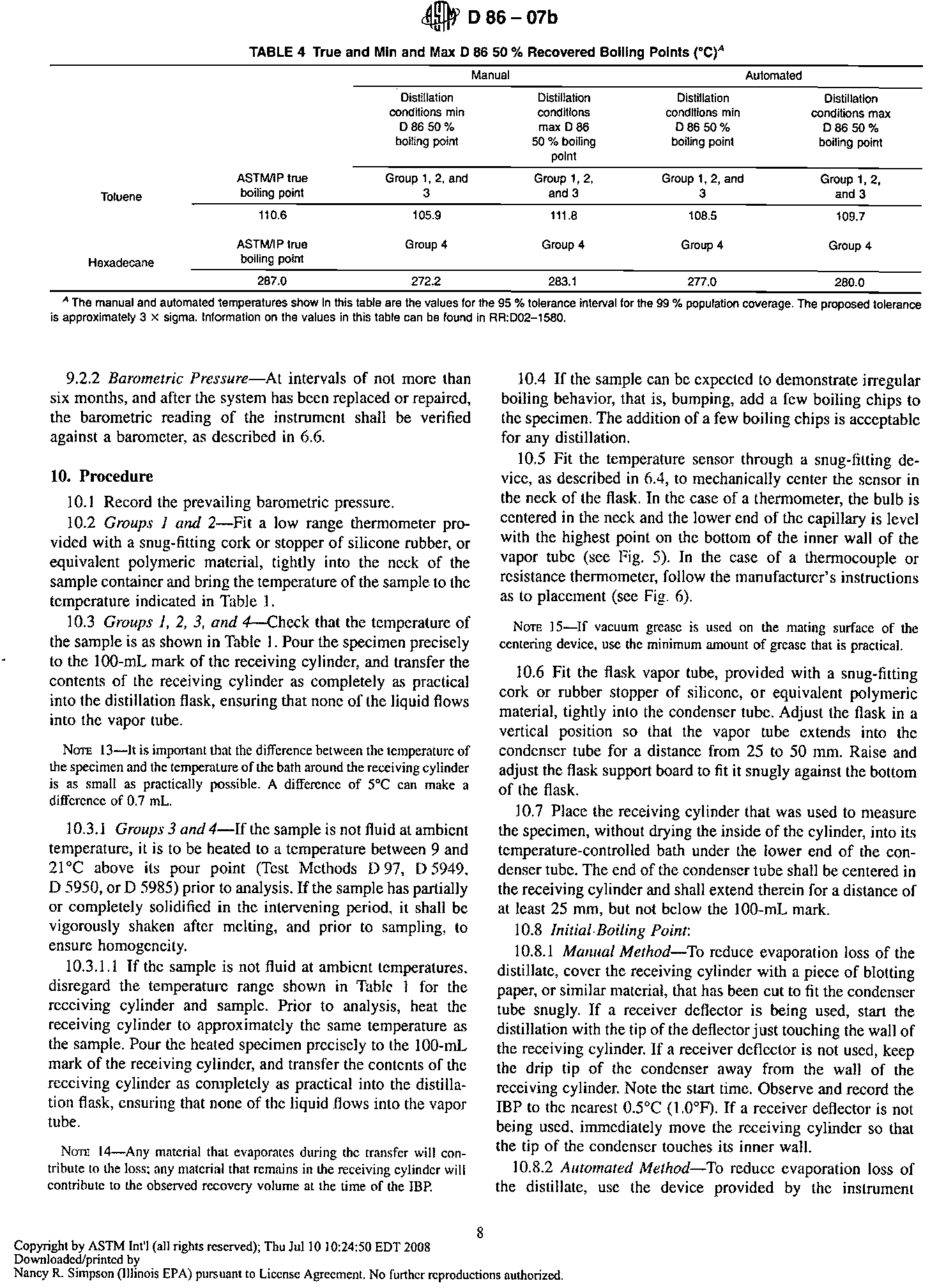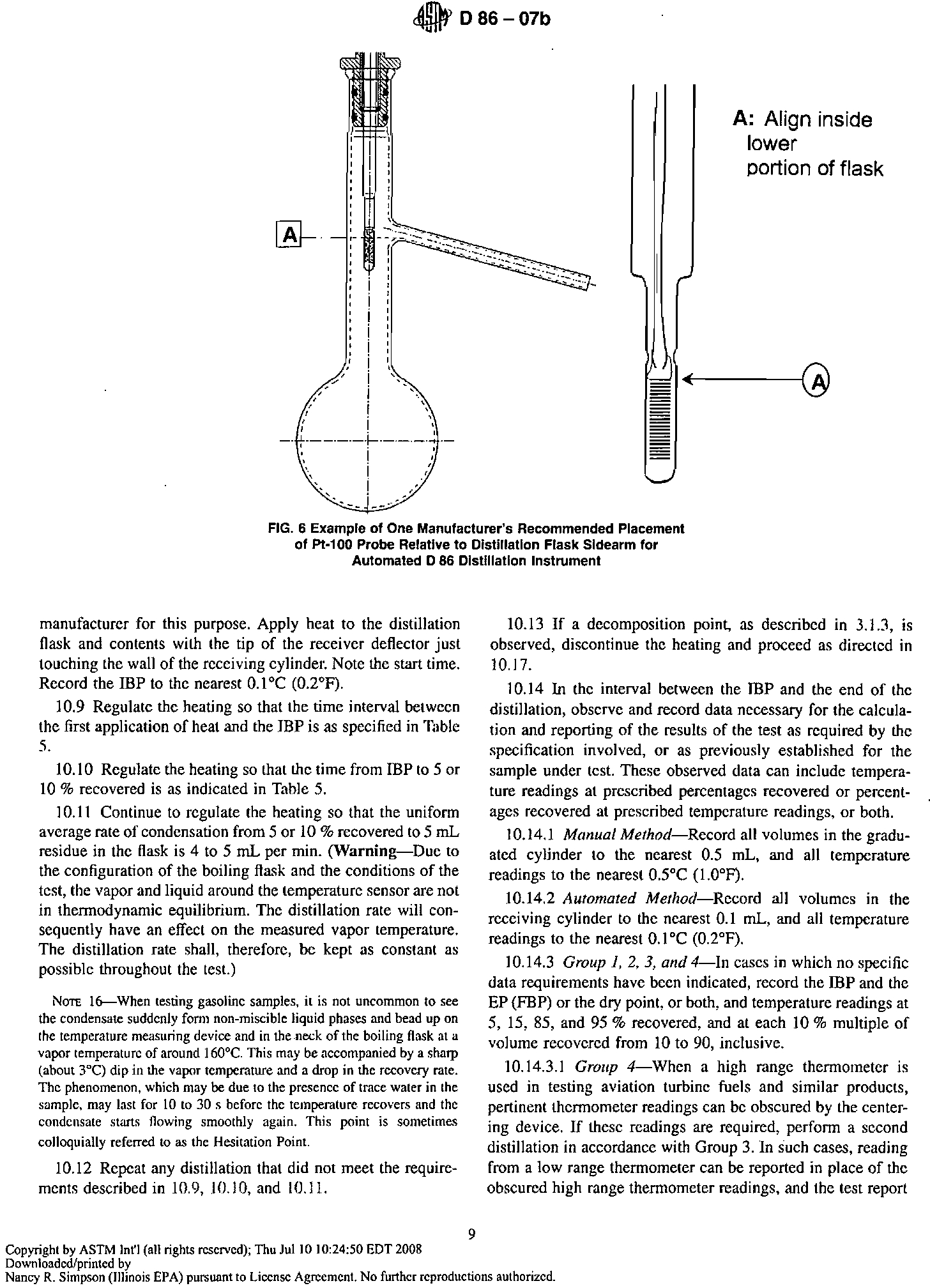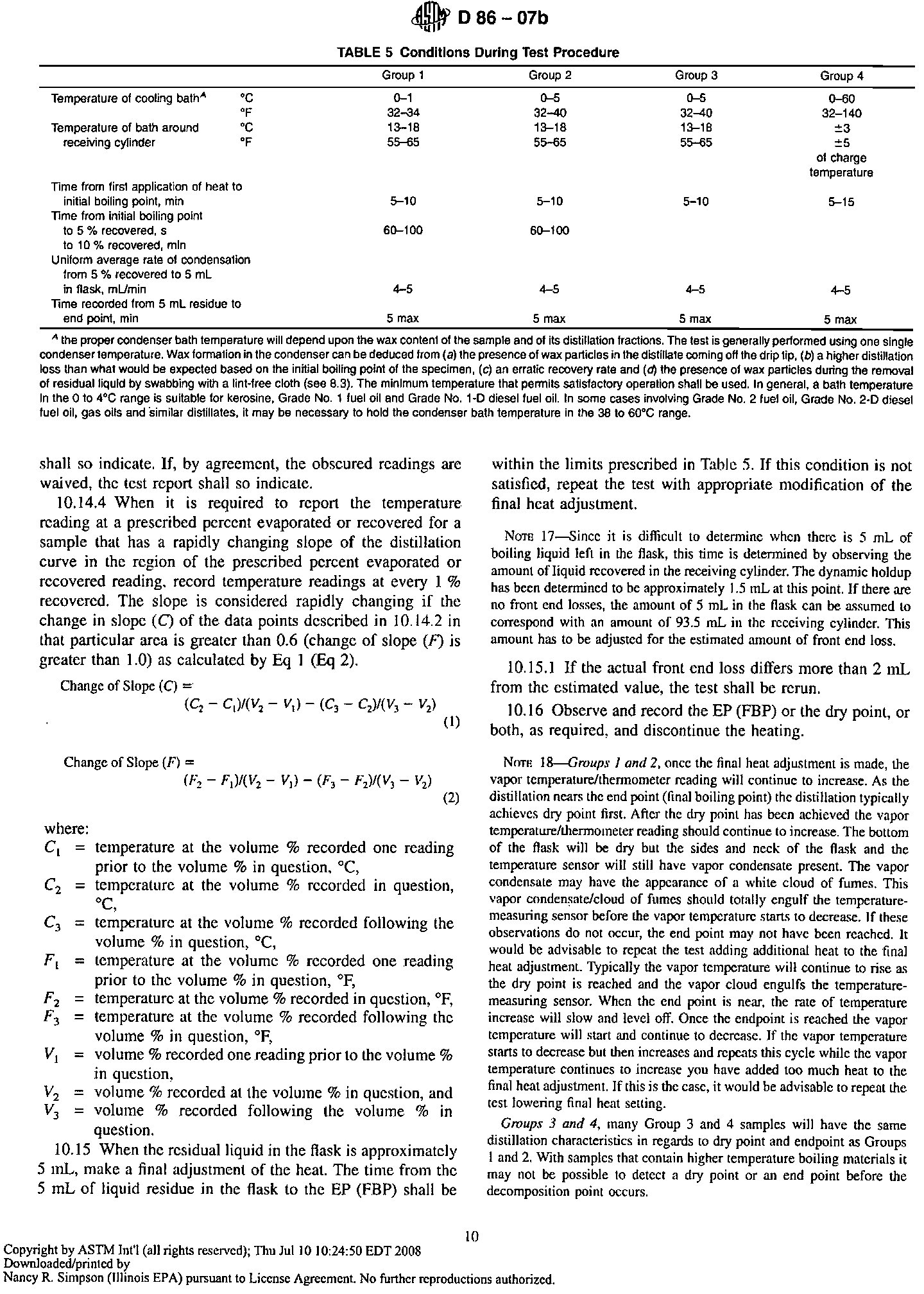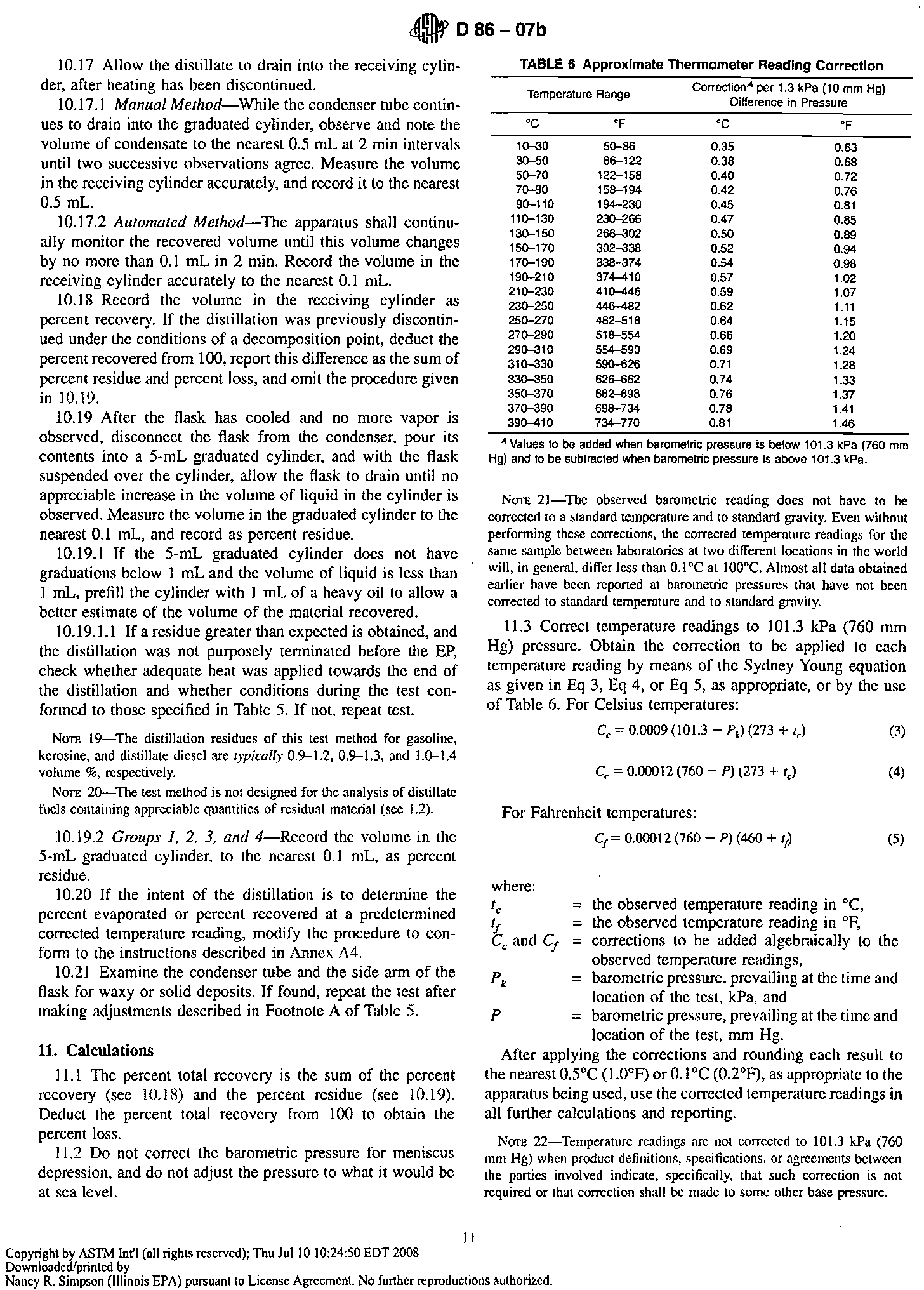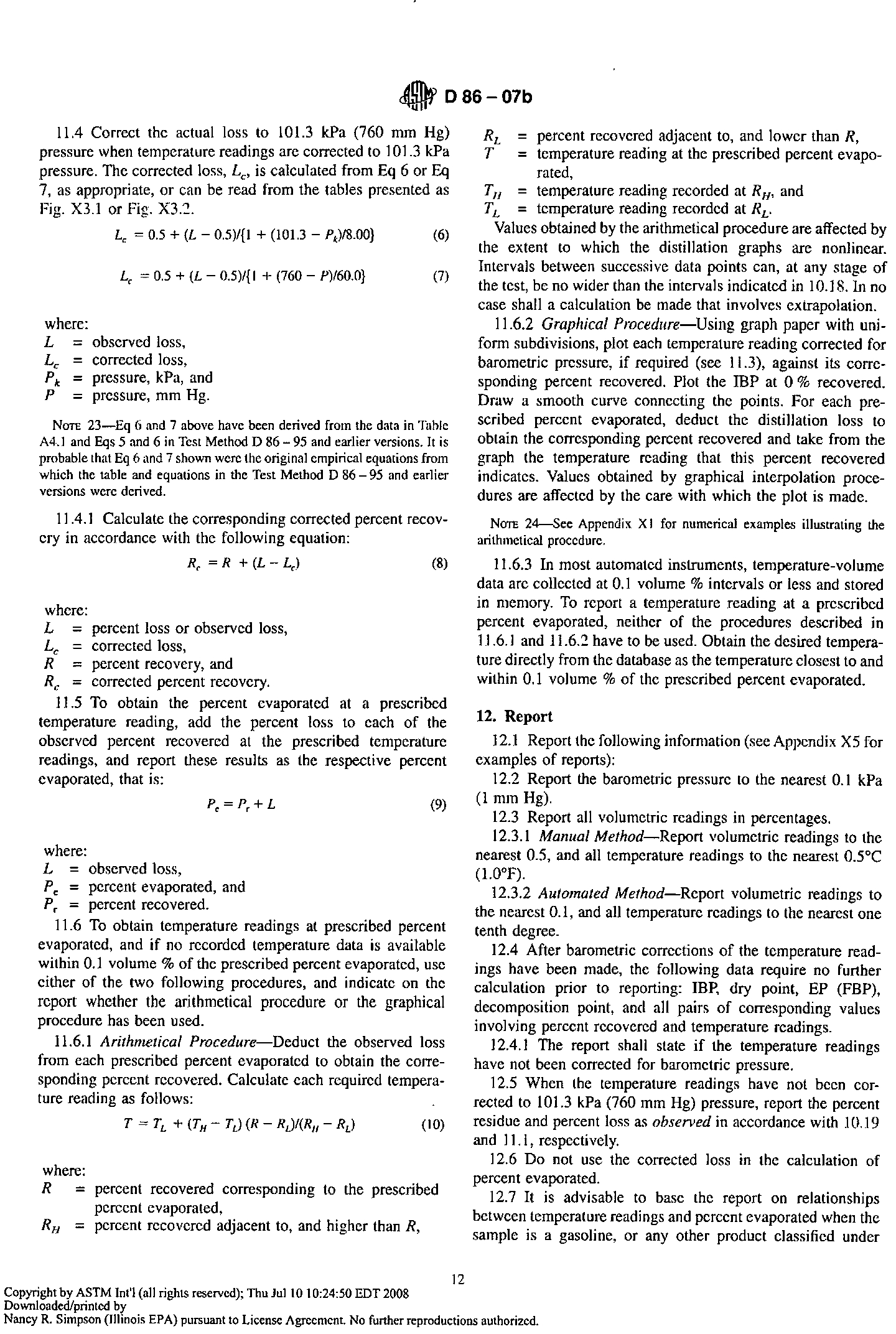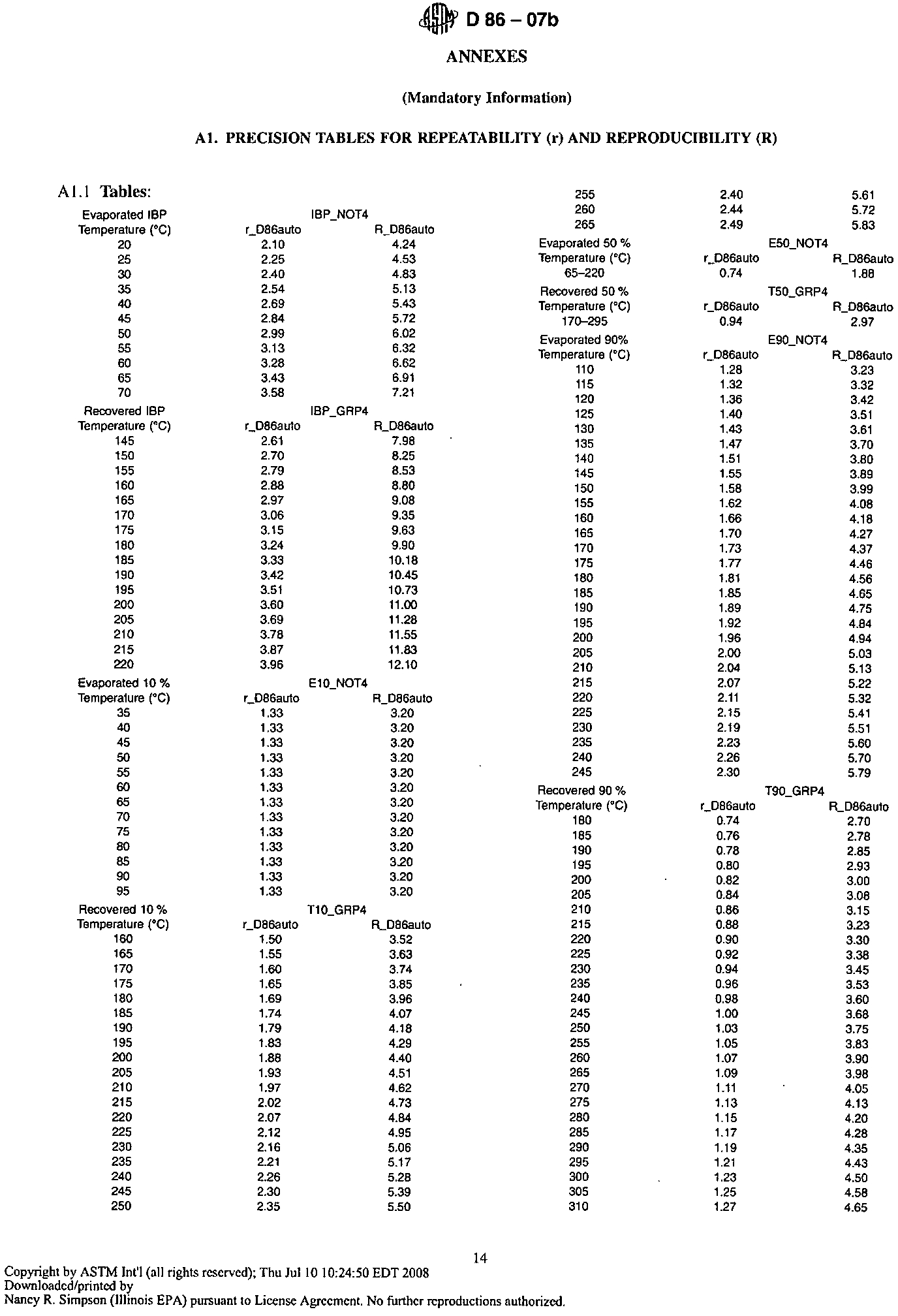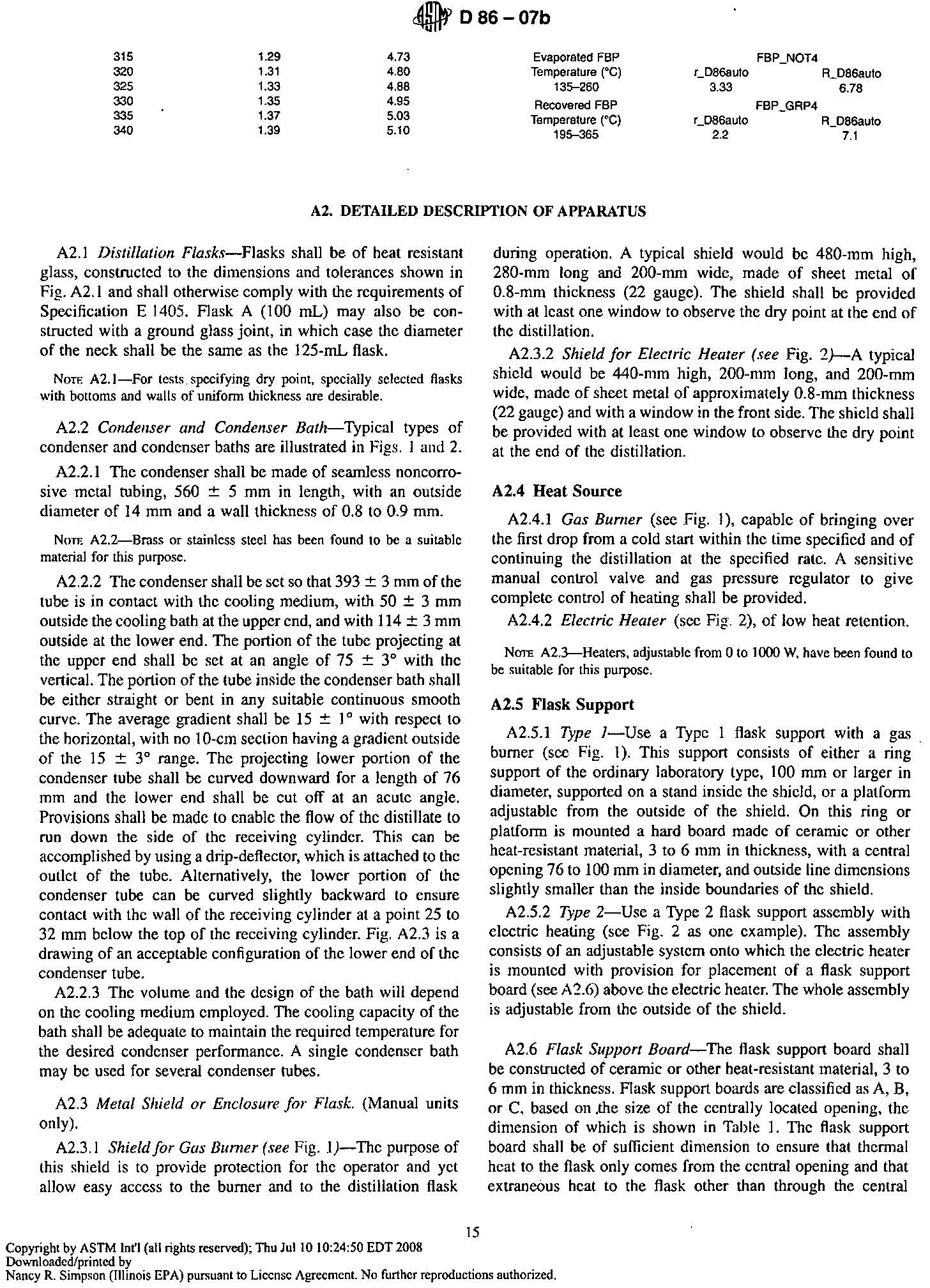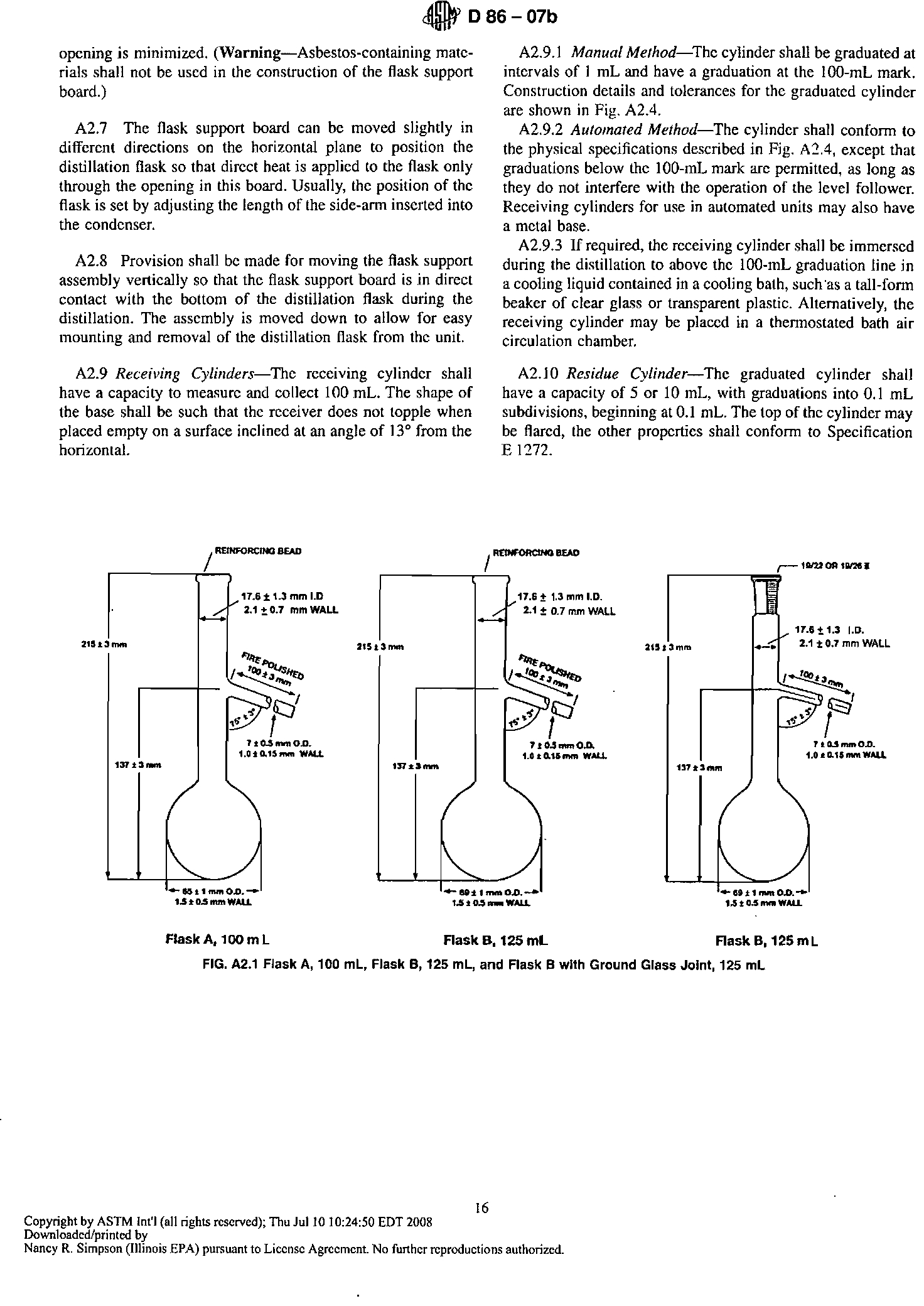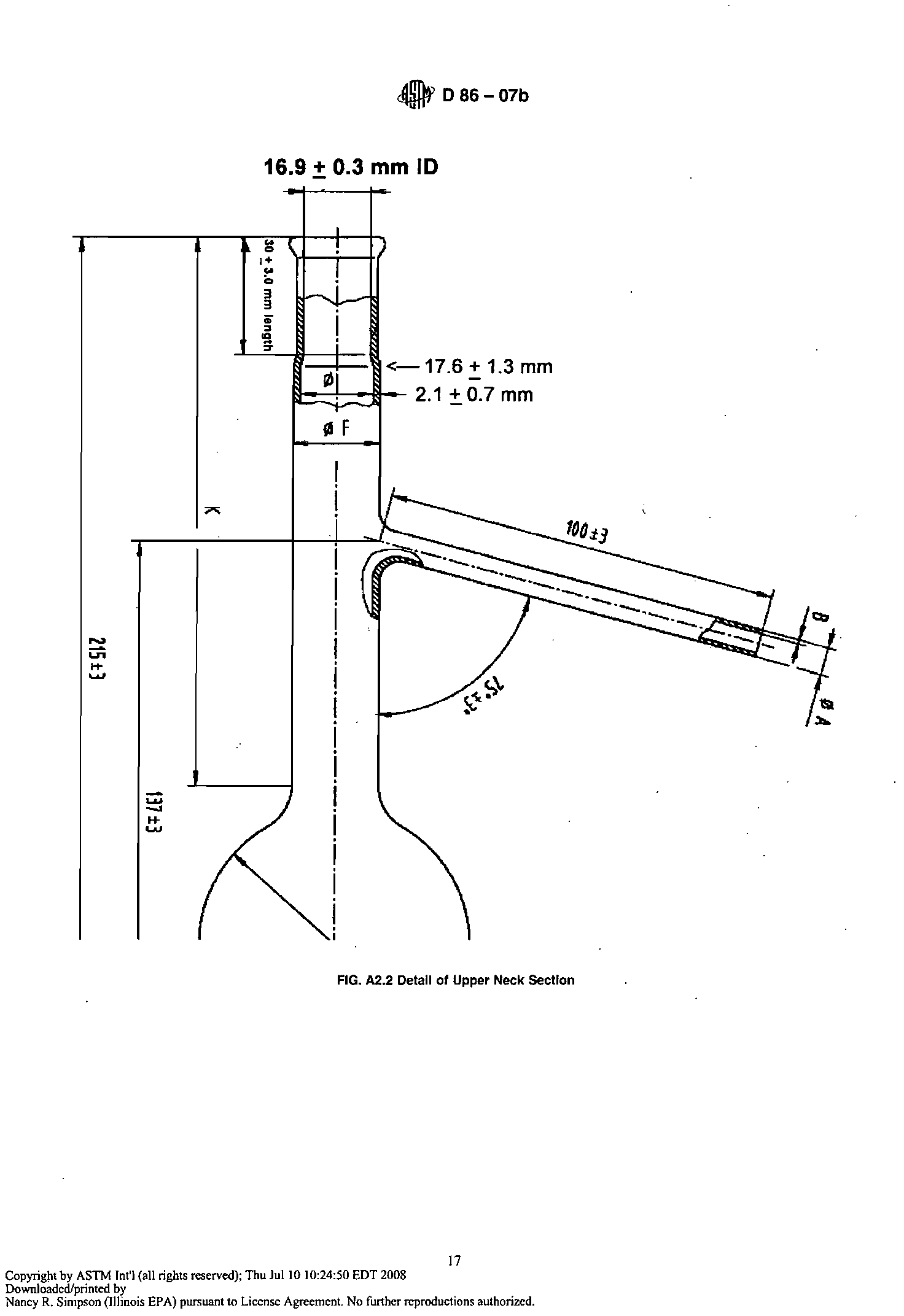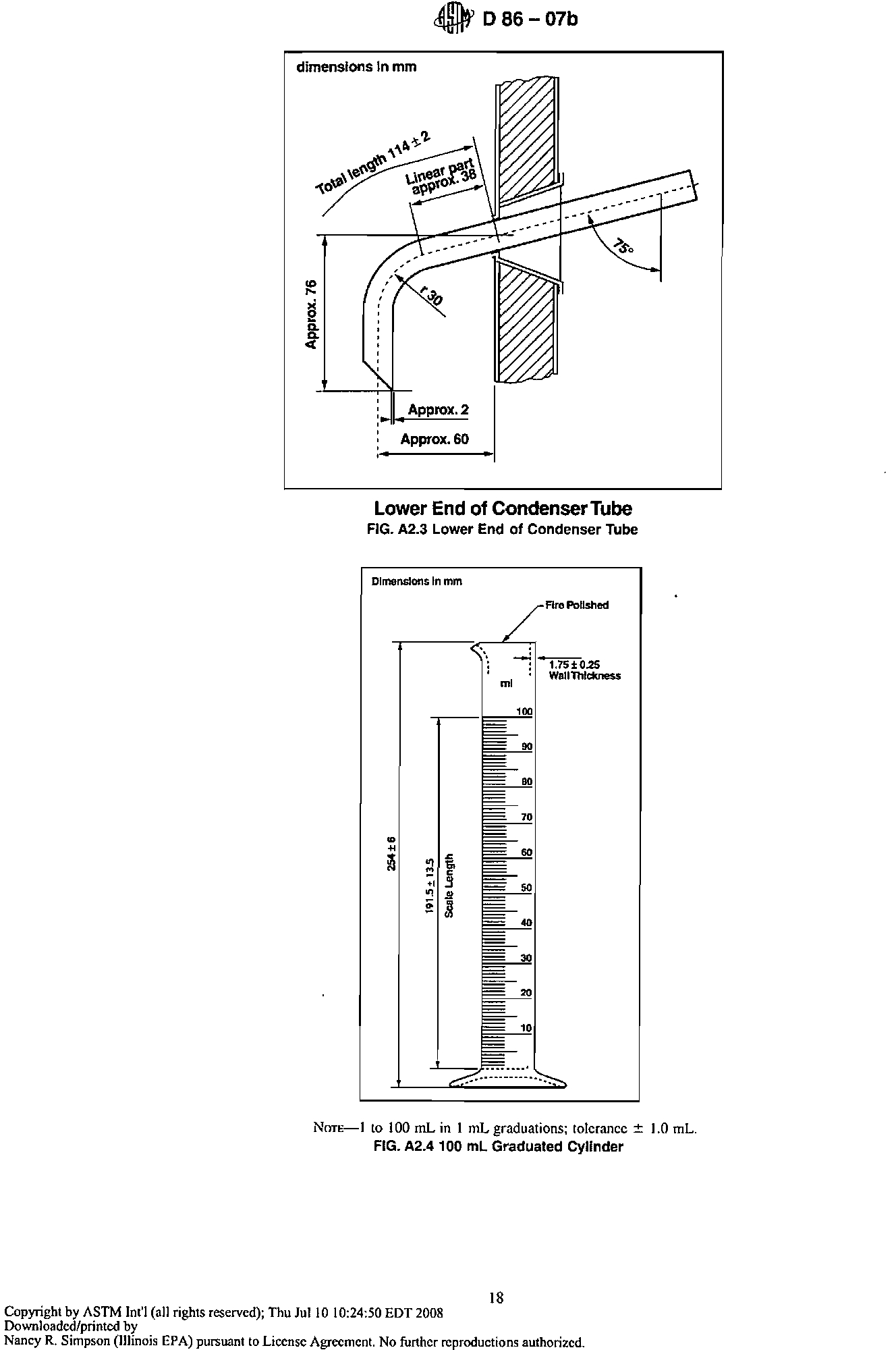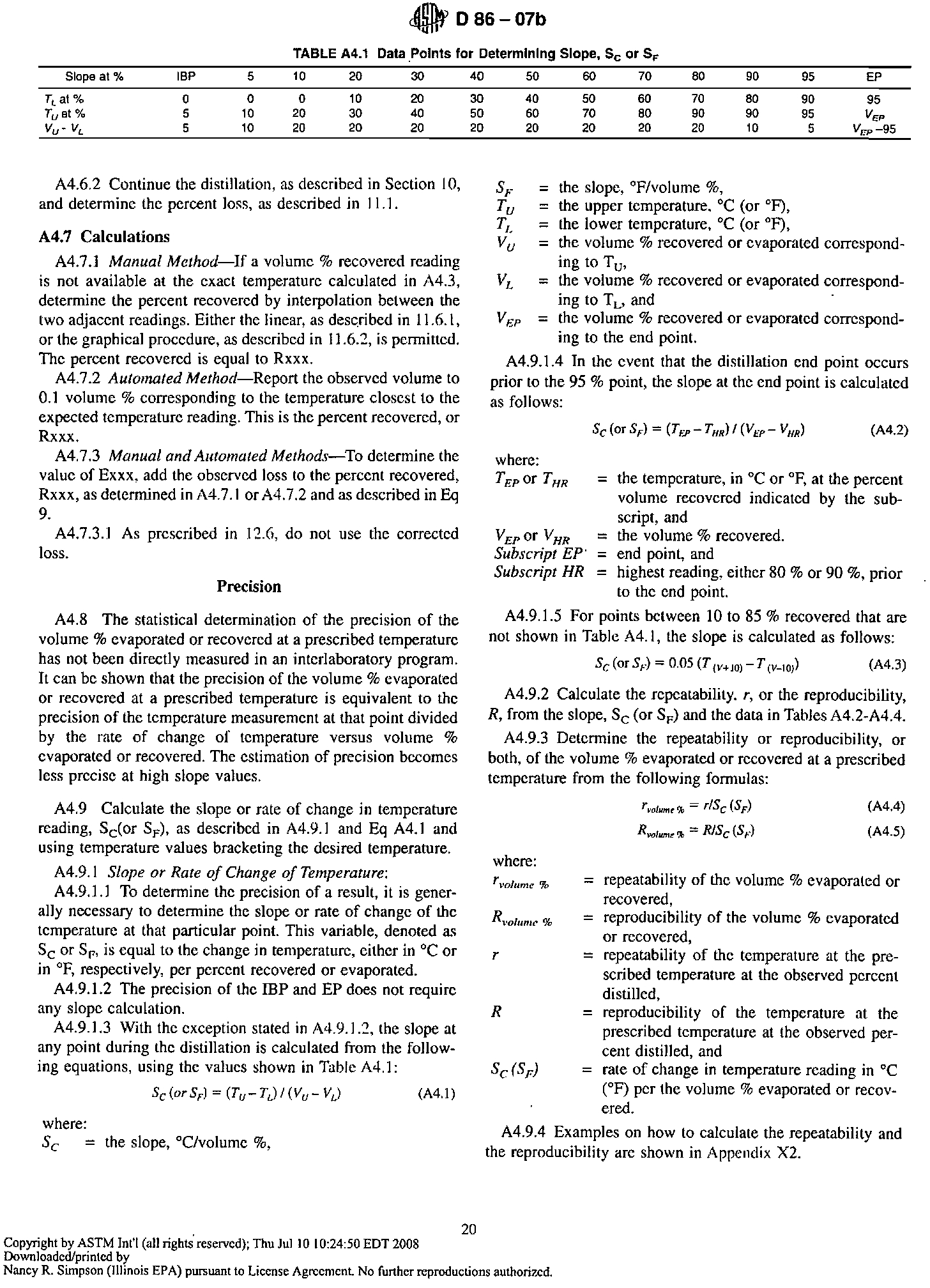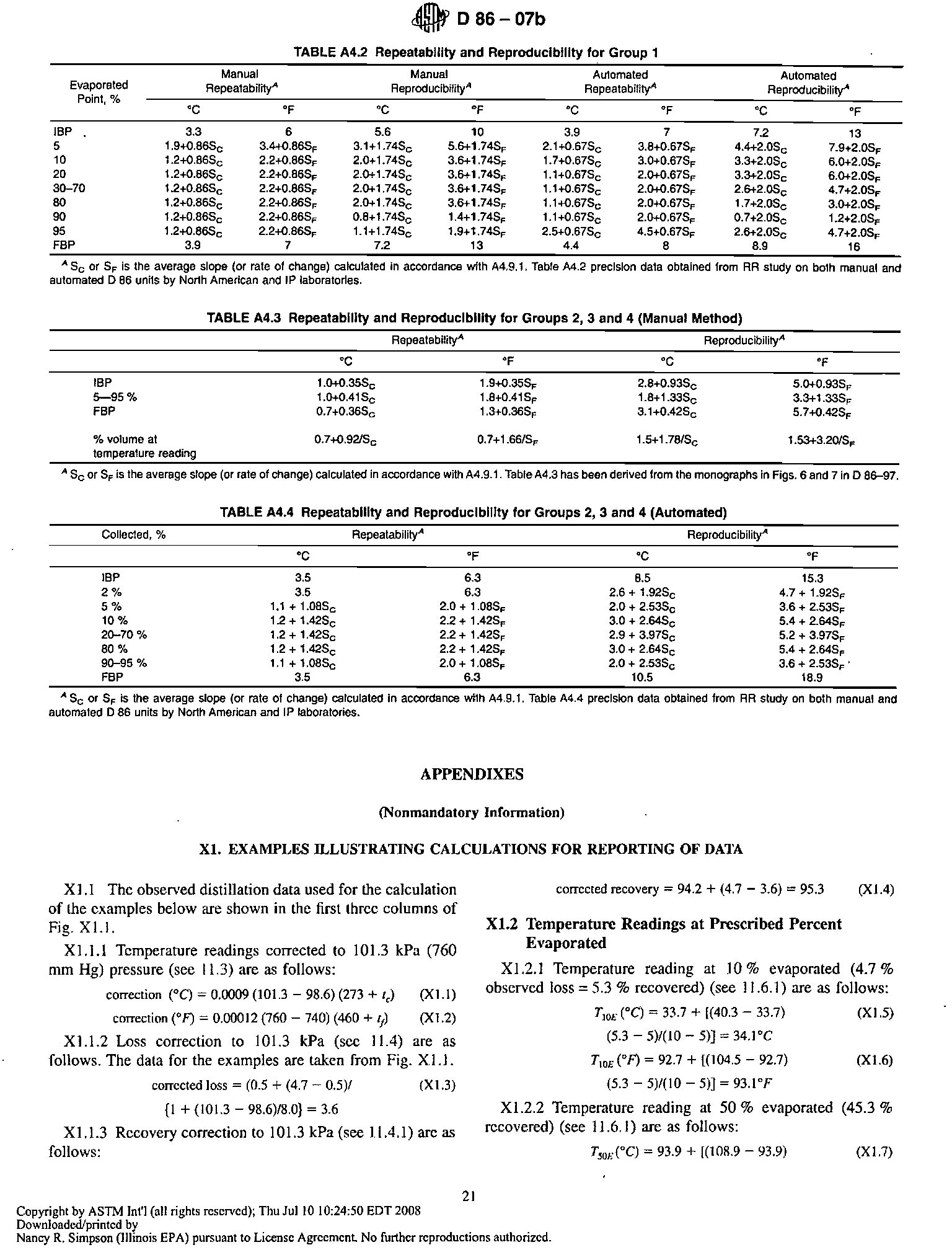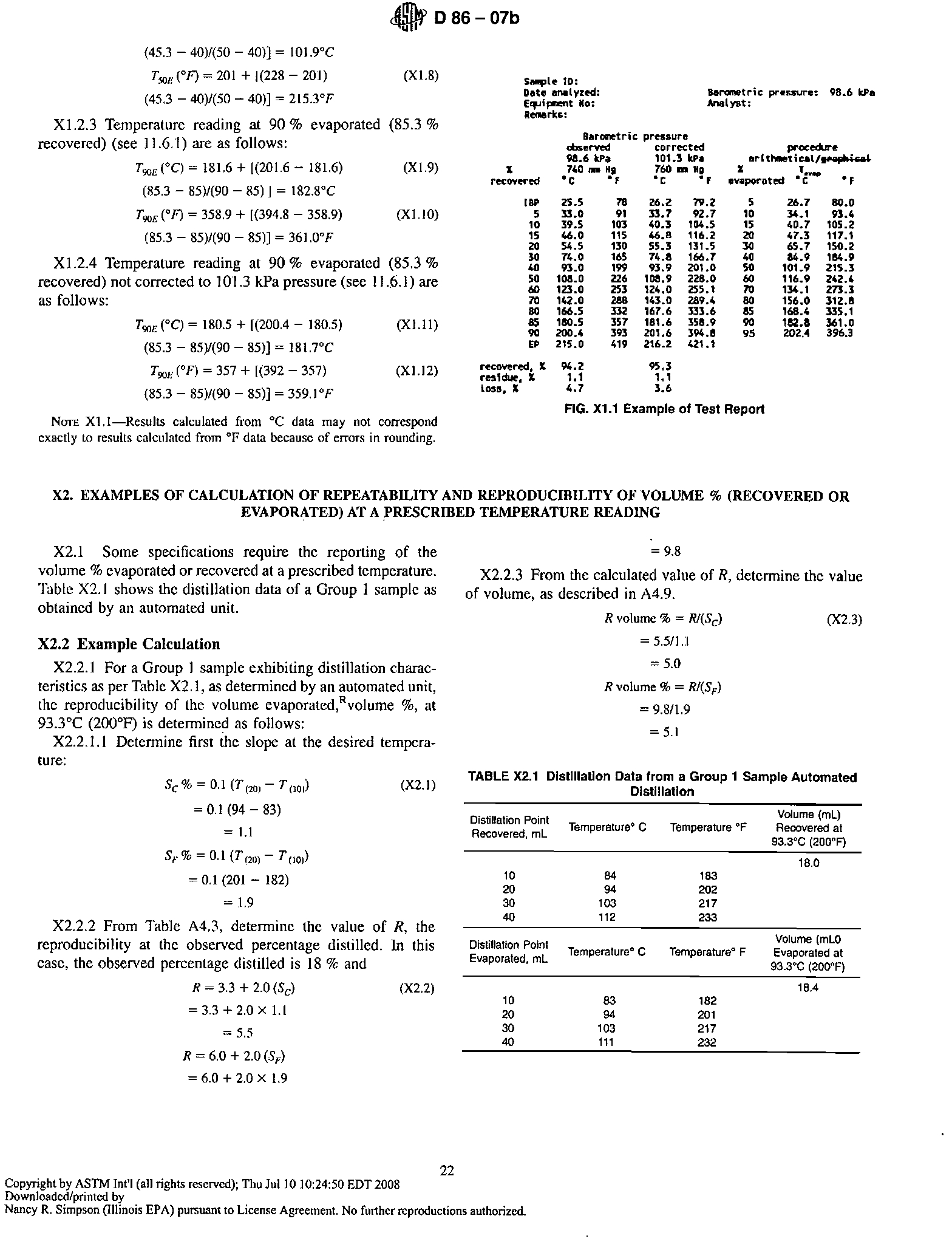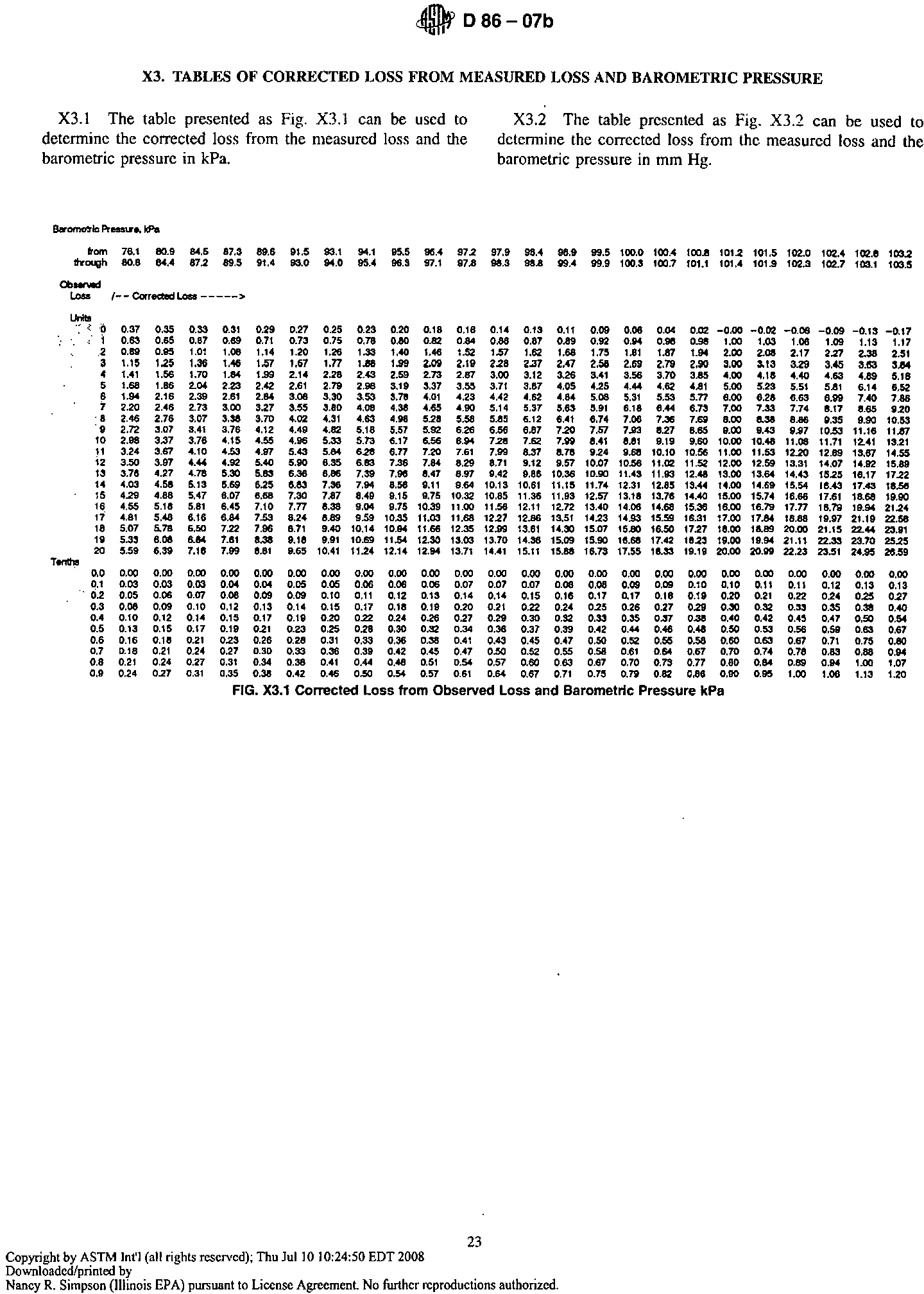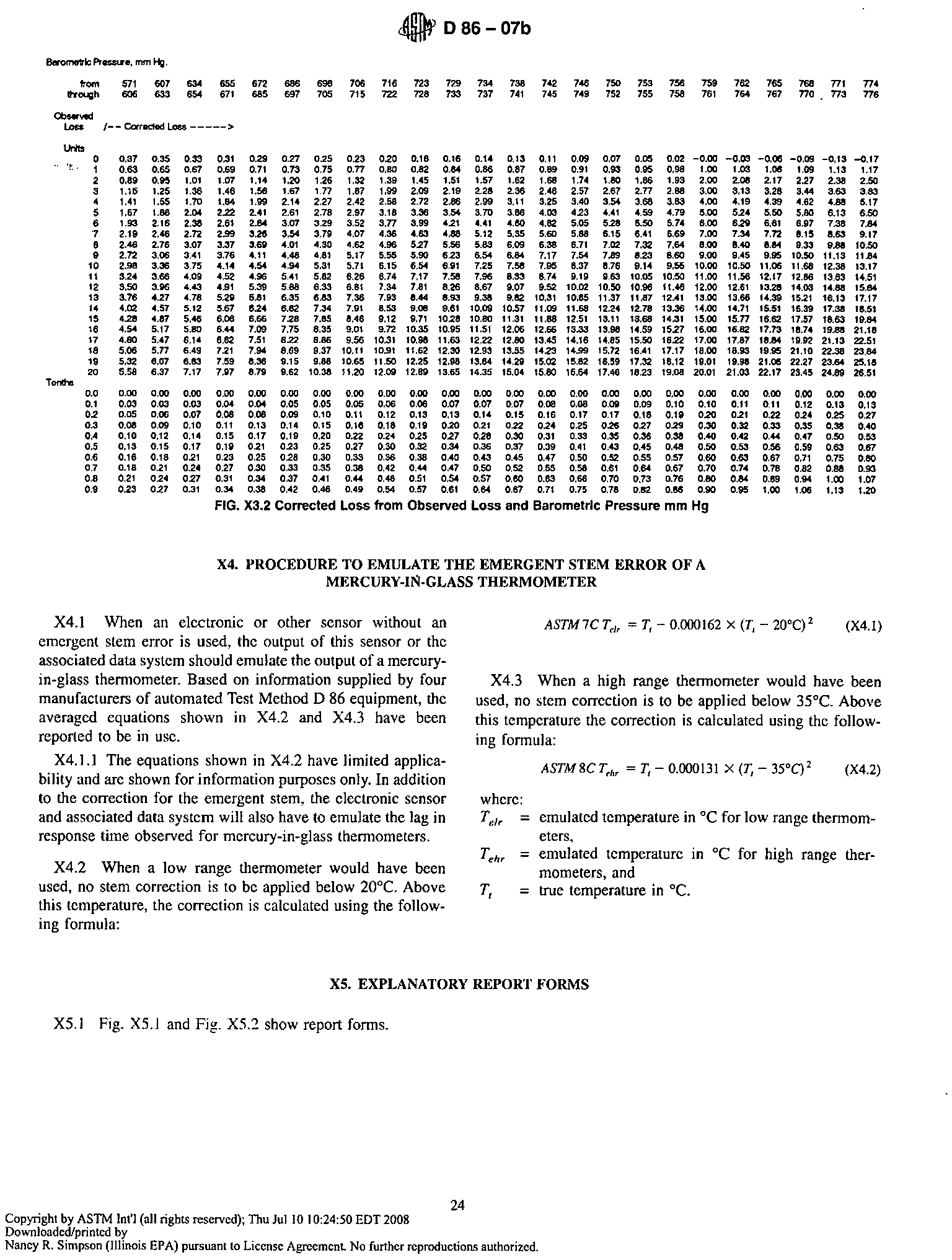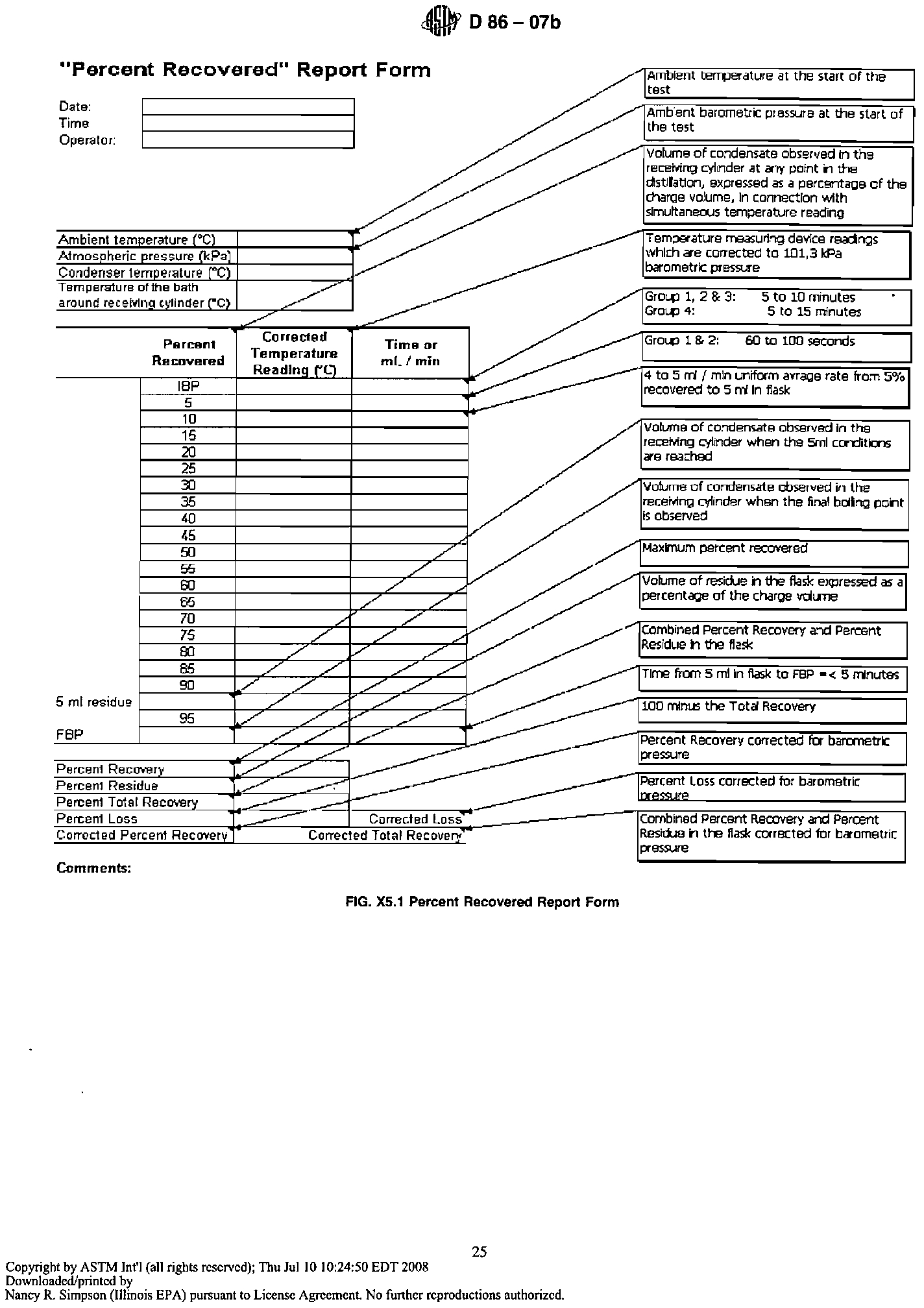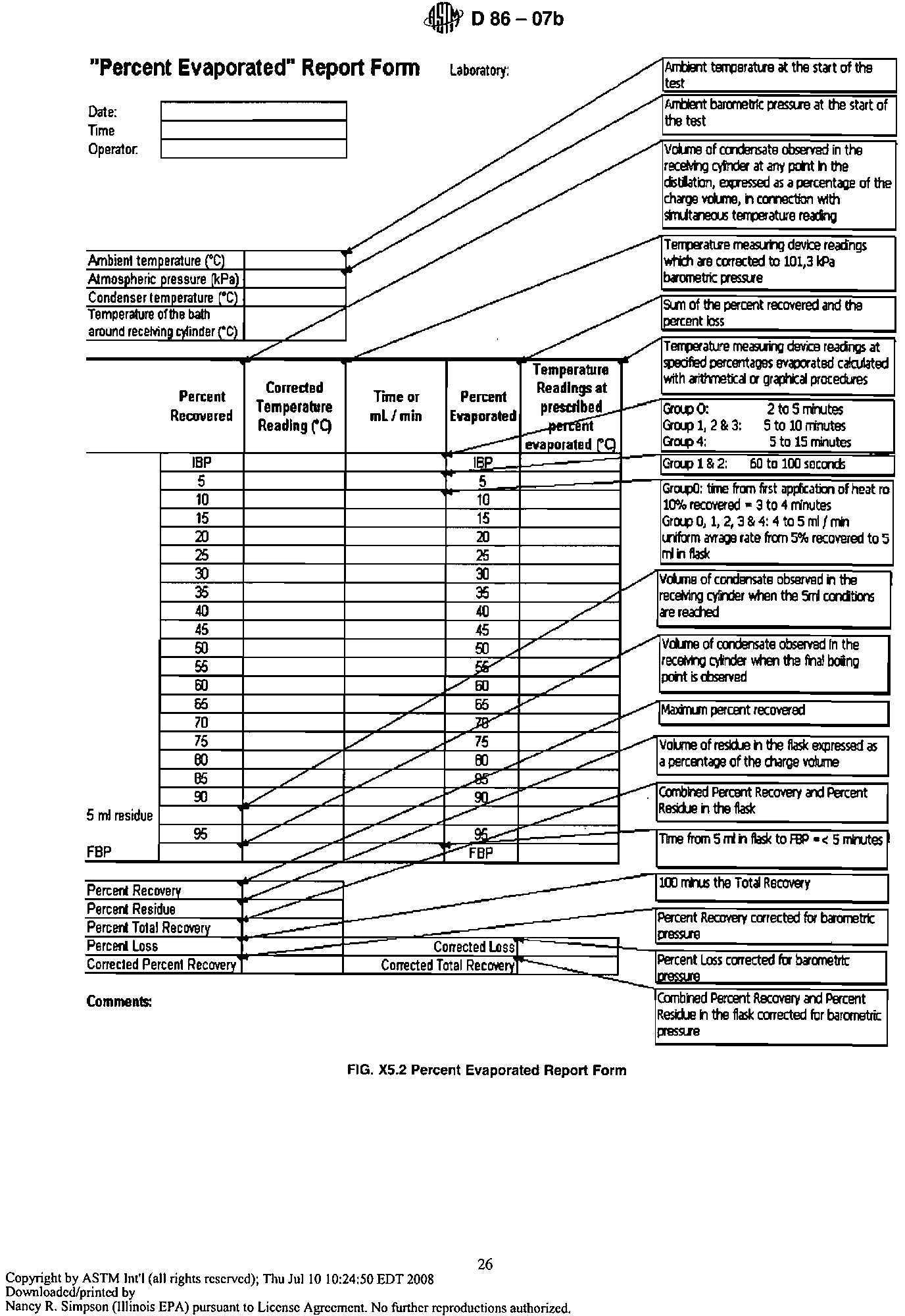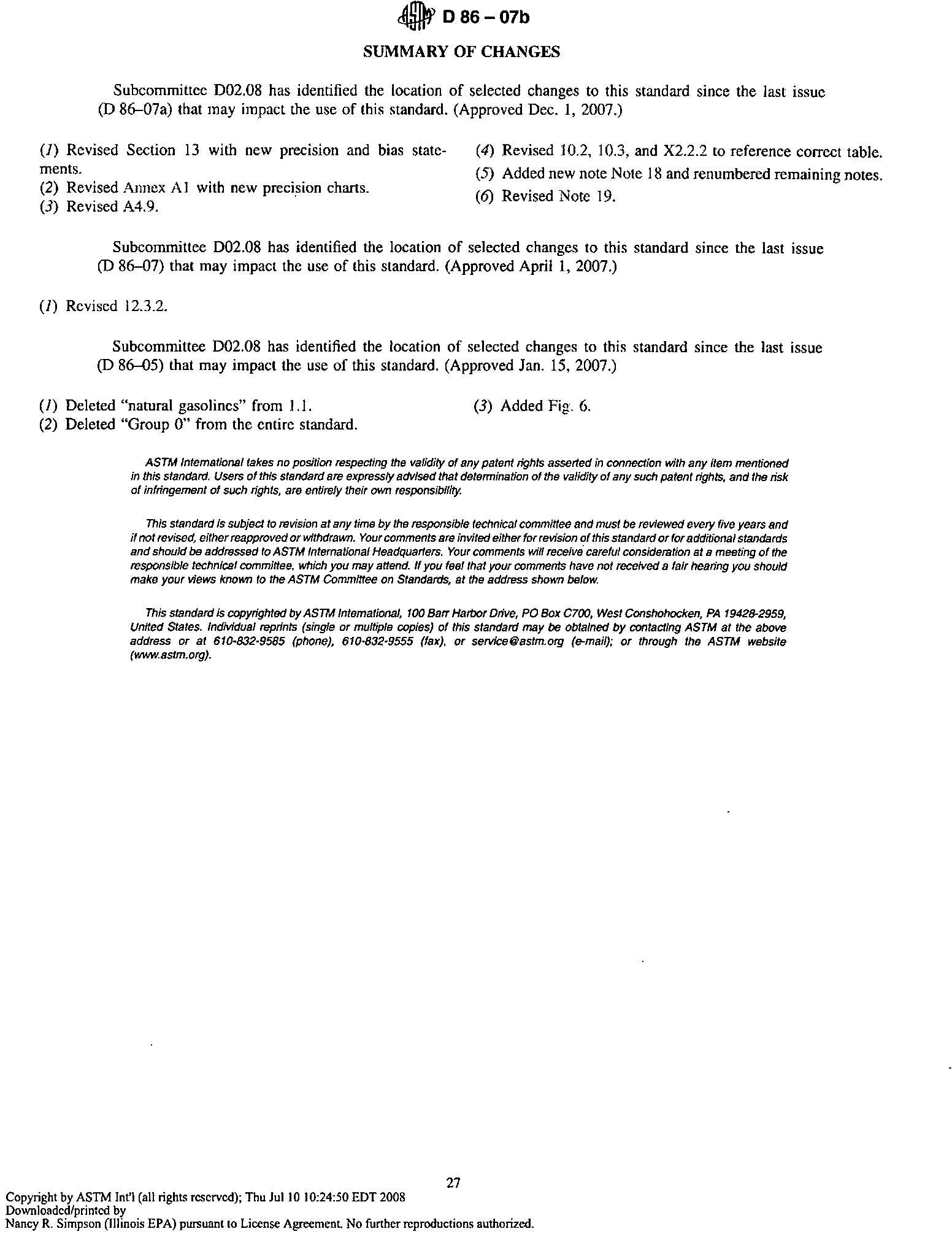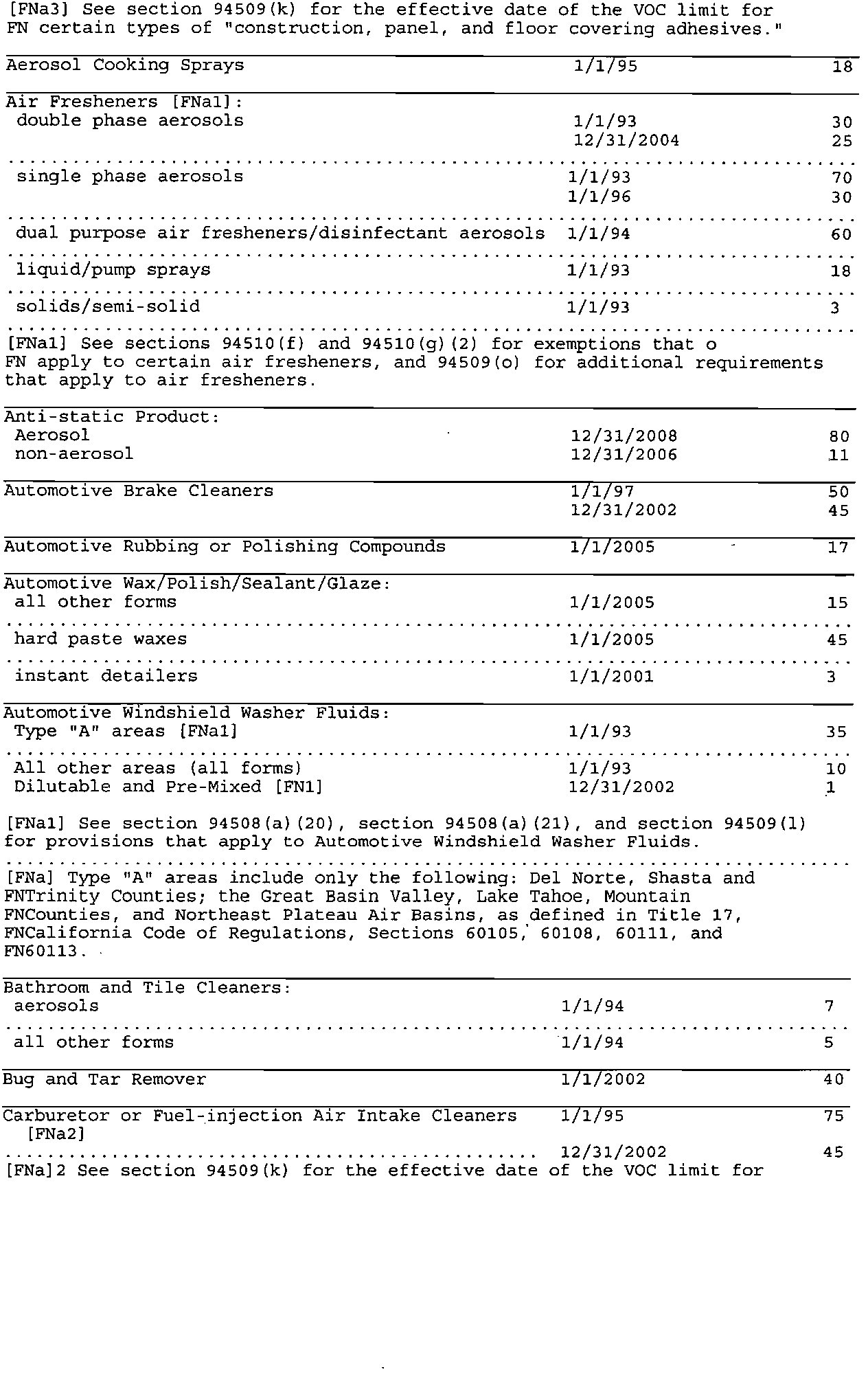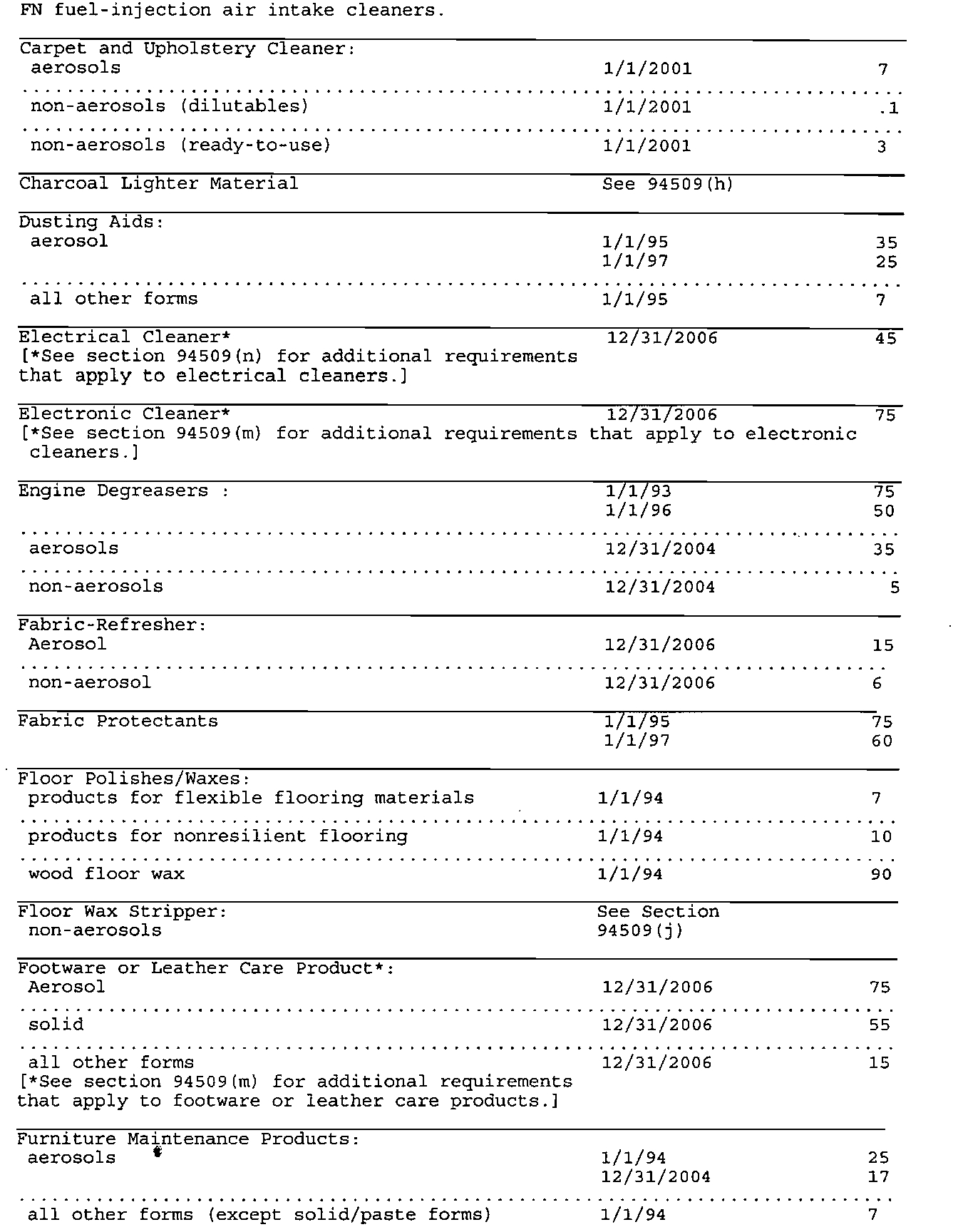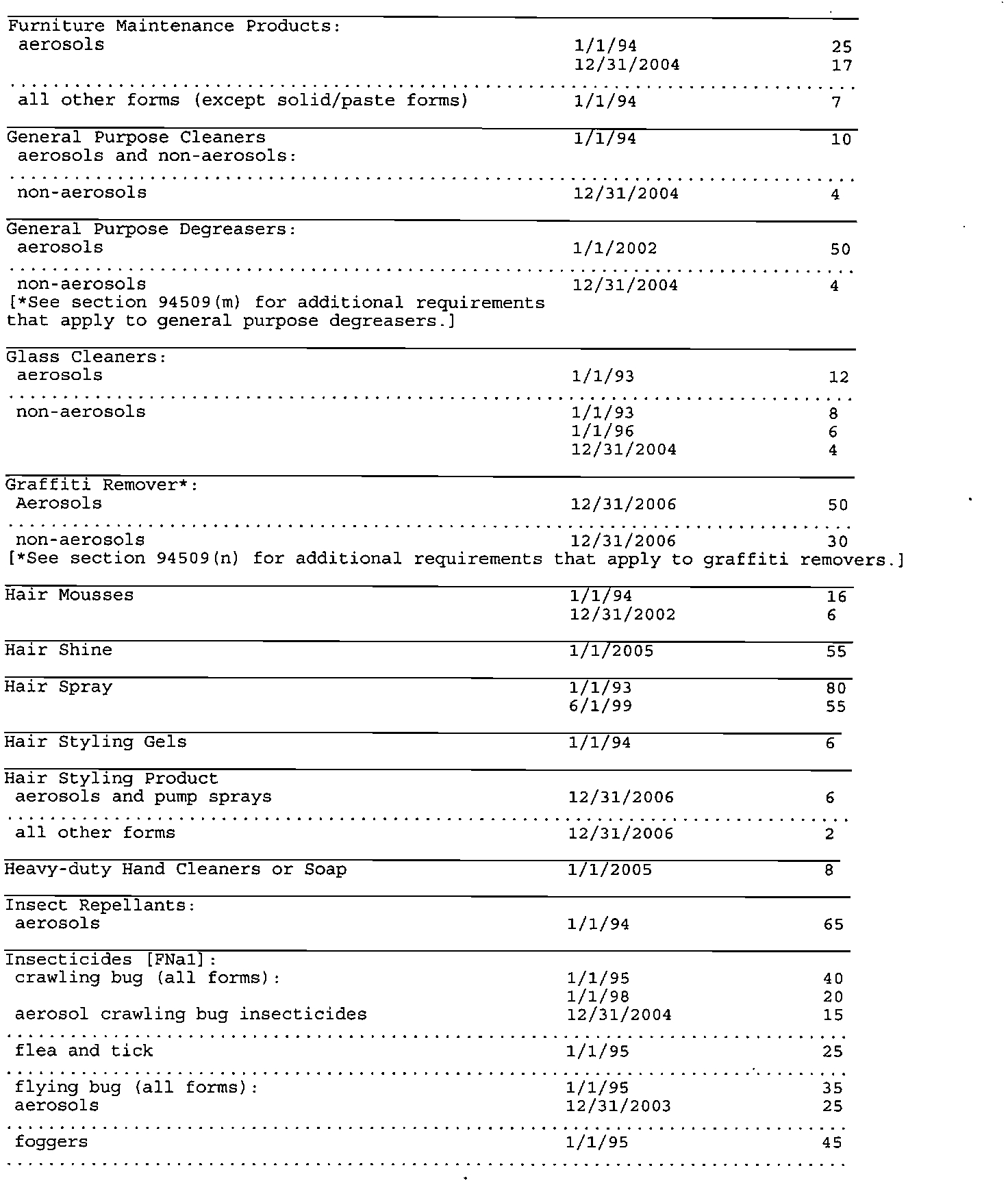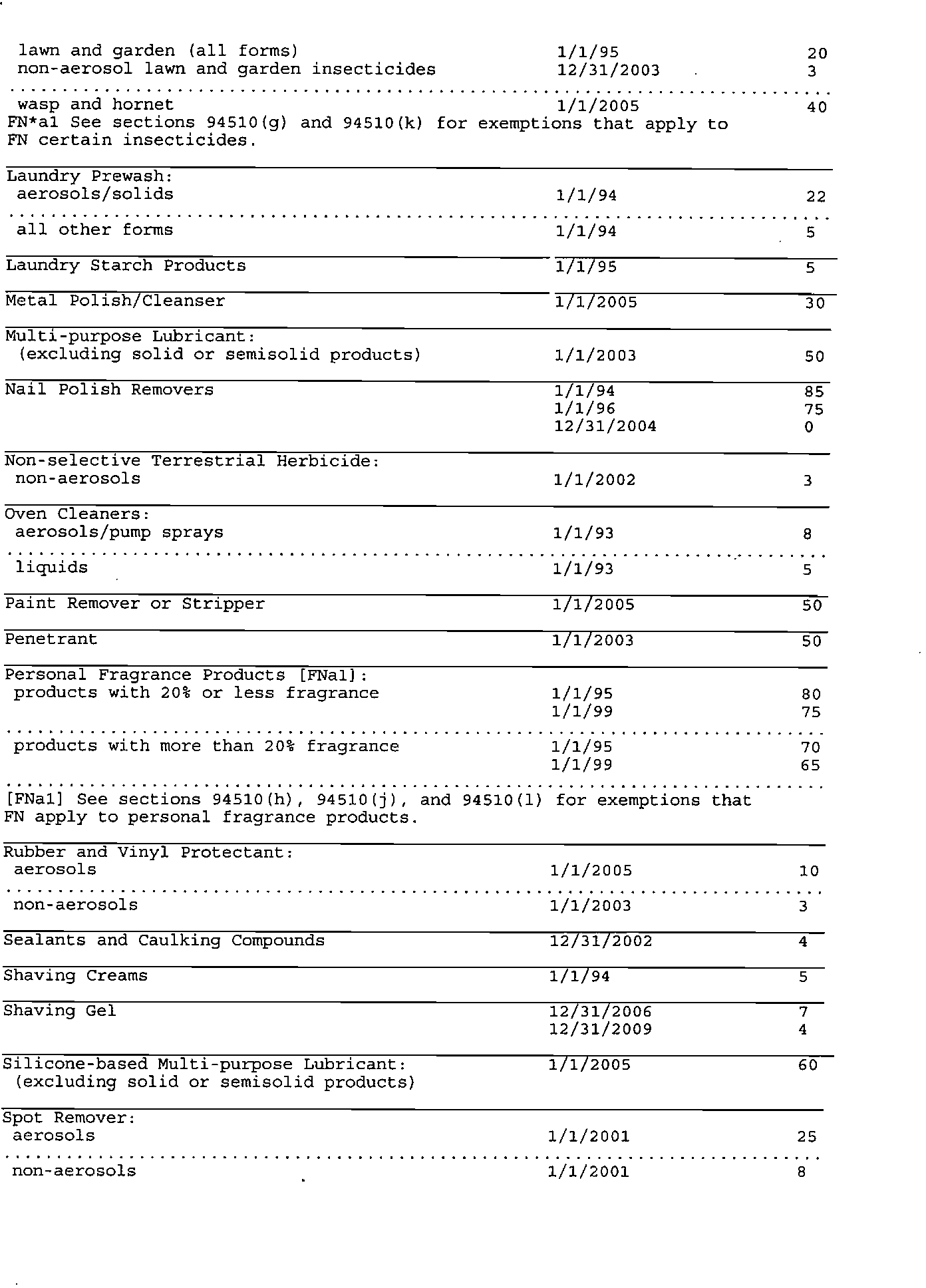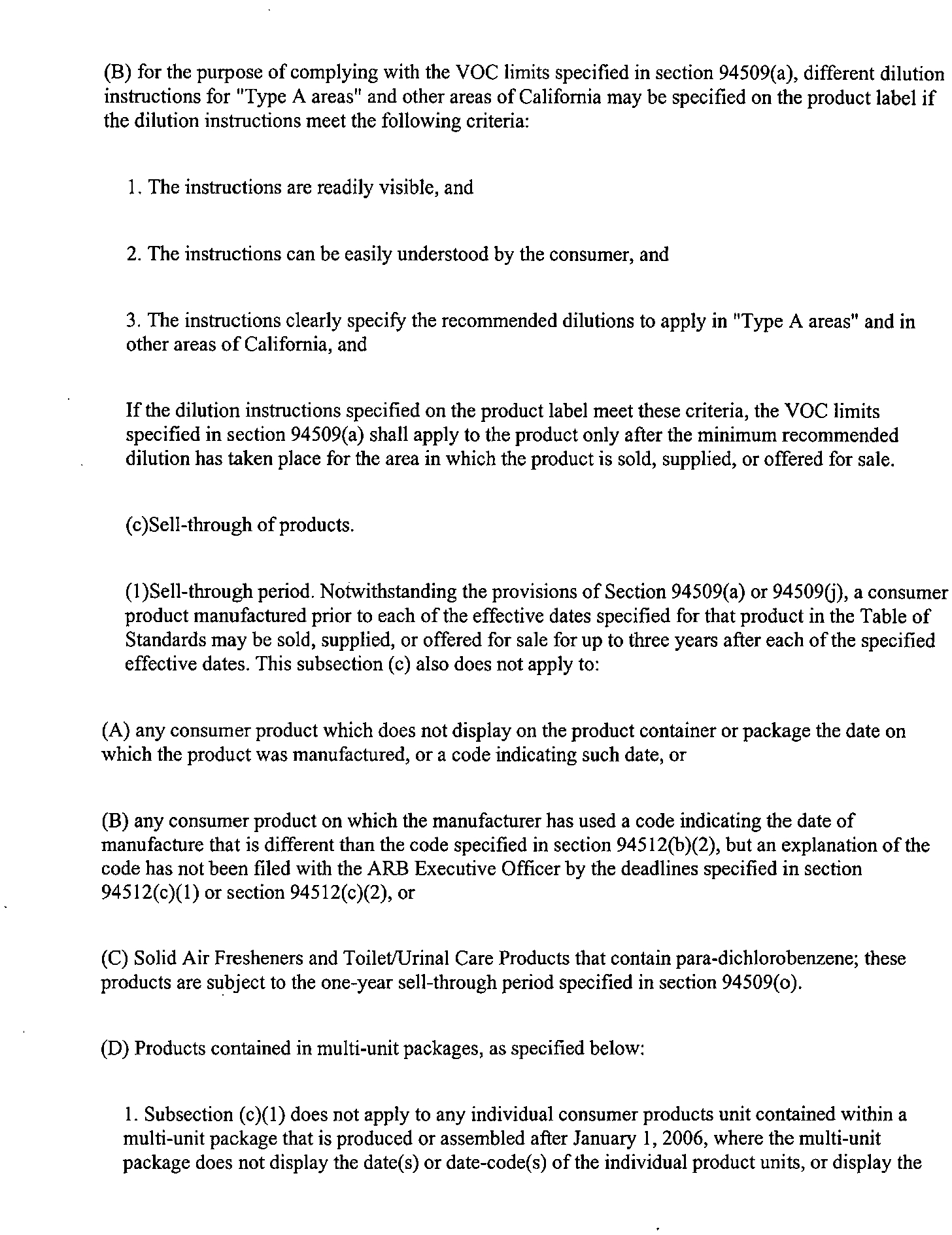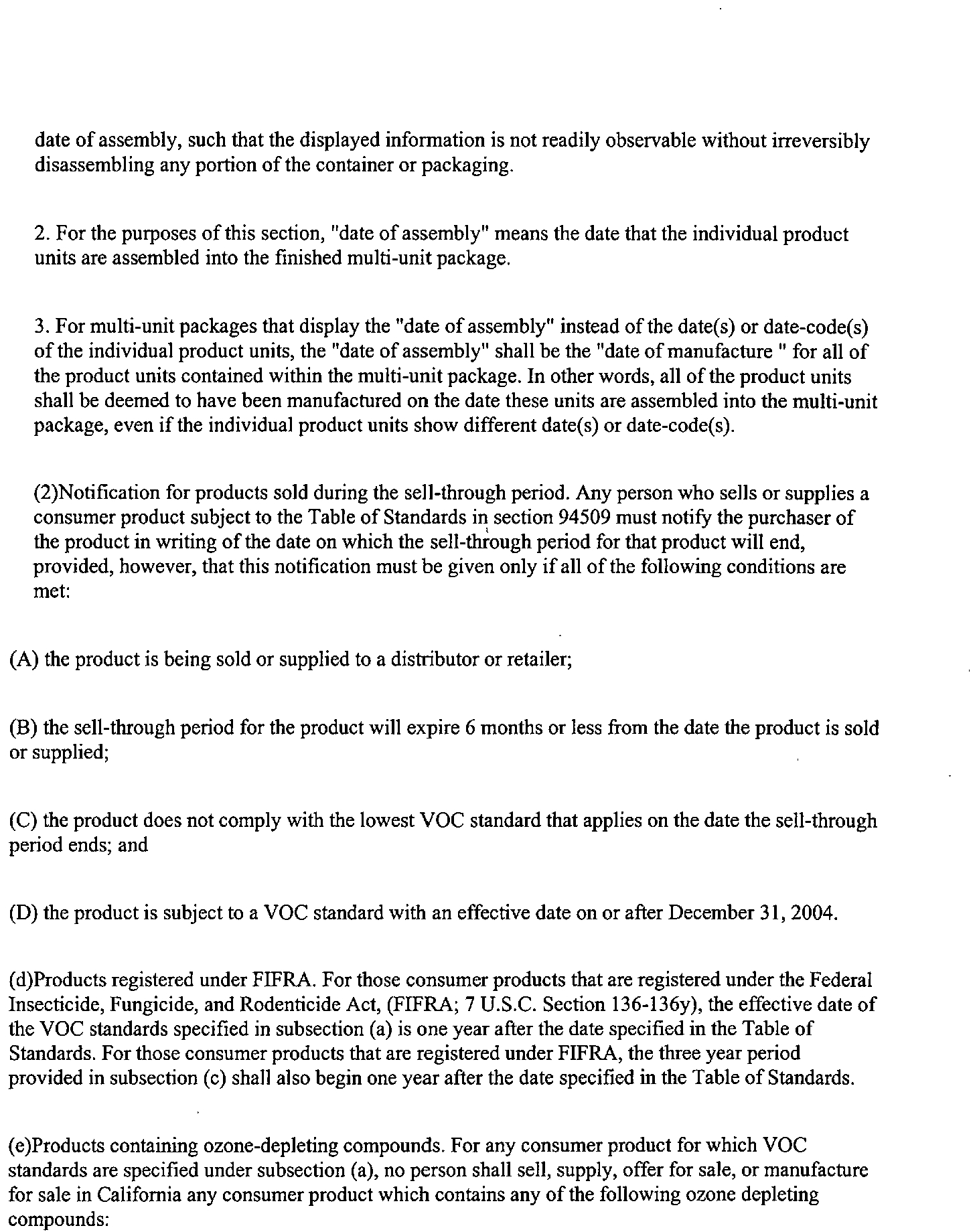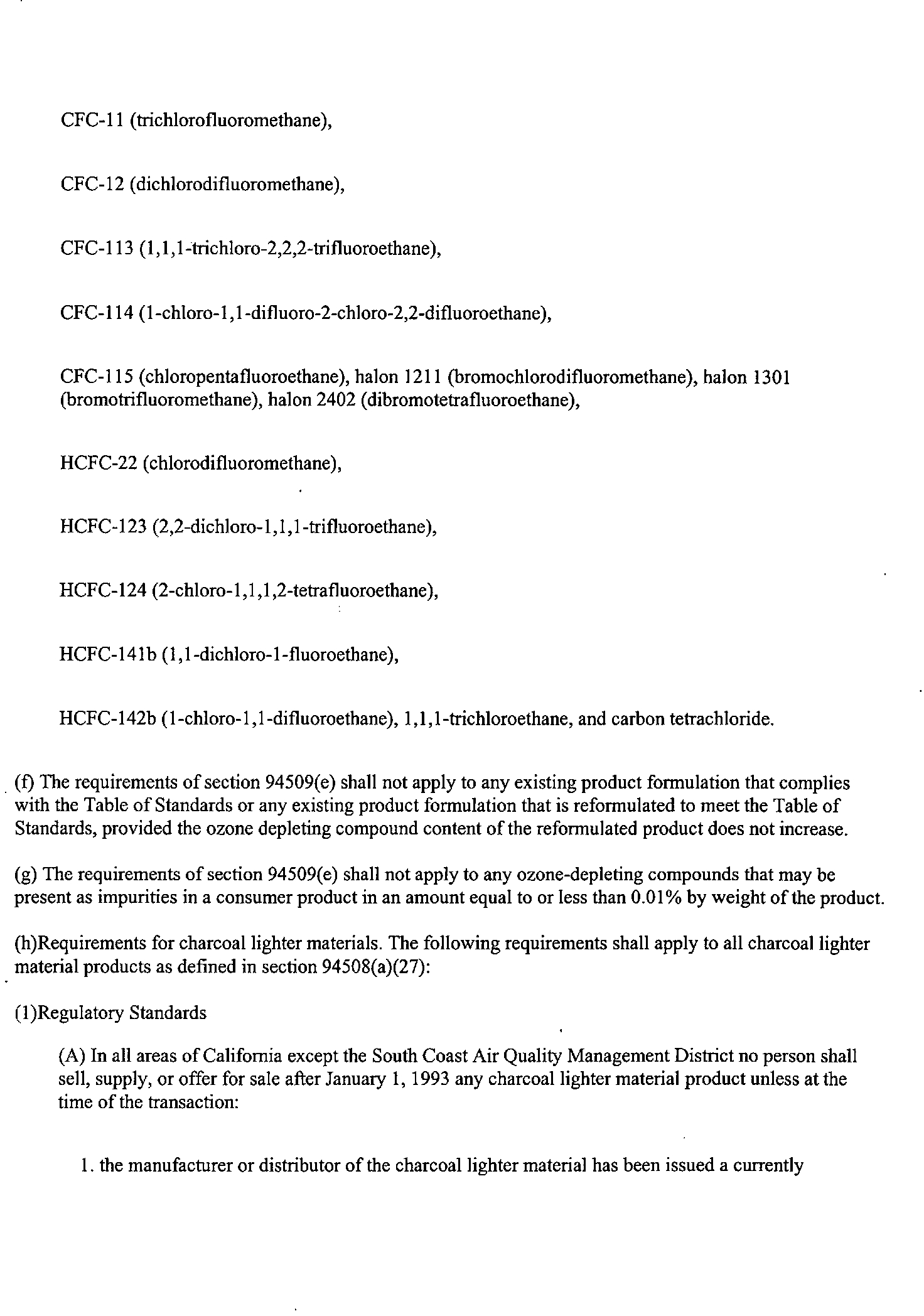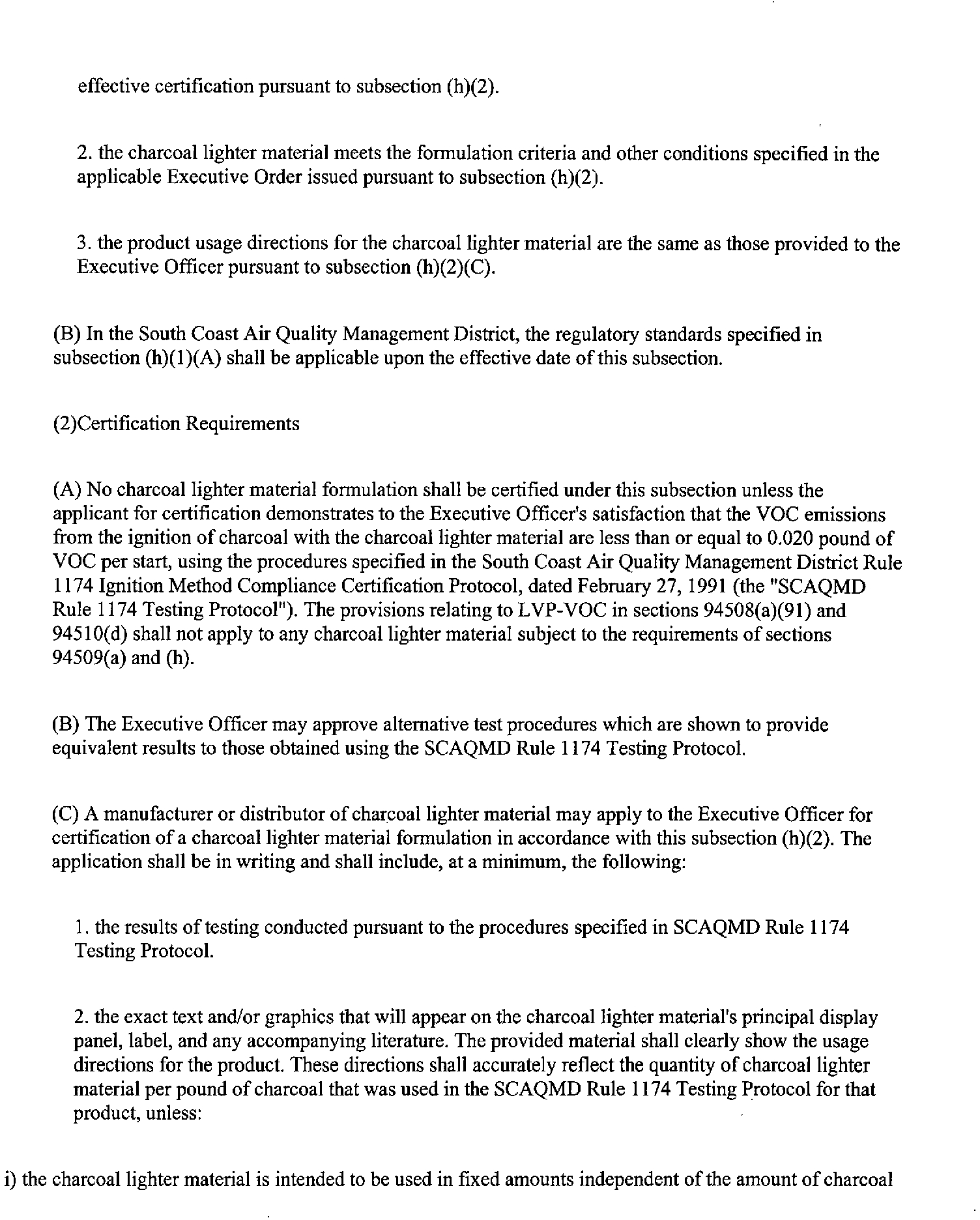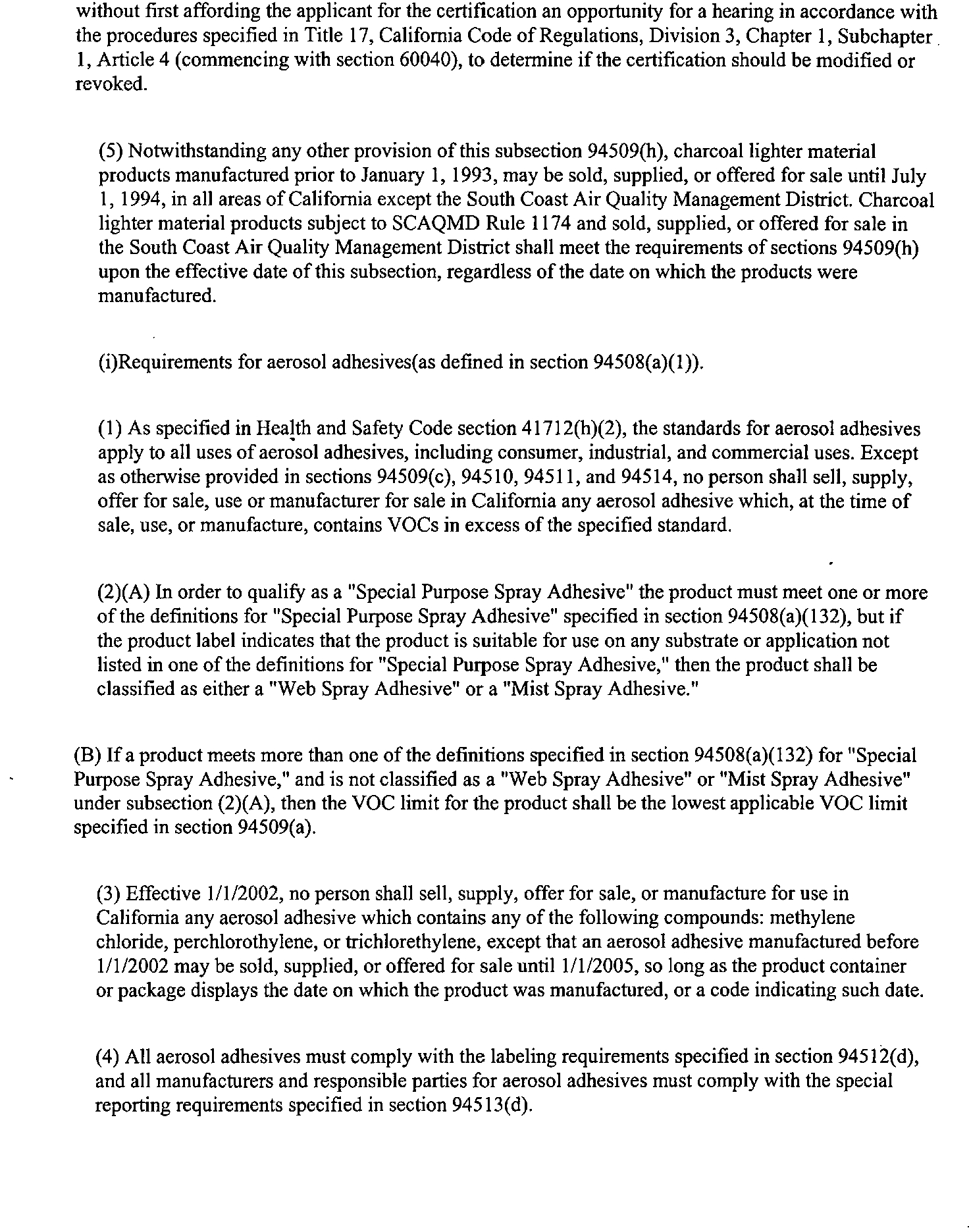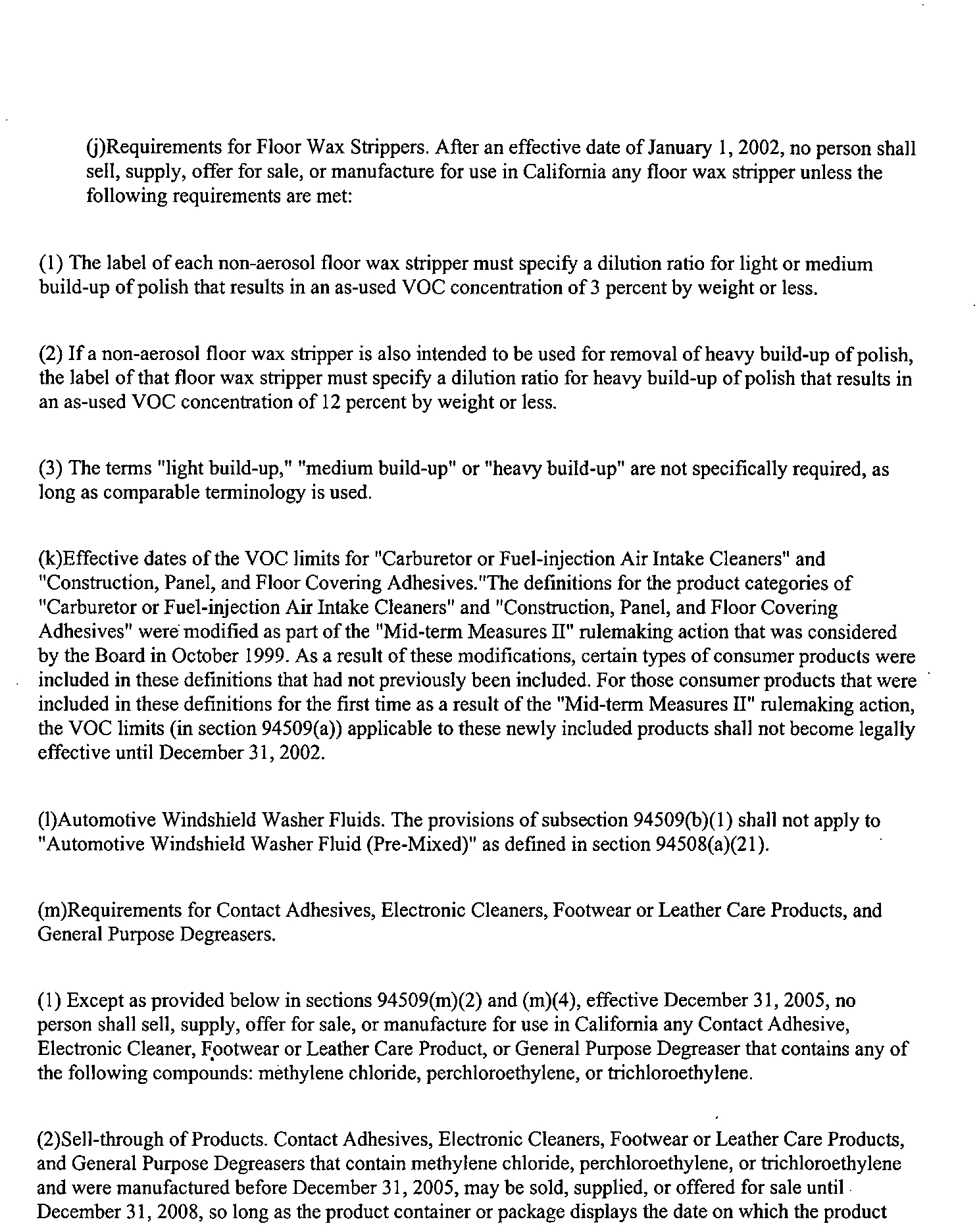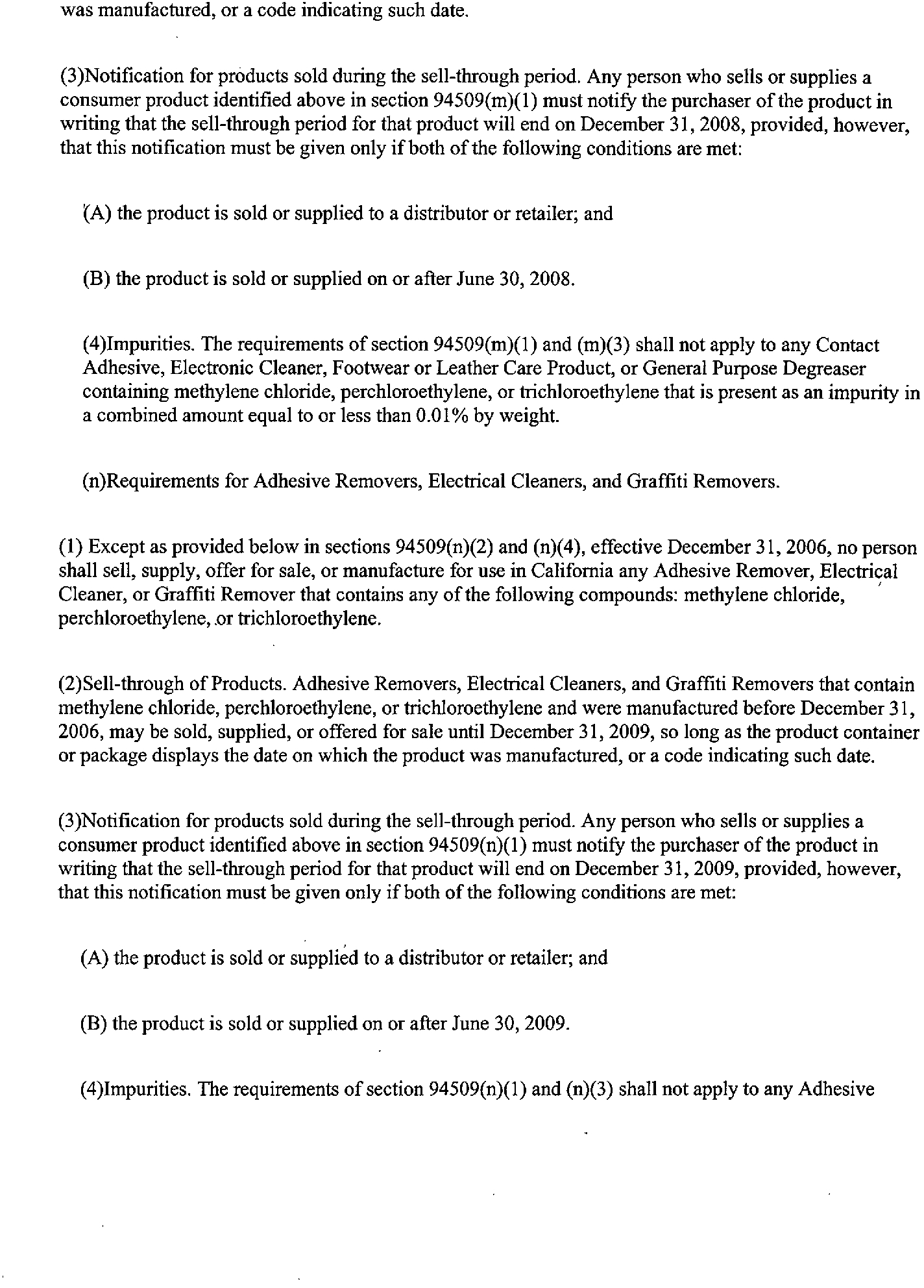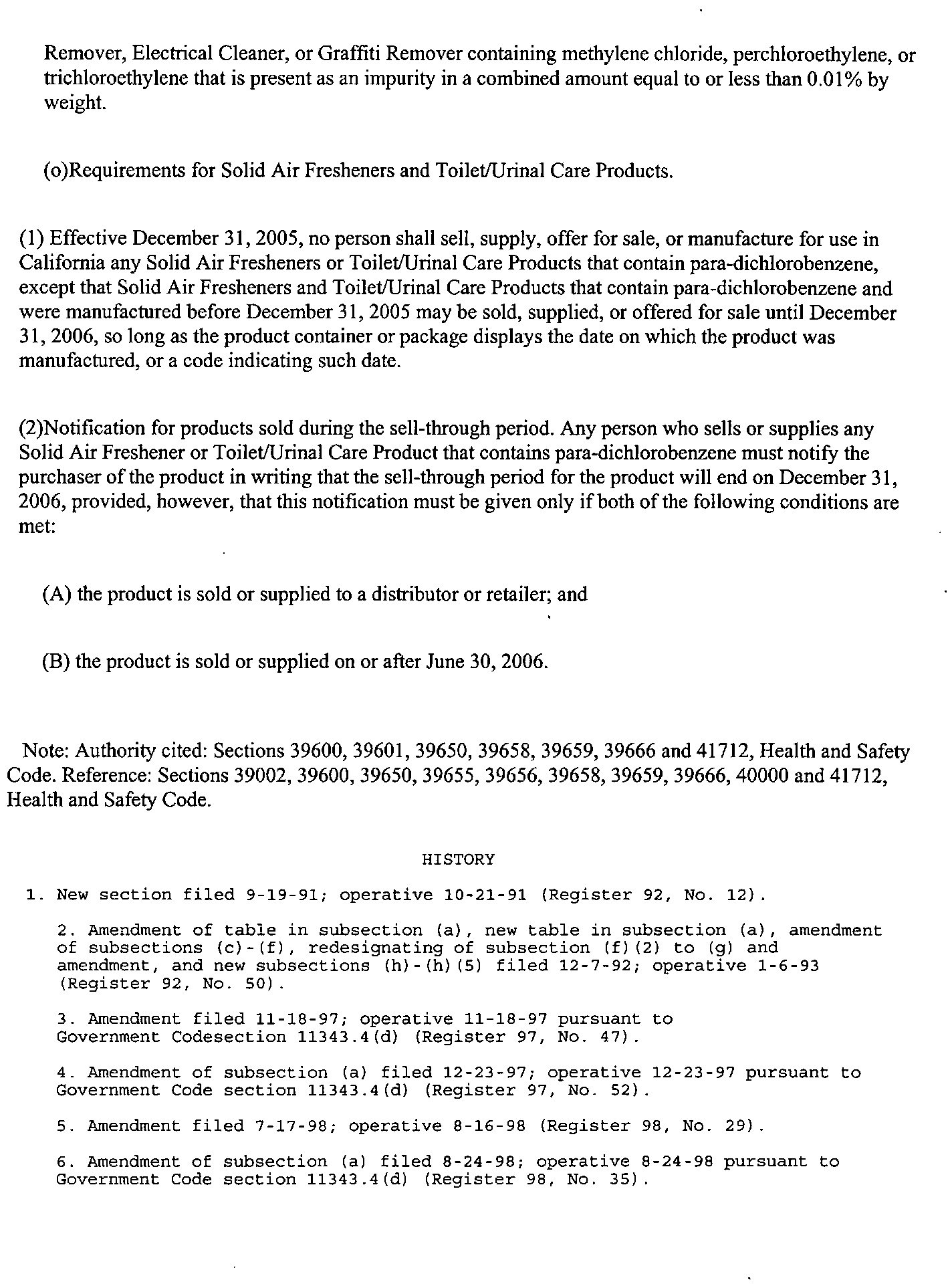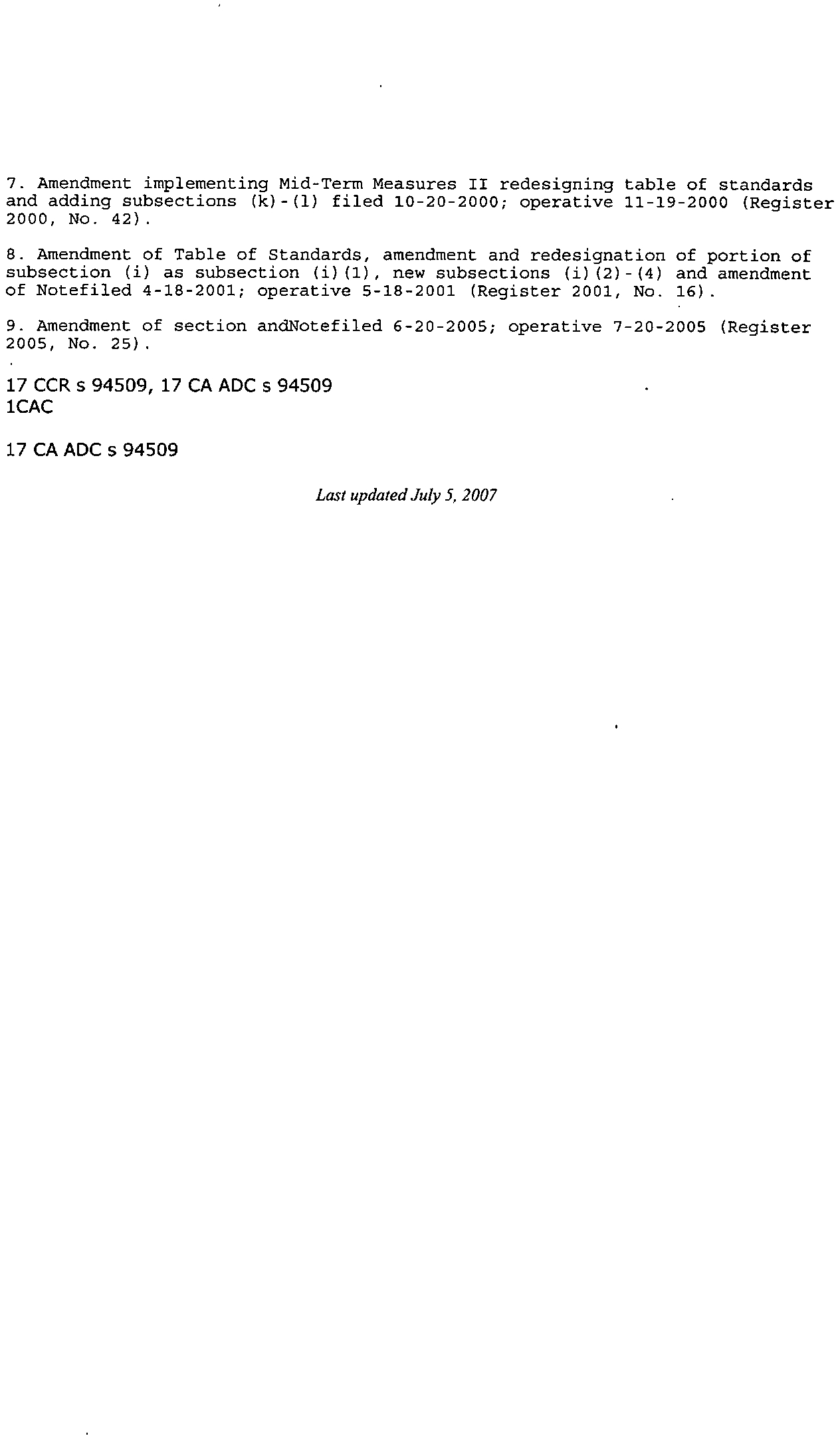BEFORE THE ILLINOIS POLLUTION CONTROL BOARD
IN THE MATTER OF:
)
)
PROPOSED NEW 35 ILL. ADM. CODE )
PART 223 STANDARDS AND
)
R08 - 017
LIMITATIONS FOR ORGANIC
)
(Rulemaking – Air)
MATERIAL EMISSIONS FOR AREA )
SOURCES
)
)
NOTICE
TO:
John Therriault, Assistant Clerk
Illinois Pollution Control Board
State of Illinois Center
100 West Randolph, Suite 11-500
Chicago, Illinois 60601
SEE ATTACHED SERVICE LIST
PLEASE TAKE NOTICE that I have today filed with the Office of the Pollution Control
Board the ILLINOIS ENVIRONMENTAL PROTECTION AGENCY’S THIRD ERRATA
SHEET TO ITS PROPOSAL FOR THE ADDITION OF 35 ILL. ADM. CODE 223 and the
ILLINOIS ENVIRONMENTAL PROTECTION AGENCY’S POST-HEARING COMMENTS
TO THE JUNE 4, 2008 HEARING ON THE PROPOSAL FOR THE ADDITION OF 35 ILL.
ADM. CODE 223 a copy of which is herewith served upon you.
ILLINOIS ENVIRONMENTAL
PROTECTION AGENCY
By: ______________________
Charles E. Matoesian
Assistant Counsel
Division of Legal Counsel
DATED: July 10, 2008
1021 North Grand Avenue East
Springfield, Illinois 62794-9276
217.782.5544
217.782.9143 (TDD)
Electronic Filing - Received, Clerk's Office, July 10, 2008
* * * * * * * Errata Sheet and PC #3 * * * * *
BEFORE THE ILLINOIS POLLUTION CONTROL BOARD
IN THE MATTER OF:
)
)
PROPOSED NEW 35 ILL. ADM. CODE )
PART 223 STANDARDS AND
)
R08 - 017
LIMITATIONS FOR ORGANIC
)
(Rulemaking – Air)
MATERIAL EMISSIONS FOR AREA )
SOURCES
)
)
ILLINOIS ENVIRONMENTAL PROTECTION AGENCY’S THIRD ERRATA
SHEET TO ITS PROPOSAL FOR THE ADDITION OF 35 ILL. ADM. CODE 223
NOW COMES the Illinois Environmental Protection Agency (“Illinois EPA”), by
and through its attorney Charles E. Matoesian, and submits this Third Errata Sheet to its
proposal for the addition of 35 Ill. Adm. Code 223. The Illinois EPA proposes the
following amendments to the text of the rules submitted in its proposal to the Board dated
January 2, 2008:
1. Amend Section 223.105 to clarify the abbreviations and acronyms. Several are no
longer necessary as Subpart D is being withdrawn.
Section 223.105
Abbreviations and Acronyms
Unless otherwise specified within this Part, the abbreviations used in this Part shall be the
same as those found in 35 Ill. Adm. Code 211. The following abbreviations and
acronyms are used in this Part:
ACP
Alternative Control Plan
Act
Environmental Protection Act [415 ILCS 5/1 et seq .]
Agency
Illinois Environmental Protection Agency
ASTM
American Society for Testing and Materials
BAAQMD
Bay Area Air Quality Management District
CARB
California Air Resources Board
o
C
Degrees Celsius
CFCs
Chlorofluorocarbons
CO
2
Carbon Dioxide
o
F
Degrees Fahrenheit
FDA
United States Food and Drug Administration
Electronic Filing - Received, Clerk's Office, July 10, 2008
* * * * * * * Errata Sheet and PC #3 * * * * *
FIFRA
Federal Insecticide, Fungicide, and Rodenticide Act, 7 U.S.C. §§136
through 136y
FRP
Fiberglass reinforced plastic
HVOM
High Volatility Organic Material
HCFCs
Hydrochlorofluorocarbons
HFCs
Hydrofluorocarbons
LVP-VOM
Low Vapor Pressure – Volatile Organic Material
MIR
Maximum Incremental Reactivity
MVOM
Medium Volatility Organic Material
N
2
Nitrogen
N
2
O
Nitrous Oxide
OER
Original Equipment Manufacturer
PCBTF
Parachlorobenzotrifluoride
PWMIR
Product-Weighted Maximum Incremental Reactivity
ROC
Reactive Organic Compound
ROG
Reactive Organic Gas
SCAQMD
South Coast Air Quality Management District
USEPA
United States Environmental Protection Agency
ULKR
Upper-Limit Kinetic Reactivity
ULMIR
Upper-Limit Maximum Incremental Reactivity
ULMR
Upper-Limit Mechanistic Reactivity
VOM
Volatile Organic Material
2. Amend Section 223.120 to clarify the incorporations by reference. Several
inconsistencies were inadvertently included in the proposed rule.
Section 223.120
Incorporations by Reference
The following materials are incorporated by reference. These incorporations do not
include any later amendments or editions.
a)
40 CFR 59, Subpart D, Appendix A, Determination of Volatile Matter
Content of Methacrylate Multicomponent Coatings Used as Traffic
Marking Coatings, 64 Fed. Reg. 35002 (June 30, 1999).
b)
40 CFR 59, Subpart C, National Volatile Organic Compound Emission
Standards for Consumer Products, 69 Fed. Reg. 18803 (April 4, 2004).
c)
40 CFR 60, Appendix A, Method 24, Determination of Volatile Matter
Content, Water Content, Density, Volume Solids, and Weight Solids of
Surface Coatings, 36 Fed. Reg. 24877 (December 23, 1971).
d)
40 CFR 82, Subpart A, Appendix A, Class I Controlled Substances, 68
Fed. Reg. 42892 (July 18, 2003) and Appendix B, Class II Controlled
Substances, 68 Fed. Reg. 2859 (January 21, 2003).
Electronic Filing - Received, Clerk's Office, July 10, 2008
* * * * * * * Errata Sheet and PC #3 * * * * *
e)
29 CFR 1910.1200(d)(4), Hazard Communication, 61 Fed. Reg. 9245,
(March 7, 1996).
f)
ASTM International, 100 Barr Harbor Drive, PO Box C700, West
Conshohocken, PA, 19428-2959 American Society for Testing and
Materials (ASTM), 1916 Race Street, Philadelphia, PA, 19103.
1)
ASTM E119-05a, Standard Test Methods for Fire Tests of Building
Construction and Materials, approved November 1, 2005.
2)
ASTM Designation D523-89(1999), Standard Test Method for
Specular Gloss, reapproved May 10, 1999.
3)
ASTM D 1640-03, Standard Test Methods for Drying, Curing, or
Film Formation of Organic Coatings at Room Temperature,
approved December 1, 2003.
4)
ASTM Method D 3912-95(2001), Test Method for Chemical
Resistance of Coating Used in Light-Water Nuclear Power Plants,
reapproved 2001.
5)
ASTM Method D 4082-02, Test Method for Effects of Radiation on
Coatings Used in Light-Water Nuclear Power Plants, approved
2002.
6)
ASTM Designation D4214-98, Standard Test Methods for
Evaluating the Degree of Chalking of Exterior Paint Films,
approved August 10, 1998.
7)
ASTM D1613-03, Standard Test Method for Acidity in Volatile
Solvents and Chemical Intermediates Used in Paint, Varnish,
Lacquer, and Related Products, approved October 1, 2003.
8)
ASTM E84-07, Standard Test Method for Surface Burning
Characteristics of Building Materials, approved 2007.
9)
ASTM D4359-90(2006), Standard Test Method for Determining
Whether a Material is a Liquid or a Solid, reapproved
2006.
10)
ASTM E260-96(2006), Standard Practice for Packed Column Gas
Chromatography, reapproved 2006.
11)
ASTM D5043-04, Standard Test Methods for Field Identification of
Coatings, approved 2004.
Electronic Filing - Received, Clerk's Office, July 10, 2008
* * * * * * * Errata Sheet and PC #3 * * * * *
11)12) ASTM E2167-01, “Standard Guide for Selection and Use of Stone
Consolidants” (see section 4, Stone Consolidant), approved 2001.
12)13)
ASTM C836-06, Specification for High Solids Content, Cold
Liquid-Applied Elastomeric Waterproofing Membrane for Use with
Separate Wearing Course, approved 2006.
13)
ASTM D86-07b
,
Standard Test Method for Distillation of
Petroleum Products at Atmospheric Pressure, approved 2007
g)
South Coast Air Quality Management District
,
21865 Copley Dr., Diamond
Bar CA 91765.
1)
South Coast Air Quality Management District (SCAQMD) Method
304-91, Determination of Volatile Organic Compounds in Various
Materials, revised February 1996.
h)
2)
SCAQMD Method 303-91, Determination of Exempt Compounds,
revised February 1993.
i)
3)
SCAQMD Method 318-95, Determination of Weight Percent
Elemental Metal in Coatings by X-Ray Diffraction, approved
August 10, 1998.
j)
h)
Bay Area Air Quality Management, District Office, 939 Ellis Street, San
Francisco, CA 94109.
1)
Bay Area Air Quality Management District (BAAQMD) Method
43, Determination of Volatile Methylsiloxanes in Solvent-Based
Coatings, Inks, and Related Materials, amended May 18, 2005.
k)
2)
BAAQMD Method 41, Determination of Volatile Organic
Compounds in Solvent-Based Coatings and Related Materials
Containing Parachlorobenzotrifluoride, amended May 18, 2005.
i)l)
California Air Resources Board (CARB) Method 310, Determination of
Volatile Organic Compounds in Consumer Products and Reactive Organic
Compounds in Aerosol Coating Products, amended May 5, 2005.
California Air Resources Board
,
1001 I Street, P.O. Box 2815, Sacramento,
CA 95812
Electronic Filing - Received, Clerk's Office, July 10, 2008
* * * * * * * Errata Sheet and PC #3 * * * * *
j)m)
SCAQMD Rule 1174, Ignition Method Compliance Certification Protocol
(February 27, 1991).
k)n)
Cal. Admin. Code title 17 § 94509(h), Standards for Consumer Products
(2005).
l)o)
California Code, Health and Safety Code, § 41712(h)(2) (2005).
m)p)
Cal. Admin. Code title 17, Article 4, Alternate Control Plan §§ 94540-
94555, (1996).
n)q)
Cal. Admin. Code title 17 § 94511, Innovative Products (1997).
o)r)
Cal. Admin. Code title 17 § 94503.5, Innovative Products (1996).
p)s)
7 USC 136 to 136y, FIFRA, Environmental Pesticide Control, published
January 19, 2004, in Supplement III of the 2000 Edition of the United
States Code.
q)t)
Federal Specification MMM-A-181D, Adhesives, Phenol, Resorcinol, or
Melamine Base (1980).
3. Amend Section 223.203 to clarify the definitions of certain words. Several
clarifications need to be made.
“Colorant” means for purposes of this Subpart Subpart B, any pigment or coloring
material used in a consumer product for an aesthetic effect, or to dramatize an
ingredient. For purposes of Subpart C, “Colorant” means a concentrated pigment
dispersion in water, solvent, and/or binder that is added to an architectural coating
after packaging in sale units to produce the desired color.
“Lacquer” means for purposes of Subparts B and C of
this Subpart, a clear or
opaque wood coating, including clear lacquer sanding sealers, formulated with
cellulosic or synthetic resins to dry by evaporation without chemical reaction and
to provide a solid, protective film. For purposes of Subpart D of this Part,
“Lacquer” means a thermoplastic film-forming material dissolved in organic
solvent, which dries primarily by solvent evaporation, and is resoluble in its
original solvent.
“Liquid” means a substance or mixture of substances which is capable of a visually
detectable flow as determined under ASTM D-4359-90
ASTM
D-4359-90(2000)e1, including any subsequent amendments or an equivalent
method approved by the California Air Resources Board. This does not include
powders or other materials that are composed entirely of solid particles.
Electronic Filing - Received, Clerk's Office, July 10, 2008
* * * * * * * Errata Sheet and PC #3 * * * * *
“Solid” means a substance or mixture of substances which, either whole or
subdivided (such as the particles comprising a powder), is not capable of visually
detectable flow as determined under ASTM D-4359-90(2000)e1, or an equivalent
method approved by the California Air Resources Board.
“Special Purpose Spray Adhesive” means an aerosol adhesive that meets any of the
following definitions:
“Mounting Adhesive” means an aerosol adhesive designed to permanently
mount photographs, artwork, and any other drawn or printed media to a
backing (paper, board, cloth, etc.) without causing discoloration to the
artwork.
“Flexible vinyl adhesive” means an aerosol adhesive designed to bond
flexible vinyl to substrates. Flexible vinyl means a nonrigid polyvinyl
chloride plastic with at least five percent, by weight, of plasticizer content.
A plasticizer is a material, such as a high boiling point organic solvent, that
is incorporated into a plastic to increase its flexibility, workability, or
distensibility, and may be determined using ASTM Method E260-96
ASTM Method E260-91, or from product formulation data or an equivalent
method approved by the CARB.
“Polystyrene Foam Adhesive” means an aerosol adhesive designed to bond
polystyrene foam to substrates.
“Automobile Headliner Adhesive” means an aerosol adhesive designed to
bond together layers in motor vehicle headliners.
“Polyolefin Adhesive” means an aerosol adhesive designed to bond
polyolefins to substrates.
“Laminate Repair/Edgebanding Adhesive” means an aerosol adhesive
designed for:
The touch-up or repair of items laminated with high pressure
laminates (e.g., lifted edges, delaminates, etc.); or
The touch-up, repair, or attachment of edgebanding materials,
including but not limited to, other laminates, synthetic marble,
veneers, wood molding, and decorative metals.
For the purposes of this definition “high pressure laminate” means
sheet materials which consist of paper, fabric, or other core material
that have been laminated at temperatures exceeding 265 degrees F,
and at pressures between 1,000 and 1,400 psi.
Electronic Filing - Received, Clerk's Office, July 10, 2008
* * * * * * * Errata Sheet and PC #3 * * * * *
“Automotive Engine Compartment Adhesive” means an aerosol adhesive
designed for use in motor vehicle under-the-hood applications which
require oil and plasticizer resistance, as well as high shear strength, at
temperatures of 200 - 275 degrees F.
“VOM Content” means, for purposes of Subpart B of this Subpart, except for
charcoal lighter products, the total weight of VOM in a product expressed as a
percentage of the product weight (exclusive of the container or packaging), as
determined pursuant to Section 223.285(a) and (b).
4. Amend Section 223.208 to strike the second reference to Section 223.207. The citation
was inadvertently repeated in the proposed rule.
Section 223.208
Requirements for Aerosol Adhesives
a)
As specified in California Code section 41712(h)(2), incorporated by
reference in Section 223.120, the standards for aerosol adhesives apply to
all uses of aerosol adhesives, including consumer, industrial, and
commercial uses. Except as otherwise provided in Sections 223.207,
223.230, 223.240, 223.245, and 223.207, no person shall sell, supply, offer
for sale, use or manufacture for sale in Illinois any aerosol adhesive which,
at the time of sale, use, or manufacture, contains VOMs in excess of the
specified standard.
5. Amend Section 223.250 to clarify the Product Dating requirements. The requirement
that the date code be displayed 12 months prior to the effective date of the rule was
inadvertently left in the proposed rule.
Section 223.250
Product Dating
a)
Each manufacturer of a consumer product subject to Section 223.205(a)
shall clearly display on each consumer product container or package, the
day, month, and year on which the product was manufactured, or a code
indicating such date.
b)
A manufacturer who uses the following code to indicate the date of
manufacture shall not be subject to the requirements of Section 223.255(a),
if the code is represented separately from other codes on the product
container so that it is easily recognizable:
YY DDD = year year day day day
Where:
YY = Two digits representing the year in which the product was
manufactured,
Electronic Filing - Received, Clerk's Office, July 10, 2008
* * * * * * * Errata Sheet and PC #3 * * * * *
DDD = Three digits representing the day of the year on which the product
was manufactured, with “001” representing the first day of the year,
“002” representing the second day of the year, and so forth (i.e., the
“Julian date”)
c)
This date or code shall be displayed on each consumer product container or
package no later than twelve months prior to the effective date of the
applicable standard specified in Section 223.205(a).
d)
The date or datecode information shall be located on the container or inside
the cover/cap so that it is readily observable or obtainable by simply
removing the cap/cover without irreversibly disassembling any part of the
container or packaging. For the purposes of this subsection, information
may be displayed on the bottom of a container as long as it is clearly legible
without removing any product packaging.
e)
The requirements of this Section 223.250 shall not apply to products
containing no VOMs (as defined in Section 223.203), or containing VOMs
at 0.10% by weight or less.
6. Amend Section 223.255 to clarify the Product Dating requirements. The requirement
that the date code be displayed 12 months prior to the effective date of the rule was
inadvertently left in the proposed rule.
Section 223.255
Additional Product Dating Requirements
a)
If a manufacturer uses a code other than specified in 223.250(b) indicating
the date of manufacture for any consumer product subject to Section
223.205(a), an explanation of the date portion of the code must be filed
with the Agency no later than 12 months prior to the effective date of the
applicable standard specified in Section 223.205.
b)
If a manufacturer changes any code indicating the date of manufacture for
any consumer product subject to Section 223.255(a), an explanation of the
modified code must be submitted to the Agency before any products
displaying the modified code are sold, supplied, or offered for sale in
Illinois.
ac)
No person shall erase, alter, deface, or otherwise remove or make illegible
any date or code indicating the date of manufacture from any regulated
product container without the express authorization of the manufacturer.
No manufacturer shall affix a date-code that is not true for the date the item
was manufactured.
Electronic Filing - Received, Clerk's Office, July 10, 2008
* * * * * * * Errata Sheet and PC #3 * * * * *
bd)
Date code explanations for codes indicating the date of manufacture are
public information and may not be claimed as confidential.
7. Amend Section 223.285 (c) and (e) to correct the citation to the ASTM and reconcile it
with the version which was incorporated by reference.
c) Testing to determine whether a product is a liquid or solid shall be performed using
ASTM D4359-90 (2000)e1
, which is incorporated by reference in Section 223.120
or an equivalent method approved by the CARB.
e) Testing to determine distillation points of petroleum distillate-based charcoal
lighter materials shall be performed using ASTM D86-07b, 2007
, ASTM D86-04b,
2004 edition, which is incorporated by reference in Section 223.120 or an
equivalent method approved by the CARB.
8. Amend Section 223.307 to correct certain misspellings in definitions and ASTM
references. These errors were inadvertently left in the rule. An “s” was inadvertently
added to the word “born” in the definition of “Calcamine Recoaters.”
“Calcamine Recoaters” means a flat solvent borns
coatings formulated and
recommended specifically for recoating calcamine-painted ceilings and other
calcamine-painted substrates.
“Fire-Retardant Coating” means a coating labeled and formulated to retard ignition
and flame spread, that has been fire tested and rated by a testing agency approved
by building code officials for use in bringing building and construction materials
into compliance with federal, state, and local building code requirements. The
fire-retardant coating and the testing agency must be approved by building code
officials. The fire-retardant coating shall be tested in accordance with ASTM
Designation E 84-07
84-99, incorporate by reference in Section 223.120.
“Nuclear Coating” means a protective coating formulated and recommended to seal
porous surfaces such as steel (or concrete) that otherwise would be subject to
intrusions by radioactive materials. These coatings must be resistant to long-term
(service life) cumulative radiation exposure [ASTM Method D 4082-02 4082-89],
relatively easy to decontaminate, and resistant to various chemicals to which the
coatings are likely to be exposed [ASTM Method D 3912-95
3912-80].
“VOM Content” means the weight of VOM per volume of coating, calculated
according to the procedures specified in subsection 223.340(a)
223.400(a).
“Varnish” means a clear or semi-transparent wood coating, excluding lacquers and
shellacs, formulated to dry by chemical reaction on exposure to air. Varnishes may
contain small amounts of pigment to color a surface, or to control the final
fetal
Electronic Filing - Received, Clerk's Office, July 10, 2008
* * * * * * * Errata Sheet and PC #3 * * * * *
sheen or gloss of the finish.
9. Amend Section 223.307 to add the definitions of certain words. Several clarifications
need to be made.
“Colorant” means for purposes of this Subpart, “Colorant” means a concentrated
pigment dispersion in water, solvent, and/or binder that is added to an architectural
coating after packaging in sale units to produce the desired color.
“Lacquer” means for purposes of this Subpart, a clear or opaque wood coating,
including clear lacquer sanding sealers, formulated with cellulosic or synthetic
resins to dry by evaporation without chemical reaction and to provide a solid,
protective film.
“Concrete surface retarder” means a mixture of retarding ingredients such as
extender pigments, primary pigments, resin, and solvent that interact chemically
with the cement to prevent hardening on the surface where the retarder is applied,
allowing the retarded mix of cement and sand at the surface to be washed away to
create an exposed aggregate finish."
10.
Amend Section 310(a) to include “Concrete Surface Retarder” under the most
restrictive limit subsection of the rule at the appropriate place. This was
inadvertently omitted from the proposal.
11a.
Concrete Surface Retarder
780g/l
(6.5)
11.
Amend Section 310(c) to include “Concrete Surface Retarder” under the most
restrictive limit subsection of the rule at the appropriate place. This was
inadvertently omitted from the proposal.
21.
Concrete Surface Retarder
12. Amend Section 223.370 to clarify that the various test methods specified were
incorporated by reference. The notation was inadvertently omitted from the proposed
rule.
a)
Flame Spread Index. The flame spread index of a fire-retardant coating
shall be determined by the ASTM Designation E 84-07 84-99, “Standard
Test Method for Surface Burning Characteristics of Building Materials,”
(see Section 223.307, Fire-Retardant Coating) or an equivalent method
approved by the CARB.
e)
Acid Content of Coatings. The acid content of a coating shall be
determined by ASTM Designation D 1613-03
1613-96, “Standard Test
Method for Acidity in Volatile Solvents and Chemical Intermediates Used
Electronic Filing - Received, Clerk's Office, July 10, 2008
* * * * * * * Errata Sheet and PC #3 * * * * *
in Paint, Varnish, Lacquer and Related Products,” as incorporated by
reference in Section 223.120, (see Section 223.307, Pre-Treatment Wash
Primer) or an equivalent method approved by the CARB.
f)
Drying Times. The set-to-touch, dry-hard, dry-to-touch and dry-to-recoat
times of a coating shall be determined by ASTM Designation D 1640-03
1640-95, “Standard Methods for Drying, Curing, or Film Formation of
Organic Coatings at Room Temperature,” as incorporated by reference in
Section 223.120, (see Section 223.307, QuickDry Enamel and Quick-Dry
Primer, Sealer, and Undercoater). The tack free time of a quick-dry enamel
coating shall be determined by the Mechanical Test Method of ASTM
Designation D 1640-03 1640-95 or an equivalent method approved by the
CARB.
h)
Exempt Compounds – Siloxanes. Exempt compounds that are cyclic,
branched, or linear, completely methylated siloxanes, shall be analyzed as
exempt compounds for compliance with Section 223.340 by BAAQMD
Method 43, “Determination of Volatile Methylsiloxanes in Solvent-Based
Coatings, Inks, and Related Materials,” BAAQMD Manual of Procedures,
Volume III, adopted May18, 2005 November 6, 1996, as incorporated by
reference in Section 223.120, (see Section 223.307, VOM content Volatile
Organic Material, and subsection 223.340(b)).
i)
Exempt Compounds - Parachlorobenzotrifluoride (PCBTF). The exempt
compound parachlorobenzotrifluoride, shall be analyzed as an exempt
compound for compliance with Section 223.400 by BAAQMD Method 41,
“Determination of Volatile Organic Compounds in Solvent-Based Coatings
and Related Materials Containing Parachlorobenzotrifluoride,” BAAQMD
Manual of Procedures, Volume III, adopted May 18, 2005 December 20,
1995, as incorporated by reference in Section 223.120, (see Section
223.307, VOM content
Volatile Organic Material, and subsection
223.340(b)).
m)
Methacrylate Traffic Marking Coatings. The VOM content of methacrylate
muticomponent coatings used as traffic marking coatings shall be analyzed
by the procedures in 40 CFR part 59, subpart D, appendix A,
“Determination of Volatile Matter Content of Methacrylate
Multicomponent Coatings Used as Traffic Marking Coatings,” (June 30,
1999 September 11, 1998), as incorporated by reference in Section 223.120,
(see subsection 223.360) or an equivalent method approved by the CARB.
13.
Strike the whole of Subpart D from the rule, including references in the index to the
rule. The USEPA has promulgated an identical rule concerning “Aerosol Coatings”
thus mooting the proposed Subpart D.
Electronic Filing - Received, Clerk's Office, July 10, 2008
* * * * * * * Errata Sheet and PC #3 * * * * *
SUBPART D: AEROSOL COATINGS
Section
223.400
Purpose
223.405
Applicability
223.407
Definitions for Subpart D
223.410
Limits and Requirements for Aerosol Coating Products
223.420
Exemptions
223.430
Most Restrictive Limit
223.440
Labeling Requirements
223.450
Reporting Requirements
223.460
Test Methods
***
SUBPART D: AEROSOL COATINGS
Section 223.400
Purpose
The purpose of this Subpart is to limit emissions of volatile organic materials (VOMs) by
requiring reductions in the VOM content of Aerosol Coating products.
Section 223.405
Applicability
This Subpart shall apply to any person who sells, supplies, offers for sale, applies, or
manufactures aerosol coating products for use in the state of Illinois, except as provided in
Section 223.420.
Section 223.407 Definitions for Subpart D
The definitions
contained in this Section apply only to the provisions of this Subpart.
Unless otherwise defined herein, the definitions of terms used in this Subpart shall have
the meanings specified for those terms in 35 Ill. Adm. Code Part 211.
“Adhesive” means a product used to bond one surface to another.
“Aerosol Coating Product” means a pressurized coating product containing
pigments or resins that dispenses product ingredients by means of a propellant, and
is packaged in a disposable can for hand-held application or for use in specialized
equipment for ground traffic/marking applications.
“Anti-Static
Spray” means a product used to prevent or inhibit the accumulation of
static electricity.
Electronic Filing - Received, Clerk's Office, July 10, 2008
* * * * * * * Errata Sheet and PC #3 * * * * *
“Art Fixative or Sealant” means a clear coating, including art varnish, workable art
fixative, and ceramic coating, which is designed and labeled exclusively for
application to paintings, pencil, chalk, or pastel drawings, ceramic art pieces, or
other closely related art uses, in order to provide a final protective coating or to fix
preliminary stages of artwork while providing a workable surface for subsequent
revisions.
“Auto Body Primer” means an automotive primer or primer surfacer coating
designed and labeled exclusively to be applied to a vehicle body substrate for the
purposes of corrosion resistance and building a repair area to a condition in which,
after drying, it can be sanded to a smooth surface.
“Automotive Bumper and Trim Product” means a product, including adhesion
promoters and chip sealants, designed and labeled exclusively to repair and refinish
automotive bumpers and plastic trim parts.
“Automotive Underbody Coating” means a flexible coating which contains asphalt
or rubber and is designed and labeled exclusively for use on the underbody of
motor vehicles to resist rust, abrasion and vibration, and to deaden sound.
“
Aviation Propeller Coating” means a coating designed and labeled exclusively to
provide abrasion resistance and corrosion protection for aircraft propellers.
“Aviation or Marine Primer” means a coating designed and labeled exclusively to
meet federal specification TT-P-1757.
“Base Reactive Organic Gas Mixture” (Base ROG Mixture) means the mixture of
reactive organic gases utilized in deriving the MIR scale.
“Belt Dressing” means a product applied on auto fan belts, water pump belting,
power transmission belting, and industrial and farm machinery belting to prevent
slipping, and to extend belt life.
“Cleaner” means a product designed and labeled primarily to remove soil or other
contaminants from surfaces.
“Clear Coating” means a coating which is colorless, containing resins but no
pigments except flatting agents, and is designed and labeled to form a transparent
or translucent solid film.
“Coating Solids” means the nonvolatile portion of an aerosol coating product,
consisting of the film forming ingredients, including pigments and resins.
“Commercial Application” means the use of aerosol coating products in the
production of goods, or the providing of services for profit, including touch-up and
repair.
Electronic Filing - Received, Clerk's Office, July 10, 2008
* * * * * * * Errata Sheet and PC #3 * * * * *
“Corrosion Resistant Brass, Bronze, or Copper Coating” means a clear coating
designed and labeled exclusively to prevent tarnish and corrosion of uncoated
brass, bronze, or copper metal surfaces.
“Distributor” means any person to whom a consumer
product is sold or supplied
for the purposes of resale or distribution in commerce, except that manufacturers,
retailers, and consumers are not distributors.
“Dye” means a product containing no resins which is used to color a surface or
object without building a film.
“Electrical Coating” means a coating designed and labeled exclusively as such,
which is used exclusively to coat electrical components such as wire windings on
electric motors to provide insulation and protection from corrosion.
“Enamel” means a coating which cures by chemical cross-linking of its base resin
and is not resoluble in its original solvent.
“Engine Paint” means a coating designed and labeled exclusively to coat engines
and their components.
“Exact Match Finish, Engine Paint” means a coating which meets all of the
following criteria:
The product is designed and labeled exclusively to exactly match the
color of an original, factory-applied engine paint;
The product is labeled with the manufacturer's name for which they
were formulated; and
The product is labeled with one of the following:
The original equipment manufacturer's (O.E.M.) color code
number;
The color name; or
Other designation identifying the specific O.E.M. color to the
purchaser.
“Exact Match Finish, Automotive” means a topcoat which meets all of the
following
criteria:
Electronic Filing - Received, Clerk's Office, July 10, 2008
* * * * * * * Errata Sheet and PC #3 * * * * *
The product is designed and labeled exclusively to exactly match the
color of an original, factory-applied automotive coating during the
touch-up of automobile finishes;
The product is labeled with the manufacturer's name for which they
were formulated; and
The product is labeled with one of the following:
The original equipment manufacturer's (O.E.M.) color code
number;
The color name; or
Other designation identifying the specific O.E.M. color to the
purchaser. Not withstanding the foregoing, automotive clear
coatings designed and labeled exclusively for use over
automotive exact match finishes to replicate the
original
factory applied finish shall be
considered to be automotive
exact match finishes.
“Exact Match Finish, Industrial” means a coating which meets all of the following
criteria:
The product is designed and labeled exclusively to exactly match the color
of an original, factory-applied industrial coating during the touch-up of
manufactured products;
The product is labeled with the manufacturer's name for which they
were formulated; and
The product is labeled with one of the following:
The original equipment manufacturer's (O.E.M.) color code
number;
The color name; or
Other designation identifying the specific O.E.M. color to the
purchaser.
“Flat Paint Products” means a coating which,
when fully dry, registers specular
gloss less than or equal to 15 on an 85
o
gloss meter, or less than or equal to five on
a 60
o
gloss meter, or which is labeled as a flat coating.
Electronic Filing - Received, Clerk's Office, July 10, 2008
* * * * * * * Errata Sheet and PC #3 * * * * *
“Flatting Agent” means a compound added to a coating to reduce the gloss of the
coating without adding color to the coating.
“Floral Spray” means a coating designed and labeled exclusively for use on fresh
flowers, dried flowers, or other items in a floral arrangement for the purposes of
coloring, preserving or protecting their appearance.
“Fluorescent Coating” means a coating labeled as such, which converts absorbed
incident light energy into emitted light of a different hue.
“Glass Coating” means a coating designed and labeled exclusively for use on glass
or other transparent material to create a soft, translucent light effect, or to create a
tinted or darkened color while retaining transparency.
“Ground Traffic/Marking Coating” means a coating designed and labeled
exclusively to be applied to dirt, gravel, grass, concrete, asphalt, warehouse floors,
or parking lots. Such coatings must be in a container equipped with a valve and
sprayhead designed to direct the spray toward the surface when the can is held in
an inverted vertical position.
“High-Temperature Coating” means a high performance coating, excluding engine
paint, labeled and formulated for application to substrates exposed continuously or
intermittently to temperatures above 204°C (400°F).
“Hobby/Model/Craft Coating” means a coating which is designed and labeled
exclusively for hobby applications and is sold in aerosol containers of six ounces
by weight or less.
“Ingredient” means a component of an aerosol coating product.
“Ink” means a fluid or viscous substance used in the printing industry to produce
letters, symbols or illustrations, but not to coat an entire surface.
“Lacquer” means a thermoplastic film-forming material dissolved in organic
solvent, which dries primarily by solvent evaporation, and is resoluble in its
original solvent.
“Layout Fluid” (or toolmaker's
ink) means a coating designed and labeled
exclusively to be sprayed on metal, glass or plastic, to provide a glare-free surface
on which to scribe designs, patterns or engineering guide lines prior to shaping the
piece.
“Leather preservative or
cleaner” means a leather treatment material applied
exclusively to clean or preserve leather.
Electronic Filing - Received, Clerk's Office, July 10, 2008
* * * * * * * Errata Sheet and PC #3 * * * * *
“Lubricant” means a substance such as oil, petroleum distillates, grease, graphite,
silicone, lithium, etc. that is used to reduce friction, heat, or wear when applied
between surfaces.
“Manufacturer” means any person who imports, manufactures, assembles,
produces, packages, repackages, or relabels a consumer product.
“Marine Spar Varnish” means a coating designed and labeled exclusively to
provide a protective sealant for marine wood products.
“Maskant” means a coating applied directly to a component to protect surface areas
when chemical milling, anodizing, aging, bonding, plating, etching, or performing
other chemical operations on the surface of the component.
“Maximum Incremental Reactivity” (MIR) means the maximum change in weight
of ozone formed by adding a compound to the “Base ROG Mixture” per weight of
compound added, expressed to hundredths of a gram (g O
3
/g ROC). MIR values
for individual compounds and hydrocarbon solvents are specified in Appendices A
and B to this Part.
“Metallic Coating” means a topcoat which contains at least 0.5 percent by weight
elemental metallic pigment in the formulation, including propellant, and is labeled
as “metallic”, or with the name of a specific metallic finish such as “gold,”
“silver,” or “bronze.”
“Mold Release” means a coating applied to molds to prevent products from
sticking to the surfaces of the mold.
“Multi-Component Kit” means an aerosol spray paint system which requires the
application of more than one component (e.g. foundation coat and top coat), where
both components are sold together in one package.
“Nonflat Paint Product” means a coating which, when fully dry, registers a
specular gloss greater than 15 on an 85
o
gloss meter or greater than five on a 60
o
gloss meter.
“Ozone” means a colorless gas with a pungent odor, having the molecular form O
3
.
“Percent VOM By Weight” means the ratio of the weight of VOM to the total
weight of the product contents expressed as follows:
Percent VOM By Weight = (W
VOM
/ W
total
) x 100
Where:
Electronic Filing - Received, Clerk's Office, July 10, 2008
* * * * * * * Errata Sheet and PC #3 * * * * *
For products containing no water and no volatile compounds exempt
from the definition of VOM: W
VOM
= the weight of volatile
materials;
For products containing water or exempt compounds: W
VOM
= the
weight of volatile compounds, less water, and less compounds
exempt
from the VOM definition in Section 223.407; and
W
total
= the total weight of the product contents.
“Photograph Coating” means a coating designed
and labeled exclusively to be
applied to finished photographs to allow corrective retouching, protection of the
image, changes in gloss level, or to cover fingerprints.
“Pleasure Craft” means privately owned vessels used for noncommercial purposes.
“Pleasure Craft Finish Primer/Surfacer/Undercoater” means a coating designed and
labeled exclusively to be applied prior to the application of a pleasure craft topcoat
for the purpose of corrosion resistance and adhesion of the topcoat, and which
promotes a uniform surface by filling in surface imperfections.
“Pleasure Craft Topcoat” means a coating designed and labeled exclusively to be
applied to a pleasure craft as a final coat above the waterline and below the
waterline when stored out of water. This category does not include clear coatings.
“Polyolefin Adhesion Promoter” means a coating designed and labeled exclusively
to be applied to a polyolefin or polyolefin copolymer surface of automotive body
parts, bumpers, or trim parts to provide a bond between the surface and subsequent
coats.
“Primer” means for purposes of this Part, a coating labeled and formulated for
application to a substrate to provide a firm bind between the substrate and
subsequent coats.
“Product-Weighted
MIR” (PWMIR) means the sum of all weighted-MIR for all
ingredients in a product subject to this article. The PWMIR is the total product
reactivity expressed to hundredths of a gram of ozone formed per gram of product
(excluding container and packaging) and calculated according to the following
equations:
Weighted MIR (Wtd-MIR) ingredient = MIR x Weight fraction
ingredient,
and,
Electronic Filing - Received, Clerk's Office, July 10, 2008
* * * * * * * Errata Sheet and PC #3 * * * * *
Product Weighted MIR = (Wtd-MIR)
1
+ (Wtd-MIR)
2
+…+ (Wtd-
MIR)
n
Where,
MIR = ingredient MIR, as specified in Section 223.410(m);
Wtd-MIR = MIR of each ingredient in a product multiplied by the
weight fraction of that ingredient, as shown in (a);
1,2,3,...,n = each ingredient in the product up to the total n ingredients
in the product.
“Propellant” means a liquefied or compressed
gas that is used in whole or in part to
expel a liquid or any other material from the same self-pressurized container or
from a separate container.
“Reactivity Limit” means the maximum “Product-Weighted MIR” allowed in an
aerosol coating product that is subject to the limits specified in Section 223.410(c)
for a specific category, expressed as g O
3
/g product.
“Reactive Organic Compound (ROC)” means any compound that has the potential,
once emitted, to contribute to ozone formation in the troposphere.
“Responsible Party” means the company, firm or establishment which is listed on
the product's label. If the label lists two companies, firms or establishments, the
responsible party is the party which the product was “manufactured for” or
“distributed by,” as noted on the label.
“Retailer” means any person who sells, supplies, or offers consumer products for
sale directly to consumers.
“Retail Outlet” means for purposes of this Part, any establishment at which
consumer products are sold, supplied, or offered for sale directly to consumers.
“Rust Converter” means a product designed and labeled exclusively to convert rust
to an inert material and which contains a minimum acid content of 0.5 percent by
weight, and a maximum coating solids content of 0.5 percent by weight.
“Shellac Sealer” means a clear or pigmented coating formulated solely with the
resinous secretion of the lac beetle (Laccifer lacca), thinned with alcohol, and
formulated to dry by evaporation without a chemical reaction.
“Slip-Resistant
Coating” means a coating designed and labeled exclusively as such,
which is formulated with synthetic grit and used as a safety coating.
Electronic Filing - Received, Clerk's Office, July 10, 2008
* * * * * * * Errata Sheet and PC #3 * * * * *
“Spatter Coating/Multicolor Coating” means a coating labeled exclusively as such
wherein spots, globules, or spatters of contrasting colors appear on or within the
surface of a contrasting or similar background.
“Stain” means a clear, semi-transparent, or opaque coating labeled and formulated
to change the color of a surface, but not conceal the grain pattern or texture.
“Upper-Limit Kinetic Reactivity” (ULKR) means the maximum percentage of the
emitted ROC which has reacted. For Subpart D, the ULKR is one hundred percent
and is used to calculate the ULMIR.
“Upper-Limit Mechanistic Reactivity” (ULMR) means the maximum gram(s) of
ozone formed per gram of reactive organic compound (ROC) reacting. The ULMR
is used to calculate the ULMIR.
“Upper-Limit
MIR” (ULMIR) means the upper-limit kinetic reactivity (ULKR)
multiplied by the upper-limit mechanistic reactivity (ULMR), as calculated using
the following equation:
ULMIR = Upper Limit KR x Upper Limit MR.
The units for ULMIR are g O
3
/g ROC.
“Vinyl/Fabric/Leather/Polycarbonate Coating” means a coating designed and
labeled exclusively to coat vinyl, fabric, leather, or polycarbonate substrates.
“Webbing/Veiling Coating” means a coating designed and labeled exclusively to
provide a stranded to spider webbed appearance when applied.
“Weight Fraction” means the weight of an ingredient divided by the total net
weight of the product, expressed to thousandths of a gram of ingredient per gram of
product (excluding container and packaging). The weight fraction is calculated
according to the following equation:
Weight Fraction =
Weight of the Ingredient
_______________________
Total Product Net Weight
(excluding container and packaging).
“Weld-Through
Primer” means a coating designed and labeled exclusively to
provide a bridging or conducting effect for corrosion protection following welding.
“Wood Stain” means a coating which is formulated to change the color of a wood
surface but not conceal the surface.
Electronic Filing - Received, Clerk's Office, July 10, 2008
* * * * * * * Errata Sheet and PC #3 * * * * *
“Wood Touch-Up/Repair/Restoration” means a coating designed and labeled
exclusively to provide an exact color or sheen match on finished wood products.
“Working Day” means any day between Monday through Friday, inclusive, except
for days that are federal holidays.
Section 223.410
Limits and Requirements for Aerosol Coating Products
a)
Compliance with Limits. Aerosol coating products manufactured
beginning January 1, 2009, shall comply with the reactivity requirements
specified in Section 223.410(b).
b)
Reactivity Limits for Aerosol Coating Products.
Except as provided in Sections 223.410(a) and 223.420, no person shall
sell, supply, offer for sale, apply, or manufacture for use in Illinois, any
aerosol coating product which, at the time of sale, use, or manufacture,
contains reactive organic compounds that have a PWMIR in excess of the
limits specified below after January 1, 2009.
Aerosol Coating Category
Product-Weighted
MIR in
Grams Ozone per
Gram Product (gO
3
/g
product)
1) General Coatings
A) Clear Coatings
1.50
B) Flat Paint Products
1.20
C) Fluorescent Coatings
1.75
D) Metallic Coatings
1.90
E) Nonflat Paint Products
1.40
F) Primers
1.20
2) Specialty Coatings
A) Art Fixatives or Sealants
1.80
B) Auto Body Primers
1.55
Electronic Filing - Received, Clerk's Office, July 10, 2008
* * * * * * * Errata Sheet and PC #3 * * * * *
C) Automotive Bumper
1.75
and Trim Products
D) Aviation or Marine Primers
2.00
E) Aviation Propeller Coatings
2.50
F) Corrosion Resistant Brass,
1.80
Bronze, or Copper Coatings
G) Exact Match Finishes:
1) Engine Enamel
1.70
2) Automotive
1.50
3) Industrial
2.05
H) Floral Sprays
1.70
I) Glass Coatings
1.40
J) Ground Traffic/Marking Coatings
1.20
K) High Temperature Coatings
1.85
L) Hobby/Model/Craft Coatings:
1) Enamel
1.45
2) Lacquer
2.70
3) Clear or Metallic
1.60
M) Marine Spar Varnishes
0.90
N) Photograph Coatings
1.00
O) Pleasure Craft Finish Primers,
1.05
Surfacers or Undercoaters
P) Pleasure Craft Topcoats
0.60
Q) Polyolefin Adhesion Promoters
2.50
Electronic Filing - Received, Clerk's Office, July 10, 2008
* * * * * * * Errata Sheet and PC #3 * * * * *
R) Shellac Sealers:
1) Clear
1.00
2) Pigmented
0.95
S) Slip-Resistant Coatings
2.45
T) Spatter/Multicolor Coatings
1.05
U) Vinyl/Fabric/Leather/Polycarbonate Coatings
1.55
V) Webbing/Veil Coatings
0.85
W) Weld-Through Primers
1.00
X) Wood Stains
1.40
Y) Wood Touch-Up, Repair
1.50
or Restoration Coatings
c)
If an aerosol coating product is subject to both a general coating limit and a
specialty coating limit, as listed in subsection 223.410(b), and the product
meets all the criteria of the applicable specialty coating category as defined
in Section 223.407, then the specialty coating limit shall apply instead of
the general coating limit.
d)
Notwithstanding the provisions of Sections 223.410(c) and 223.430, high
temperature coatings that contain at least 0.5 percent by weight of an
elemental metallic pigment in the formulation, including propellant, shall
be subject to the limit specified for metallic coatings.
e)
Notwithstanding the provisions of Section 223.410(a) and (b), an aerosol
coating product manufactured prior to each of the effective dates specified
for that product in Section 223.410(b) may be sold, supplied, offered for
sale, or applied for up to January 1, 2012. This subsection (f) does not
apply to any product which does not display on the product container or
package the date on which the product was manufactured, or a code
indicating such date.
f)
Products Containing Methylene Chloride or Trichloroethylene.
1)
For any aerosol coating product subject to the reactivity limits
specified in Section 223.410(b), no person shall sell, supply, offer
for sale, apply, or manufacture for use in Illinois any aerosol coating
product which contains methylene chloride or trichloroethylene.
Electronic Filing - Received, Clerk's Office, July 10, 2008
* * * * * * * Errata Sheet and PC #3 * * * * *
2)
The requirements of this Section shall not apply to any aerosol
coating product containing methylene chloride or trichloroethylene
that is present as an impurity in a combined amount equal to or less
than 0.01% by weight of the product.
g)
Products Containing Perchloroethylene or Ozone Depleting Substances.
1)
For any aerosol coating product subject to the reactivity limits
specified in Section 223.410(b), no person shall sell, supply, offer
for sale, apply, or manufacture for use in Illinois any aerosol coating
product which contains perchloroethylene.
2)
For any aerosol coating product subject to the reactivity limits
specified in Section 223.410(b), no person shall sell, supply, offer
for sale, apply, or manufacture for use in Illinois any aerosol coating
product which contains an ozone depleting substance identified by
the USEPA in the Code of Federal Regulations, 40 CFR Part 82,
Subpart A, under Appendices A and B, July 1, 1998.
3)
The requirements of Section 223.410(g)(1) and (g)(2) shall not
apply to any aerosol coating product containing perchloroethylene,
or an ozone depleting substance as identified in Section
223.410(g)(1) or (g)(2), that are present as impurities in a combined
amount equal to or less than 0.01% by weight of the product.
h)
Multicomponent Kits.
1)
No person shall sell, supply, offer for sale, apply, or manufacture for
use in Illinois any multi-component kit, as defined in Section
223.407, in which the total weight of VOM and methylene chloride
contained in the multi-component kit (Total VOM + MC)
actual
is
greater than the total weight of VOM and methylene chloride that
would be allowed in the multi-component kit if each component
product in the kit had separately met the applicable VOM standards
(Total VOM+ MC)
standard
as calculated below:
(Total VOM + MC)
actual
= (VOM
1
x W
1
) + (MC
1
x W
1
) + (VOM
2
x
W
2
) + (MC
2
x W
2
) + (VOM
n
x W
n
) + (MC
n
x W
n
)
(Total VOM + MC )
standard
= (STD
1
x W
1
) + (STD
2
x W
2
) + (STD
n
x
W
n
)
Where:
Electronic Filing - Received, Clerk's Office, July 10, 2008
* * * * * * * Errata Sheet and PC #3 * * * * *
VOM =
the percent by weight VOM of the
component product
MC
=
the percent by weight methylene chloride of
the Component product
STD
=
the VOM standard specified in Section
223.410(a) which applies to the component
product
W
=
the weight of the product contents
(excluding container)
Subscript 1 denotes the first component product in the
kit
Subscript 2 denotes the second component product in the kit
Subscript n denotes any additional component product
2)
No person shall sell, supply, offer for sale, apply, or manufacture for
use in Illinois any multi-component kit, as defined in Section
223.407, in which the Kit PWMIR is greater than the Total
Reactivity Limit. The Total Reactivity Limit represents the limit
that would be allowed in the multi-component kit if each component
product in the kit had separately met the applicable Reactivity
Limit. The Kit PWMIR and Total Reactivity Limit are calculated as
in equations (A), (B) and (C) below:
A)
Kit PWMIR = (PWMIR
(1)
x W
1
) + (PWMIR
(2)
x W
2
) +…+
(PWMIR
(n)
x W
n
)
B)
Total Reactivity Limit = (RL
1
x W
1
) + (RL
2
x W
2
) +…+ (RL
n
x
W
n
)
C)
Kit PWMIR
≤
Total Reactivity Limit
Where:
W
=
the weight of the product contents (excluding
container)
RL
=
the Reactivity Limit specified in Section 223.410(b)
Subscript 1 denotes the first component product in the kit
Subscript 2 denotes the second component
product in the kit
Subscript n denotes any additional component product
i)
No person shall sell, supply, offer for sale, apply, or manufacture for use in
the state of Illinois any aerosol coating product assembled by adding bulk
paint to aerosol containers of propellant, unless such products comply with
the reactivity limits specified in Section 223.410(b) for products subject to
those limits.
j)
Assignment of Maximum Incremental Reactivity (MIR) Values.
Electronic Filing - Received, Clerk's Office, July 10, 2008
* * * * * * * Errata Sheet and PC #3 * * * * *
1)
In order to calculate the PWMIR of aerosol coating products as
specified in Section 223.407, the MIR values of product ingredients
are assigned as follows:
A)
Any ingredient which does not contain carbon is assigned a
MIR value of 0.0.
B)
Any aerosol coating solid, including but not limited to
resins, pigments, fillers, plasticizers, and extenders is
assigned a MIR value of 0.0.
C)
For any ROC not covered under subparagraphs (A) and (B)
of this paragraph (1), each ROC is assigned the MIR value
set forth in Appendices A and B to this Part.
D)
Except as provided in paragraph (3) of this subsection, only
ROCs listed in Appendices A and B to this Part, can be used
to comply with the reactivity limits specified in Section
223.410(b).
E)
All individual compounds in an amount equal to or
exceeding 0.1 percent shall be considered ingredients in
calculating the PWMIR. Such individual compounds shall
be considered ingredients whether or not they are reported
by the manufacturer pursuant to Appendix A and B.
2)
Calculating PWMIR Values.
A)
The MIR values dated January 1, 2009, shall be used to
calculate the PWMIR for aerosol coating products.
B)
If a new ROC is added to Appendices A and B to this
regulation, then the new ROC may be used in aerosol
coating products, and the MIR value for the new ROC shall
be used to calculate the PWMIR after the effective date of
the MIR value.
3)
The MIR value for any aromatic hydrocarbon solvent with a boiling
range different from the ranges specified in subsection (b) of
Appendix B of this Part shall be assigned as follows:
A)
If the solvent dry point is lower than or equal to 420 degrees
F, the MIR value specified in subsection (b) of Appendix B
of this Part for Bin 23 shall be used.
Electronic Filing - Received, Clerk's Office, July 10, 2008
* * * * * * * Errata Sheet and PC #3 * * * * *
B)
If the solvent initial boiling point is higher than 420 degrees
F, the MIR value specified in subsection (b) of Appendix B
of this Part for Bin 24 shall be used.
Section 223.420
Exemptions
a)
This Subpart shall not apply to aerosol lubricants, mold releases,
automotive underbody coatings, electrical coatings, cleaners, belt dressings,
anti-static sprays, layout fluids and removers, adhesives, maskants, rust
converters, dyes, inks, and leather preservatives or cleaners.
b)
This Subpart shall not apply to any aerosol coating product manufactured in
Illinois for shipment and use outside of Illinois.
c)
The provisions of this Subpart shall not apply to a manufacturer, distributor,
or responsible party who sells, supplies, or offers for sale in Illinois an
aerosol coating product that does not comply with the limits specified in
subsection 223.410(b), as long as the manufacturer, distributor, or
responsible party can demonstrate both that the aerosol coating product is
intended for shipment and use outside of Illinois, and that the manufacturer,
distributor, or responsible party has taken reasonable prudent precautions to
assure that the aerosol coating product is not distributed to Illinois. This
subsection (c) does not apply to aerosol coating products that are sold,
supplied, or offered for sale by any person to retail outlets in Illinois.
d)
The requirements in subsection 223.410(b) prohibiting the application of
aerosol coating products that exceed the limits specified in the subsection
223.410(b) shall apply only to commercial application of aerosol coating
products.
Section 223.430
Most Restrictive Limit
Except as otherwise provided in Section 223.410(c), if anywhere on the container of any
aerosol coating product subject to the specified limits in subsection 223.410(b), or on any
sticker or label affixed thereto, or in any sales or advertising literature, any representation
is made that the product may be used as, or is suitable for use as a product for which a
lower limit is specified, then the lowest applicable limit shall apply.
Section 223.440
Labeling Requirements
a)
Both the manufacturer and responsible party for each aerosol coating
product subject to this Subpart shall ensure that all products clearly display
the following information on each product container which is manufactured
90 days or later after the effective date of this Subpart.
Electronic Filing - Received, Clerk's Office, July 10, 2008
* * * * * * * Errata Sheet and PC #3 * * * * *
1)
The applicable reactivity limit for the product that is specified in
Section 223.410(b);
2)
The aerosol coating category as defined in Section 223.407, or an
abbreviation of the coating category; and
3)
The day, month, and year on which the product was manufactured,
or a code indicating such date.
b)
The information required in Section 223.440(a), shall be displayed on the
product container such that it is readily observable without removing or
disassembling any portion of the product container or packaging. For the
purposes of this subsection, information may be displayed on the bottom of
a container as long as it is clearly legible without removing any product
packaging.
c)
No person shall remove, alter, conceal, or deface the information required
in Section 223.440(a) prior to final sale of the product.
d)
For any aerosol coating product subject to Section 223.410(a), if the
manufacturer or responsible party uses a code indicating the date of
manufacture or an abbreviation of the coating category as defined in
Section 223.407, an explanation of the code or abbreviation must be filed
with the Agency prior to the use of the code or abbreviation.
Section 223.450
Reporting Requirements
a)
Any responsible party for an aerosol coating product subject to this article
which is sold, supplied, or offered for sale in Illinois, must supply the
Agency, upon request, with the following information within 30 days of the
effective date of this Subpart: the company name, mail address, contact
person, and the telephone number of the contact person. For responsible
parties who do not manufacture their own aerosol coating products, the
responsible party shall also supply the information specified in this
subsection (a) for those manufacturers which produce products for the
responsible party. The responsible party shall also notify the Agency
within 30 days of any change in the information supplied to the Agency
pursuant to this subsection (a).
b)
Upon 30 days written notice, each manufacturer or responsible party
subject to this Subpart shall submit to the Agency a written report with all
of the following information for each product they manufacture under their
name or another company's name:
1)
The brand name of the product;
2)
Upon request, a copy of the product label;
Electronic Filing - Received, Clerk's Office, July 10, 2008
* * * * * * * Errata Sheet and PC #3 * * * * *
3)
The owner of the trademark or brand names;
4)
The product category as defined in Section 223.407;
5)
The annual Illinois sales in pounds per year and the method
used to calculate Illinois annual sales;
6)
Product formulation data:For products subject to the reactivity limits
specified in Section 223.410(c), the WMIR and the weight fraction
of all ingredients including: water, solids, each ROC, and any
compounds assigned a MIR value of zero as specified in Section
223.410(j), and Appendices A or B to this Part. Each ROC must be
reported as an ingredient if it is present in an amount greater than or
equal to 0.1% by weight of the final aerosol coatings formulation. If
an individual ROC is present in an amount less than 0.1% by
weight, then it does not need to be reported as an ingredient. In
addition, an impurity that meets the following definition does not
need to be reported as an ingredient.
For the purpose of this section, an “impurity” means an individual
chemical compound present in a raw material which is incorporated
into the final aerosol coatings formulation, if the compound is
present below the following amounts in the raw material:
A)
For individual compounds that are carcinogens, as
defined in 29 CFR section 1910.1200(d)(4), each
compound must be present in an amount less than
0.1% by weight in order to be considered an
“impurity.”
B)
For all other compounds present in a raw material,
a compound must be present in an amount less
than one percent by weight in order to be considered
an “impurity”;
7)
An identification of each product brand name as a “household,”
“industrial,” or “both” product; and
8)
Any other information necessary to determine the emissions or the
product-weighted MIR from aerosol coating products. The
information requested in this Subsection 223.450(b) may be
supplied as an average for a group of aerosol coating products
within the same coating category when the products do not vary in
VOM content by more than two percent (by weight), and the
coatings are based on the same resin type, or the products are color
variations of the same product (even if the coatings vary by more
than two percent in VOM content).
Electronic Filing - Received, Clerk's Office, July 10, 2008
* * * * * * * Errata Sheet and PC #3 * * * * *
c)
Upon written request, the responsible party for aerosol coating products subject
to this Subpart shall supply the Agency with a list of all exempt compounds
contained in any aerosol coating product within 15 working days.
Section 223.460
Test Methods
Compliance with the requirements of this Subpart shall be determined by using the
following test methods, which are incorporated by reference herein. Alternative test
methods which are shown to accurately determine the VOM content, ingredient name and
weight percent of each ingredient, exempt compound content, metal content, specular
gloss, or acid content may also be used after approval in writing by the Agency:
a)
The VOM content of all aerosol coating products subject to the provisions
of this Subpart shall be determined by the procedures set forth in “Air
Resources Board Method 310, Determination of Volatile Organic
Compounds (VOM) in Consumer Products and Reactive Organic
Compounds in Aerosol Coating Products,” adopted September 25, 1997,
and as last amended on May 5, 2005.
b)
Testing for Products Subject to the Reactivity Limits Specified in Section
223.410(b).
1)
The ingredients and the amount of each ingredient of all aerosol
coating products subject to the provisions of this Subpart shall be
determined by the procedures set forth in “Air Resources Board
Method 310, Determination of Volatile Organic Compounds (VOM)
in Consumer Products,” adopted September 25, 1997 and as last
amended on May 5, 2005.
2)
Upon written notification from the Agency, the aerosol coating
manufacturer shall have 10 working days to provide to the Agency
the following information for products selected for testing:
A)
The product category as defined in Section 223.407;
B)
The PWMIR;
C)
The weight fraction of all ingredients including: water,
solids, each ROC, and any compounds assigned a MIR value
of zero as specified in sections 223.410(j), and Appendices
A and B to this Part. Each ROC must be reported as an
ingredient if it is present in an amount greater than or equal
to 0.1% by weight of the final aerosol coatings formulation.
If an individual ROC is present in an amount less than 0.1%
by weight, then it does not need to be reported as an
Electronic Filing - Received, Clerk's Office, July 10, 2008
* * * * * * * Errata Sheet and PC #3 * * * * *
ingredient. In addition, an impurity that meets the following
definition does not need to be reported as an ingredient.
For the purpose of this section, an “impurity”
means an
individual chemical compound present in a raw material
which is incorporated into the final aerosol coatings
formulation, if the compound is present below the following
amounts in the raw material:
i)
For individual compounds that are carcinogens, as
defined in 29 CFR Section 1910.1200(d)(4), each
compound must be present in an amount less than
0.1% by weight in order to be considered an
“impurity.”
ii)
For all other compounds present in a raw material, a
compound must be present in an amount less than
one percent by weight in order to be considered an
“impurity”;
D)
Any other information necessary to determine the PWMIR
of the aerosol coating products to be tested.
3)
Final determination of the PWMIR of the aerosol coatings shall be
determined using the information obtained from Appendix A and B.
c)
Metal Content. The metal content of metallic aerosol coating products shall
be determined by SCAQMD Test Method 318-95 “Determination of
Weight Percent Elemental Metal in Coatings by X-ray Diffraction” July
1996, which is incorporated by reference in Section 223.120.
d)
Specular Gloss. Specular gloss of flat and nonflat coatings shall be
determined by ASTM Method D-523-89, March 31, 1989, which is
incorporated by reference in Section 223.120.
e)
Acid Content. The acid content of rust converters shall be determined by
ASTM Method D-1613-96, “Standard Test Method for Acidity in Volatile
Solvents and Chemical Intermediates Used in Paint, Varnish. Lacquer, and
Related Products, May 10, 1996, which is incorporated by reference in
Section 223.120.
f)
Lacquers. Lacquer aerosol coating products shall be identified according to
the procedures specified in ASTM Method D-5043-90, “Standard Test
Methods for Field Identification of Coatings,” April 27, 1990, which is
incorporated by reference in Section 223.120.
Electronic Filing - Received, Clerk's Office, July 10, 2008
* * * * * * * Errata Sheet and PC #3 * * * * *
14.
Strike the whole of Appendix A from the rule, including references in the index to the
Appendix. The USEPA has promulgated an identical rule concerning “Aerosol
Coatings” thus mooting the proposed Subpart D and related appendices.
APPENDIX A
MAXIMUM INCREMENTAL REACTIVITY
***
APPENDIX A
MAXIMUM INCREMENTAL REACTIVITY
Tables of Maximum Incremental Reactivity (MIR) Values
MIR Values for Compounds.
Organic Compound
MIR Value
1.
Carbon Monoxide
0.06
2.
Methane
0.01
3.
Ethane
0.31
4.
Propane
0.56
5.
n-Butane
1.33
6.
n-Pentane
1.54
7.
n-Hexane
1.45
8.
n-Heptane
1.28
9.
n-Octane
1.11
10. n-Nonane
0.95
11. n-Decane
0.83
12. n-Undecane
0.74
13. n-Dodecane
0.66
14.
n-Tridecane
0.62
15. n-Tetradecane
0.58
16.
n-Pentadecane
0.53
17.
n-C16
0.52
18. n-C17
0.49
19. n-C18
0.44
20.
n-C19
0.44
21. n-C20
0.42
22.
n-C21
0.40
23. n-C22
0.38
24. Isobutane
1.35
25.
Isopentane
1.68
26. Neopentane
0.69
27.
Branched C5 Alkanes
1.68
28.
2,2-Dimethyl Butane
1.33
29.
2,3-Dimethyl Butane
1.14
Electronic Filing - Received, Clerk's Office, July 10, 2008
* * * * * * * Errata Sheet and PC #3 * * * * *
30. 2-Methyl Pentane (Isohexane)
1.80
31. 3-Methyl Pentane
2.07
32. Branched C6 Alkanes
1.53
33.
2,2,3-Trimethyl Butane
1.32
34.
2,2-Dimethyl Pentane
1.22
35. 2,3-Dimethyl Pentane
1.55
36. 2,4-Dimethyl Pentane
1.65
37. 2-Methyl Hexane
1.37
38.
3,3-Dimethyl Pentane
1.32
39.
3-Methyl Hexane
1.86
40. Branched C7 Alkanes
1.63
41. 2,2,3,3-Tetramethyl Butane
0.44
42. 2,2,4-Trimethyl Pentane (Isooctane)
1.44
43.
2,2-Dimethyl Hexane
1.13
44.
2,3,4-Trimethyl Pentane
1.23
45. 2,3-Dimethyl Hexane
1.34
46. 2,4-Dimethyl Hexane
1.80
47. 2,5-Dimethyl Hexane
1.68
48. 2-Methyl Heptane
1.20
49. 3-Methyl Heptane
1.35
50. 4-Methyl Heptane
1.48
51. Branched C8 Alkanes
1.57
52. 2,2,5-Trimethyl Hexane
1.33
53. 2,3,5-Trimethyl Hexane
1.33
54. 2,4-Dimethyl Heptane
1.48
55. 2-Methyl Octane
0.96
56. 3,3-Diethyl Pentane
1.35
57. 3,5-Dimethyl Heptane
1.63
58. 4-Ethyl Heptane
1.44
59. 4-Methyl Octane
1.08
60.
Branched C9 Alkanes
1.25
61. 2,4-Dimethyl Octane
1.09
62.
2,6-Dimethyl Octane
1.27
63.
2-Methyl Nonane
0.86
64. 3,4-Diethyl Hexane
1.20
65. 3-Methyl Nonane
0.89
66.
4-Methyl Nonane
0.99
67. 4-Propyl Heptane
1.24
68.
Branched C10 Alkanes
1.09
69. 2,6-Dimethyl Nonane
0.95
70. 3,5-Diethyl Heptane
1.21
71.
3-Methyl Decane
0.77
72. 4-Methyl Decane
0.80
73.
Branched C11 Alkanes
0.87
74.
2,3,4,6-Tetramethyl Heptane
1.26
75.
2,6-Diethyl Octane
1.09
Electronic Filing - Received, Clerk's Office, July 10, 2008
* * * * * * * Errata Sheet and PC #3 * * * * *
76. 3,6-Dimethyl Decane
0.88
77. 3-Methyl Undecane
0.70
78. 5-Methyl Undecane
0.72
79.
Branched C12 Alkanes
0.80
80.
2,3,5,7-Tetramethyl Octane
1.06
81. 3,6-Dimethyl Undecane
0.82
82. 3,7-Diethyl Nonane
1.08
83. 3-Methyl Dodecane
0.64
84.
5-Methyl Dodecane
0.64
85.
Branched C13 Alkanes
0.73
86. 2,4,6,8-Tetramethyl Nonane
0.94
87. 2,3,6-Trimethyl 4-Isopropyl Heptane
1.24
88. 3,7-Dimethyl Dodecane
0.74
89.
3,8-Diethyl Decane
0.68
90.
3-Methyl Tridecane
0.57
91. 6-Methyl Tridecane
0.62
92. Branched C14 Alkanes
0.67
93. 2,4,5,6,8-Pentamethyl Nonane
1.11
94. 2-Methyl 3,5-Diisopropyl Heptane
0.78
95. 3,7-Dimethyl Tridecane
0.64
96. 3,9-Diethyl Undecane
0.62
97. 3-Methyl Tetradecane
0.53
98. 6-Methyl Tetradecane
0.57
99. Branched C15 Alkanes
0.60
100. 2,6,8-Trimethyl 4-Isopropyl Nonane
0.76
101. 3-Methyl Pentadecane
0.50
102. 4,8-Dimethyl Tetradecane
0.55
103. 7-Methyl Pentadecane
0.51
104. Branched C16 Alkanes
0.54
105. 2,7-Dimethyl 3,5-Diisopropyl Heptane
0.69
106.
Branched C17 Alkanes
0.51
107. Branched C18 Alkanes
0.48
108.
Cyclopropane
0.10
109.
Cyclobutane
1.05
110. Cyclopentane
2.69
111. Cyclohexane
1.46
112.
Isopropyl Cyclopropane
1.52
113. Methylcyclopentane
2.42
114.
C6 Cycloalkanes
1.46
115. 1,3-Dimethyl Cyclopentane
2.15
116. Cycloheptane
2.26
117.
Ethyl Cyclopentane
2.27
118. Methylcyclohexane
1.99
119.
C7 Cycloalkanes
1.99
120.
C8 Bicycloalkanes
1.75
121.
1,3-Dimethyl Cyclohexane
1.72
Electronic Filing - Received, Clerk's Office, July 10, 2008
* * * * * * * Errata Sheet and PC #3 * * * * *
122. Cyclooctane
1.73
123. Ethylcyclohexane
1.75
124. Propyl Cyclopentane
1.91
125.
C8 Cycloalkanes
1.75
126.
C9 Bicycloalkanes
1.57
127. 1,1,3-Trimethyl Cyclohexane
1.37
128. 1-Ethyl-4-Methyl Cyclohexane
1.62
129. Propyl Cyclohexane
1.47
130.
C9 Cycloalkanes
1.55
131.
C10 Bicycloalkanes
1.29
132. 1,3-Diethyl Cyclohexane
1.34
133. 1,4-Diethyl Cyclohexane
1.49
134. 1-Methyl-3-Isopropyl Cyclohexane
1.26
135.
Butyl Cyclohexane
1.07
136.
C10 Cycloalkanes
1.27
137. C11 Bicycloalkanes
1.01
138. 1,3-Diethyl-5-Methyl Cyclohexane
1.11
139. 1-Ethyl-2-Propyl Cyclohexane
0.95
140. Pentyl Cyclohexane
0.91
141. C11 Cycloalkanes
0.99
142. C12 Bicycloalkanes
0.88
143. C12 Cycloalkanes
0.87
144. 1,3,5-Triethyl Cyclohexane
1.06
145. 1-Methyl-4-Pentyl Cyclohexane
0.81
146. Hexyl Cyclohexane
0.75
147. C13 Bicycloalkanes
0.79
148. 1,3-Diethyl-5-Propyl Cyclohexane
0.96
149. 1-Methyl-2-Hexyl Cyclohexane
0.70
150. Heptyl Cyclohexane
0.66
151. C13 Cycloalkanes
0.78
152.
C14 Bicycloalkanes
0.71
153. 1,3-Dipropyl-5-Ethyl Cyclohexane
0.94
154.
1-Methyl-4-Heptyl Cyclohexane
0.58
155.
Octyl Cyclohexane
0.60
156. C14 Cycloalkanes
0.71
157. C15 Bicycloalkanes
0.69
158.
1,3,5-Tripropyl Cyclohexane
0.90
159. 1-Methyl-2-Octyl Cyclohexane
0.60
160.
Nonyl Cyclohexane
0.54
161. C15 Cycloalkanes
0.68
162. 1,3-Dipropyl-5-Butyl Cyclohexane
0.77
163.
1-Methyl-4-Nonyl Cyclohexane
0.55
164. Decyl Cyclohexane
0.50
165.
C16 Cycloalkanes
0.61
166.
Ethene
9.08
167.
Propene (Propylene)
11.58
Electronic Filing - Received, Clerk's Office, July 10, 2008
* * * * * * * Errata Sheet and PC #3 * * * * *
168. 1-Butene
10.29
169. C4 Terminal Alkenes
10.29
170. 1-Pentene
7.79
171.
3-Methyl-1-Butene
6.99
172.
C5 Terminal Alkenes
7.79
173. 1-Hexene
6.17
174. 3,3-Dimethyl-1-Butene
6.06
175. 3-Methyl-1-Pentene
6.22
176.
4-Methyl-1-Pentene
6.26
177.
C6 Terminal Alkenes
6.17
178. 1-Heptene
4.20
179. 1-Octene
3.45
180. C8 Terminal Alkenes
3.45
181.
1-Nonene
2.76
182.
C9 Terminal Alkenes
2.76
183. 1-Decene
2.28
184. C10 Terminal Alkenes
2.28
185. 1-Undecene
1.95
186. C11 Terminal Alkenes
1.95
187. C12 Terminal Alkenes
1.72
188. 1-Dodecene
1.72
189. 1-Tridecene
1.55
190. C13 Terminal Alkenes
1.55
191. 1-Tetradecene
1.41
192. C14 Terminal Alkenes
1.41
193. 1-Pentadecene
1.27
194. C15 Terminal Alkenes
1.27
195. 2-Methyl Pentene (Isobutene)
6.35
196. 2-Methyl-1-Butene
6.51
197. 2,3-Dimethyl-1-Butene
4.77
198.
2-Ethyl-1-Butene
5.04
199. 2-Methyl-1-Pentene
5.18
200.
2,3,3-Trimethyl-1-Butene
4.62
201.
C7 Terminal Alkenes
4.20
202. 3-Methyl-2-Isopropyl-1-Butene
3.29
203. cis-2-Butene
13.22
204.
trans-2-Butene
13.91
205. C4 Internal Alkenes
13.57
206.
2-Methyl-2-Butene
14.45
207. cis-2-Pentene
10.24
208. trans-2-Pentene
10.23
209.
2-Pentenes
10.23
210. C5 Internal Alkenes
10.23
211.
2,3-Dimethyl-2-Butene
13.32
212.
2-Methyl-2-Pentene
12.28
213.
cis-2-Hexene
8.44
Electronic Filing - Received, Clerk's Office, July 10, 2008
* * * * * * * Errata Sheet and PC #3 * * * * *
214. cis-3-Hexene
8.22
215. cis-3-Methyl-2-Pentene
12.84
216. cis-3-Methyl-2-Hexene
13.38
217.
trans 3-Methyl-2-Hexene
14.17
218.
trans 4-Methyl-2-Hexene
7.88
219. trans-2-Hexene
8.44
220. trans-3-Hexene
8.16
221. 2-Hexenes
8.44
222.
C6 Internal Alkenes
8.44
223.
2,3-Dimethyl-2-Hexene
10.41
224. cis-3-Heptene
6.96
225. trans-4,4-Dimethyl-2-Pentene
6.99
226. trans-2-Heptene
7.33
227.
trans-3-Heptene
6.96
228.
2-Heptenes
6.96
229. C7 Internal Alkenes
6.96
230. cis-4-Octene
5.94
231. trans-2,2-Dimethyl-3-Hexene
5.97
232. trans-2,5-Dimethyl-3-Hexene
5.44
233. trans-3-Octene
6.13
234. trans-4-Octene
5.90
235. 3-Octenes
6.13
236. C8 Internal Alkenes
5.90
237. 2,4,4-Trimethyl-2-Pentene
8.52
238. 3-Nonenes
5.31
239. C9 Internal Alkenes
5.31
240. trans-4-Nonene
5.23
241. 3,4-Diethyl-2-Hexene
3.95
242. cis-5-Decene
4.89
243. trans-4-Decene
4.50
244.
C10 3-Alkenes
4.50
245. C10 Internal Alkenes
4.50
246.
trans-5-Undecene
4.23
247.
C11 3-Alkenes
4.23
248. C11 Internal Alkenes
4.23
249. C12 2-Alkenes
3.75
250.
C12 3-Alkenes
3.75
251. C12 Internal Alkenes
3.75
252.
trans-5-Dodecene
3.74
253. trans-5-Tridecene
3.38
254. C13 3-Alkenes
3.38
255.
C13 Internal Alkenes
3.38
256. trans-5-Tetradecene
3.08
257.
C14 3-Alkenes
3.08
258.
C14 Internal Alkenes
3.08
259.
trans-5-Pentadecene
2.82
Electronic Filing - Received, Clerk's Office, July 10, 2008
* * * * * * * Errata Sheet and PC #3 * * * * *
260. C15 3-Alkenes
2.82
261. C15 Internal Alkenes
2.82
262. C4 Alkenes
11.93
263.
C5 Alkenes
9.01
264.
C6 Alkenes
6.88
265. C7 Alkenes
5.76
266. C8 Alkenes
4.68
267. C9 Alkenes
4.03
268.
C10 Alkenes
3.39
269.
C11 Alkenes
3.09
270. C12 Alkenes
2.73
271. C13 Alkenes
2.46
272. C14 Alkenes
2.28
273.
C15 Alkenes
2.06
274.
Cyclopentene
7.38
275. 1-Methyl Cyclopentene
13.95
276. Cyclohexene
5.45
277. 1-Methyl Cyclohexene
7.81
278. 4-Methyl Cyclohexene
4.48
279. 1,2-Dimethyl Cyclohexene
6.77
280. 1,3-Butadiene
13.58
281. Isoprene
10.69
282. C6 Cyclic or Di-olefins
8.65
283. C7 Cyclic or Di-olefins
7.49
284. C8 Cyclic or Di-olefins
6.01
285. C9 Cyclic or Di-olefins
5.40
286. C10 Cyclic or Di-olefins
4.56
287. C11 Cyclic or Di-olefins
4.29
288. C12 Cyclic or Di-olefins
3.79
289. C13 Cyclic or Di-olefins
3.42
290.
C14 Cyclic or Di-olefins
3.11
291. C15 Cyclic or Di-olefins
2.85
292.
Cyclopentadiene
7.61
293.
3-Carene
3.21
294. a-Pinene (Pine Oil)
4.29
295. b-Pinene
3.28
296.
d-Limonene (Dipentene or Orange Terpene)
3.99
297. Sabinene
3.67
298.
Terpene
3.79
299. Styrene
1.95
300. a-Methyl Styrene
1.72
301.
C9 Styrenes
1.72
302. C10 Styrenes
1.53
303.
Benzene
0.81
304.
Toluene
3.97
305.
Ethyl Benzene
2.79
Electronic Filing - Received, Clerk's Office, July 10, 2008
* * * * * * * Errata Sheet and PC #3 * * * * *
306. Cumene (Isopropyl Benzene)
2.32
307. n-Propyl Benzene
2.20
308. C9 Monosubstituted Benzenes
2.20
309.
s-Butyl Benzene
1.97
310.
C10 Monosubstituted Benzenes
1.97
311. n-Butyl Benzene
1.97
312. C11 Monosubstituted Benzenes
1.78
313. C12 Monosubstituted Benzenes
1.63
314.
C13 Monosubstituted Benzenes
1.50
315.
m-Xylene
10.61
316. o-Xylene
7.49
317. p-Xylene
4.25
318. C8 Disubstituted Benzenes
7.48
319.
m-Ethyl Toluene
9.37
320.
p-Ethyl Toluene
3.75
321. o-Ethyl Toluene
6.61
322. C9 Disubstituted Benzenes
6.61
323. o-Diethyl Benzene
5.92
324. m-Diethyl Benzene
8.39
325. p-Diethyl Benzene
3.36
326. C10 Disubstituted Benzenes
5.92
327. C11 Disubstituted Benzenes
5.35
328. C12 Disubstituted Benzenes
4.90
329. C13 Disubstituted Benzenes
4.50
330. Isomers of Ethylbenzene
5.16
331. 1,2,3-Trimethyl Benzene
11.26
332. 1,2,4-Trimethyl Benzene
7.18
333. 1,3,5-Trimethyl Benzene
11.22
334. C9 Trisubstituted Benzenes
9.90
335. Isomers of Propylbenzene
6.12
336.
1,2,3,5-Tetramethyl Benzene
8.25
337. C10 Tetrasubstituted Benzenes
8.86
338.
C10 Trisubstituted Benzenes
8.86
339.
Isomers of Butylbenzene
5.48
340. C11 Pentasubstituted Benzenes
8.03
341. C11 Tetrasubstituted Benzenes
8.03
342.
C11 Trisubstituted Benzenes
8.03
343. Isomers of Pentylbenzene
4.96
344.
C12 Pentasubstituted Benzenes
7.33
345. C12 Hexasubstituted Benzenes
7.33
346. C12 Tetrasubstituted Benzenes
7.33
347.
C12 Trisubstituted Benzenes
7.33
348. Isomers of Hexylbenzene
4.53
349.
C13 Trisubstituted Benzenes
6.75
350.
Indene
3.21
351.
Indane
3.17
Electronic Filing - Received, Clerk's Office, July 10, 2008
* * * * * * * Errata Sheet and PC #3 * * * * *
352. Naphthalene
3.26
353. Tetralin
2.83
354. Methyl Indans
2.83
355.
Methyl Naphthalenes
4.61
356.
1-Methyl Naphthalene
4.61
357. 2-Methyl Naphthalene
4.61
358. C11 Tetralin or Indane
2.56
359. 2,3-Dimethyl Naphthalene
5.54
360.
C12 Disubstituted Naphthalenes
5.54
361.
Dimethyl Naphthalenes
5.54
362. C12 Monosubstituted Naphthalenes
4.20
363. C12 Tetralin or Indane
2.33
364. C13 Disubstituted Naphthalenes
5.08
365.
C13 Trisubstituted Naphthalenes
5.08
366.
C13 Monosubstituted Naphthalenes
3.86
367. Acetylene
1.25
368. Methyl Acetylene
6.45
369. 2-Butyne
16.33
370. Ethyl Acetylene
6.20
371. Methanol
0.71
372. Ethanol
1.69
373. Isopropanol (2-Propanol or Isopropyl Alcohol)
0.71
374. n-Propanol (n-Propyl Alcohol)
2.74
375. Isobutanol (Isobutyl Alcohol)
2.24
376. 1-Butanol (n-Butyl Alcohol)
3.34
377. 2-Butanol (s-Butyl Alcohol)
1.60
378. t-Butyl Alcohol
0.45
379. Cyclopentanol
1.96
380. 2-Pentanol
1.74
381. 3-Pentanol
1.73
382.
n-Pentanol (Amyl Alcohol)
3.35
383. Isoamyl Alcohol (3-Methyl-1-Butanol)
2.73
384.
2-Methyl-1-Butanol
2.60
385.
Cyclohexanol
2.25
386. 1-Hexanol
2.74
387. 2-Hexanol
2.46
388.
4-Methyl-2-Pentanol (Methyl Isobutyl Carbinol)
2.89
389. 1-Heptanol
2.21
390.
Dimethylpentanol (2,3-Dimethyl-1-Pentanol)
2.51
391. 1-Octanol
2.01
392. 2-Ethyl-1-Hexanol (Ethyl Hexyl Alcohol)
2.20
393.
2-Octanol
2.16
394. 3-Octanol
2.57
395.
4-Octanol
3.07
396.
5-Methyl-1-Heptanol
1.95
397.
Trimethylcyclohexanol
2.17
Electronic Filing - Received, Clerk's Office, July 10, 2008
* * * * * * * Errata Sheet and PC #3 * * * * *
398. Dimethylheptanol (2,6-Dimethyl-2-Heptanol)
1.07
399. 2,6-Dimethyl-4-Heptanol
2.37
400. Menthol
1.70
401.
Isodecyl Alcohol (8-Methyl-1-Nonanol)
1.23
402.
1-Decanol
1.22
403. 3,7-Dimethyl-1-Octanol
1.42
404. Trimethylnonanolthreoerythro; 2,6,8-Trimethyl-4-Nonanol
1.55
405. Ethylene Glycol
3.36
406.
Propylene Glycol
2.75
407.
1,2-Butanediol
2.21
408. Glycerol (1,2,3-Propanetriol)
3.27
409. 1,4-Butanediol
3.22
410. Pentaerythritol
2.42
411.
1,2-Dihydroxy Hexane
2.75
412.
2-Methyl-2,4-Pentanediol
1.04
413. 2-Ethyl-1,3-Hexanediol
2.62
414. Dimethyl Ether
0.93
415. Trimethylene Oxide
5.22
416. 1,3-Dioxolane
5.47
417. Dimethoxymethane
1.04
418. Tetrahydrofuran
4.95
419. Diethyl Ether
4.01
420. 1,4-Dioxane
2.71
421. Alpha-Methyltetrahydrofuran
4.62
422. Tetrahydropyran
3.81
423. Ethyl Isopropyl Ether
3.86
424. Methyl n-Butyl Ether
3.66
425. Methyl t-Butyl Ether
0.78
426. 2,2-Dimethoxypropane
0.52
427. Di n-Propyl Ether
3.24
428.
Ethyl n-Butyl Ether
3.86
429. Ethyl t-Butyl Ether
2.11
430.
Methyl t-Amyl Ether
2.14
431.
Di-isopropyl Ether
3.56
432. Ethylene Glycol Diethyl Ether; 1,2-Diethoxyethane
2.84
433. Acetal (1,1-Diethoxyethane)
3.68
434.
4,4-Dimethyl-3-Oxahexane
2.03
435. 2-Butyl Tetrahydrofuran
2.53
436.
Di-Isobutyl Ether
1.29
437. Di-n-butyl Ether
3.17
438. 2-Methoxy-1-(2-Methoxy-1-Methylethoxy)-Propane
2.09
439.
Di-n-Pentyl Ether
2.64
440. Ethylene Glycol Monomethyl Ether (2-Methoxyethanol)
2.98
441.
Propylene Glycol Monomethyl Ether (1-Methoxy-2-Propanol)
2.62
442.
2-Ethoxyethanol
3.78
443.
2-Methoxy-1-Propanol
3.01
Electronic Filing - Received, Clerk's Office, July 10, 2008
* * * * * * * Errata Sheet and PC #3 * * * * *
444. 3-Methoxy-1-Propanol
4.01
445. Diethylene Glycol
3.55
446. Tetrahydro-2-Furanmethanol
3.54
447.
Propylene Glycol Monoethyl Ether (1-Ethoxy-2-Propanol)
3.25
448.
Ethylene Glycol Monopropyl Ether (2-Propoxyethanol)
3.52
449. 3-Ethoxy-1-Propanol
4.24
450. 3-Methoxy-1-Butanol
0.97
451. Diethylene Glycol Methyl Ether [2-(2-Methoxyethoxy) Ethanol]
2.90
452.
Propylene Glycol Monopropyl Ether (1-Propoxy-2-Propanol)
2.86
453.
Ethylene Glycol Monobutyl Ether [2-Butoxyethanol]
2.90
454. 3-Methoxy-3-Methyl-Butanol
1.74
455. n-Propoxypropanol
3.84
456. 2-(2-Ethoxyethoxy) Ethanol
3.19
457.
Dipropylene Glycol
2.48
458.
Triethylene Glycol
3.41
459. Propylene Glycol t-Butyl Ether (1-tert-Butoxy-2-Propanol)
1.71
460. 2-tert-Butoxy-1-Propanol
1.81
461. n-Butoxy-2-Propanol
2.70
462. Dipropylene Glycol Methyl Ether Isomer
(1-Methoxy-2-[2-Hydroxypropoxy]-Propane)
2.21
463. Dipropylene Glycol Methyl Ether Isomer
(2-[2-Methoxypropoxy]-1-Propanol)
2.70
464. 2-Hexyloxyethanol
2.45
465. 2-(2-Propoxyethoxy)
3.00
466. 2,2,4-Trimethyl-1,3-Pentanediol
1.74
467. 2-(2-Butoxyethoxy)-Ethanol
2.87
468. 2-[2-(2-Methoxyethoxy) Ethoxy] Ethanol
2.62
469. Dipropylene Glycol Ethyl Ether
2.75
470. Ethylene Glycol 2-Ethylhexyl Ether [2-(2-Ethylhexyloxy) Ethanol]
1.71
471. 2-[2-(2-Ethoxyethoxy) Ethoxy] Ethanol
2.66
472.
Tetraethylene Glycol
2.84
473. 1-(Butoxyethoxy)-2-Propanol
2.08
474.
2-(2-Hexyloxyethoxy) Ethanol
2.03
475.
Glycol Ether dpnb (1-(2-Butoxy-1-Methylethoxy)-2-Propanol)
1.96
476. 2-[2-(2-Propoxyethoxy) Ethoxy] Ethanol
2.46
477. 2-[2-(2-Butoxyethoxy) Ethoxy] Ethanol
2.24
478.
Tripropylene Glycol Monomethyl Ether
1.90
479. 2,5,8,11-Tetraoxatridecan-13-ol
2.15
480.
3,6,9,12-Tetraoxahexadecan-1-ol
1.90
481. Cumene Hydroperoxide (1-Methyl-1-Phenylethylhydroperoxide)*
12.61
482. Methyl Formate
0.06
483.
Ethyl Formate
0.52
484. Methyl Acetate
0.07
485.
gamma- Butyrolactone
1.15
486.
Ethyl Acetate
0.64
487.
Methyl Propionate
0.71
Electronic Filing - Received, Clerk's Office, July 10, 2008
* * * * * * * Errata Sheet and PC #3 * * * * *
488. n-Propyl Formate
0.93
489. Isopropyl Formate
0.42
490. Ethyl Propionate
0.79
491.
Isopropyl Acetate
1.12
492.
Methyl Butyrate
1.18
493. Methyl Isobutyrate
0.70
494. n-Butyl Formate
0.95
495. Propyl Acetate
0.87
496.
Ethyl Butyrate
1.25
497.
Isobutyl Acetate
0.67
498. Methyl Pivalate (2,2-Dimethyl Propanoic Acid Methyl Ester)
0.39
499. n-Butyl Acetate
0.89
500. n-Propyl Propionate
0.93
501.
s-Butyl Acetate
1.43
502.
t-Butyl Acetate
0.20
503. Butyl Propionate
0.89
504. Amyl Acetate
0.96
505. n-Propyl Butyrate
1.17
506. Isoamyl Acetate (3-Methylbutyl Acetate)
1.18
507. 2-Methyl-1-Butyl Acetate
1.17
508. EEP Solvent (Ethyl 3-Ethoxy Propionate)
3.61
509. 2,3-Dimethylbutyl Acetate
0.84
510. 2-Methylpentyl Acetate
1.11
511. 3-Methylpentyl Acetate
1.31
512. 4-Methylpentyl Acetate
0.92
513. Isobutyl Isobutyrate
0.61
514. n-Butyl Butyrate
1.12
515. n-Hexyl Acetate (Hexyl Acetate)
0.87
516. Methyl Amyl Acetate (4-Methyl-2-PentanolAcetate)
1.46
517. n-Pentyl Propionate
0.79
518.
2,4-Dimethylpentyl Acetate
0.98
519. 2-Methylhexyl Acetate
0.89
520.
3-Ethylpentyl Acetate
1.24
521.
3-Methylhexyl Acetate
1.01
522. 4-Methylhexyl Acetate
0.91
523. 5-Methylhexyl Acetate
0.79
524.
Isoamyl Isobutyrate
0.89
525. n-Heptyl Acetate (Heptyl Acetate)
0.73
526.
2,4-Dimethylhexyl Acetate
0.93
527. 2-Ethyl-Hexyl Acetate
0.79
528. 3,4-Dimethylhexyl Acetate
1.16
529.
3,5-Dimethylhexyl Acetate
1.09
530. 3-Ethylhexyl Acetate
1.03
531.
3-Methylheptyl Acetate
0.76
532.
4,5-Dimethylhexyl Acetate
0.86
533.
4-Methylheptyl Acetate
0.72
Electronic Filing - Received, Clerk's Office, July 10, 2008
* * * * * * * Errata Sheet and PC #3 * * * * *
534. 5-Methylheptyl Acetate
0.73
535. n-Octyl Acetate
0.64
536. 2,3,5-Trimethylhexyl Acetate
0.86
537.
2,3-Dimethylheptyl Acetate
0.84
538.
2,4-Dimethylheptyl Acetate
0.88
539. 2,5-Dimethylheptyl Acetate
0.86
540. 2-Methyloctyl Acetate
0.63
541. 3,5-Dimethylheptyl Acetate
1.01
542.
3,6-Dimethylheptyl Acetate
0.87
543.
3-Ethylheptyl Acetate
0.71
544. 4,5-Dimethylheptyl Acetate
0.96
545. 4,6-Dimethylheptyl Acetate
0.83
546. 4-Methyloctyl Acetate
0.68
547.
5-Methyloctyl Acetate
0.67
548.
n-Nonyl Acetate
0.58
549. 3,6-Dimethyloctyl Acetate
0.88
550. 3-Isopropylheptyl Acetate
0.71
551. 4,6-Dimethyloctyl Acetate
0.85
552. 3,5,7-Trimethyloctyl Acetate
0.83
553. 3-Ethyl-6-Methyloctyl Acetate
0.80
554. 4,7-Dimethylnonyl Acetate
0.64
555. Methyl Dodecanoate (Methyl Laurate)
0.53
556. 2,3,5,7-Tetramethyloctyl Acetate
0.74
557. 3,5,7-Trimethylnonyl Acetate
0.76
558. 3,6,8-Trimethylnonyl Acetate
0.72
559. 2,4,6,8-Tetramethylnonyl Acetate
0.63
560. 3-Ethyl-6,7-Dimethylnonyl Acetate
0.76
561. 4,7,9-Trimethyldecyl Acetate
0.55
562. Methyl Myristate (Methyl Tetradecanoate)
0.47
563. 2,3,5,6,8-Pentaamethylnonyl Acetate
0.74
564.
3,5,7,9-Tetramethyldecyl Acetate
0.58
565. 5-Ethyl-3,6,8-Trimethylnonyl Acetate
0.77
566.
Dimethyl Carbonate
0.06
567.
Propylene Carbonate (4-Methyl-1,3-Dioxolan-2-one)
0.25
568. Methyl Lactate
2.75
569. 2-Methoxyethyl Acetate
1.18
570.
Ethyl Lactate
2.71
571. Methyl Isopropyl Carbonate
0.69
572.
Propylene Glycol Monomethyl Ether Acetate
(1-Methoxy-2-Propyl Acetate)
1.71
573. 2-Ethoxyethyl Acetate
1.90
574.
2-Methoxy-1-Propyl Acetate
1.12
575. Methoxypropanol Acetate
1.97
576.
Dimethyl Succinate
0.23
577.
Ethylene Glycol Diacetate
0.72
578.
1,2-Propylene Glycol Diacetate
0.94
Electronic Filing - Received, Clerk's Office, July 10, 2008
* * * * * * * Errata Sheet and PC #3 * * * * *
579. Diisopropyl Carbonate
1.04
580. Dimethyl Glutarate
0.51
581. Ethylene Glycol Monobutyl Ether Acetate (2-Butoxyethyl Acetate)
1.67
582.
Dimethyl Adipate
1.95
583.
2-(2-Ethoxyethoxy) Ethyl Acetate
1.50
584. Dipropylene Glycol n-Propyl Ether Isomer #1
2.13
585. Dipropylene Glycol Methyl Ether Acetate Isomer #1
1.41
586. Dipropylene Glycol Methyl Ether Acetate Isomer #2
1.58
587.
Dipropylene Glycol Methyl Ether Acetate
1.49
588.
Glyceryl Triacetate
0.57
589. 2-(2-Butoxyethoxy) Ethyl Acetate
1.38
590. Substituted C7 Ester (C12)
0.92
591. 1-Hydroxy-2,2,4-Trimethylpentyl-3-Isobutyrate
0.92
592.
3-Hydroxy-2,2,4-Trimethylpentyl-1-Isobutyrate
0.88
593.
Hydroxy-2,2,4-Trimethylpentyl Isobutyrate Isomers
(2,2,4-Trimethyl-1,3-Pentanediol Monoisobutyrate)
0.89
594. Substituted C9 Ester (C12)
0.89
595. Dimethyl Sebacate
0.48
596. Diisopropyl Adipate
1.42
597. Ethylene Oxide
0.04
598. Propylene Oxide
0.32
599. 1,2-Epoxybutane (Ethyl Oxirane)
1.02
600. Formic Acid
0.08
601. Acetic Acid
0.50
602. Glycolic Acid (Hydroxyacetic Acid)
2.67
603. Peracetic Acid (Peroxyacetic Acid)*
12.62
604. Acrylic Acid
11.66
605. Propionic Acid
0.79
606. Methacrylic Acid
18.78
607. Isobutyric Acid
1.22
608.
Butanoic Acid
1.78
609. Malic Acid
7.51
610.
3-Methylbutanoic Acid
4.26
611.
Adipic Acid
3.37
612. 2-Ethyl Hexanoic Acid
3.49
613. Methyl Acrylate
12.24
614.
Vinyl Acetate
3.26
615. 2-Methyl-2-Butene-3-ol (1,2-Dimethylpropyl-1-en-1-ol)
5.12
616.
Ethyl Acrylate
8.78
617. Methyl Methacrylate
15.84
618. Hydroxypropyl Acrylate
5.56
619.
n-Butyl Acrylate
5.52
620. n-Butyl Acrylate
5.52
621.
Isobutyl Acrylate
5.05
622.
Butyl Methacrylate
9.09
623.
Isobutyl Methacrylate
8.99
Electronic Filing - Received, Clerk's Office, July 10, 2008
* * * * * * * Errata Sheet and PC #3 * * * * *
624. Isobornyl Methacrylate*
8.64
625. a-Terpineol
5.16
626. 2-Ethyl-Hexyl Acrylate
2.42
627.
Furan
16.54
628.
Formaldehyde
8.97
629. Acetaldehyde
6.84
630. Propionaldehyde
7.89
631. 2-Methylpropanal
5.87
632.
Butanal
6.74
633.
C4 Aldehydes
6.74
634. 2,2-Dimethylpropanal (Pivaldehyde)
5.40
635. 3-Methylbutanal (Isovaleraldehyde)
5.52
636. Pentanal (Valeraldehyde)
5.76
637.
C5 Aldehydes
5.76
638.
Glutaraldehyde
4.79
639. Hexanal
4.98
640. C6 Aldehydes
4.98
641. Heptanal
4.23
642. C7 Aldehydes
4.23
643. 2-Methyl-Hexanal
3.97
644. Octanal
3.65
645. C8 Aldehydes
3.65
646. Glyoxal
14.22
647. Methyl Glyoxal
16.21
648. Acrolein
7.60
649. Crotonaldehyde
10.07
650. Methacrolein
6.23
651. Hydroxy Methacrolein
6.61
652. Benzaldehyde
0.00
653. Tolualdehyde
0.00
654.
Acetone
0.43
655. Cyclobutanone
0.68
656.
Methyl Ethyl Ketone (2-Butanone)
1.49
657.
Cyclopentanone
1.43
658. C5 Cyclic Ketones
1.43
659. Methyl Propyl Ketone (2-Pentanone)
3.07
660.
3-Pentanone
1.45
661. C5 Ketones
3.07
662.
Methyl Isopropyl Ketone
1.64
663. 2,4-Pentanedione
1.02
664. Cyclohexanone
1.61
665.
C6 Cyclic Ketones
1.61
666. Methyl Isobutyl Ketone (4-Methyl-2-Pentanone)
4.31
667.
Methyl n-Butyl Ketone (2-Hexanone)
3.55
668.
Methyl t-Butyl Ketone
0.78
669.
C6 Ketones
3.55
Electronic Filing - Received, Clerk's Office, July 10, 2008
* * * * * * * Errata Sheet and PC #3 * * * * *
670. C7 Cyclic Ketones
1.41
671. Methyl Amyl Ketone (2-Heptanone)
2.80
672. 2-Methyl-3-Hexanone
1.79
673.
Di-Isopropyl Ketone
1.63
674.
C7 Ketones
2.80
675. 3-Methyl-2-Hexanone
2.81
676. Methyl Isoamyl Ketone (5-Methyl-2-Hexanone)
2.10
677. C8 Cyclic Ketones
1.25
678.
2-Octanone
1.66
679.
C8 Ketones
1.66
680. C9 Cyclic Ketones
1.13
681. 2-Propyl Cyclohexanone
1.71
682. 4-Propyl Cyclohexanone
2.08
683.
2-Nonanone
1.30
684.
Di-Isobutyl Ketone (2,6-Dimethyl-4-Heptanone)
2.94
685. C9 Ketones
1.30
686. C10 Cyclic Ketones
1.02
687. 2-Decanone
1.06
688. C10 Ketones
1.06
689. 2,6,8-Trimethyl-4-Nonanone; Isobutyl Heptyl Ketone
1.86
690. Biacetyl
20.73
691. Methylvinyl ketone
8.73
692. Mesityl Oxide (2-Methyl-2-Penten-4-one)
17.37
693. Isophorone (3,5,5-Trimethyl-2-Cyclohexenone)
10.58
694. 1-Nonene-4-one
3.39
695. Hydroxy Acetone
3.08
696. Dihydroxyacetone
4.02
697. Methoxy Acetone
2.14
698. Diacetone Alcohol (4-Hydroxy-4-Methyl-2-Pentanone)
0.68
699. Phenol
1.82
700.
C7 Alkyl Phenols
2.34
701. m-Cresol
2.34
702.
p-Cresol
2.34
703.
o-Cresol
2.34
704. C8 Alkyl Phenols
2.07
705. C9 Alkyl Phenols
1.86
706.
C10 Alkyl Phenols
1.68
707. C11 Alkyl Phenols
1.54
708.
C12 Alkyl Phenols
1.42
709. 2-Phenoxyethanol; Ethylene Glycol Phenyl Ether
3.61
710. 1-Phenoxy-2-Propanol
1.73
711.
Nitrobenzene
0.07
712. Para Toluene Isocyanate
0.93
713.
Toluene Diisocyanate (Mixed Isomers)
0.00
714.
Methylene Diphenylene Diisocyanate
0.79
715.
N-Methyl Acetamide*
19.70
Electronic Filing - Received, Clerk's Office, July 10, 2008
* * * * * * * Errata Sheet and PC #3 * * * * *
716. Dimethyl Amine
9.37
717. Ethyl Amine
7.80
718. Trimethyl Amine
7.06
719.
Triethyl Amine*
16.60
720.
Diethylenetriamine*
13.03
721. Ethanolamine
5.97
722. Dimethylaminoethanol
4.76
723. Monoisopropanol Amine (1-Amino-2-Propanol)*
13.42
724.
2-Amino-2-Methyl-1-Propanol*
15.08
725.
Diethanol Amine
4.05
726. Triethanolamine
2.76
727. Methyl Pyrrolidone (N-Methyl-2-Pyrrolidone)
2.56
728. Morpholine*
15.43
729.
Nitroethane*
12.79
730.
Nitromethane*
7.86
731. 1-Nitropropane*
16.16
732. 2-Nitropropane*
16.16
733. Dexpanthenol (Pantothenylol)*
9.35
734. Methyl Ethyl Ketoxime (Ethyl Methyl Ketone Oxime)*
22.04
735. Hydroxyethylethylene Urea*
14.75
736. Methyl Chloride
0.03
737. Methylene Chloride (Dichloromethane)
0.07
738. Methyl Bromide
0.02
739. Chloroform
0.03
740. Carbon Tetrachloride
0.00
741. Methylene Bromide
0.00
742. Vinyl Chloride
2.92
743. Ethyl Chloride
0.25
744. 1,1-Dichloroethane
0.10
745. 1,2-Dichloroethane
0.10
746.
Ethyl Bromide
0.11
747. 1,1,1-Trichloroethane
0.00
748.
1,1,2-Trichloroethane
0.06
749.
1,2-Dibromoethane
0.05
750. n-Propyl Bromide
0.35
751. n-Butyl Bromide
0.60
752.
trans-1,2-Dichloroethene
0.81
753. Trichloroethylene
0.60
754.
Perchloroethylene
0.04
755. 2-(Chloro-Methyl)-3-Chloro Propene
1.13
756. Monochlorobenzene
0.36
757.
p-Dichlorobenzene
0.20
758. Benzotrifluoride
0.26
759.
PCBTF (p-Trifluoromethyl-Cl-Benzene)
0.11
760.
HFC-134a (1,1,1,2-Tetrafluoroethane)*
0.00
761.
HFC-152a (1,1-Difluoroethane)*
0.00
Electronic Filing - Received, Clerk's Office, July 10, 2008
* * * * * * * Errata Sheet and PC #3 * * * * *
762. Dimethyl Sulfoxide
6.90
763. Unspeciated C6 Alkanes
1.48
764. Unspeciated C7 Alkanes
1.79
765.
Unspeciated C8 Alkanes
1.64
766.
Unspeciated C9 Alkanes
2.13
767. Unspeciated C10 Alkanes
1.16
768. Unspeciated C11 Alkanes
0.90
769. Unspeciated C12 Alkanes
0.81
770.
Unspeciated C13 Alkanes
0.73
771.
Unspeciated C14 Alkanes
0.67
772. Unspeciated C15 Alkanes
0.61
773. Unspeciated C16 Alkanes
0.55
774. Unspeciated C17 Alkanes
0.52
775.
Unspeciated C18 Alkanes
0.49
776.
Unspeciated C10 Aromatics
5.48
777. Unspeciated C11 Aromatics
4.96
778. Unspeciated C12 Aromatics
4.53
779. Base ROG Mixture
3.71
780. Alkane, Mixed – Predominantly (Minimally 94%) C13-14
0.67
781. Oxo-Hexyl Acetate
1.03
782. Oxo-Heptyl Acetate
0.97
783. Oxo-Octyl Acetate
0.96
784. Oxo-Nonyl Acetate
0.85
785. Oxo-Decyl Acetate
0.83
786. Oxo-Dodecyl Acetate
0.72
787. Oxo-Tridecyl Acetate
0.67
*
ULMIR (as defined in Section 94521(a)(71), title 17, California Code of
Regulations).
15.
Strike the whole of Appendix B from the rule, including references in the index to the
Appendix. The USEPA has promulgated an identical rule concerning “Aerosol Coatings”
thus mooting the proposed Subpart D and related appendices.
APPENDIX B
MIR VALUES FOR HYDROCARBON SOLVENTS
***
APPENDIX B
MIR VALUES FOR HYDROCARBON SOLVENTS
(a) Aliphatic Hydrocarbon Solvents
Bin
Average Boiling
Criteria
MIR Value
Boiling Point***
(degrees F)
Electronic Filing - Received, Clerk's Office, July 10, 2008
* * * * * * * Errata Sheet and PC #3 * * * * *
1
80-205
Alkanes (< 2% Aromatics)
2.08
2
80-205
N- & Iso-Alkanes (
≥
90% and < 2%
Aromatics)
1.59
3
80-205
Cyclo-Alkanes (≥ 90% and < 2%
Aromatics)
2.52
4
80-205
Alkanes (2 to < 8% Aromatics)
2.24
5
80-205
Alkanes (8 to 22% Aromatics)
2.56
6
>205-340
Alkanes (< 2% Aromatics)
1.41
7
>205-340
N- & Iso-Alkanes (
≥
90% and < 2%
Aromatics)
1.17
8
>205-340
Cyclo-Alkanes (
≥
90% and < 2%
Aromatics)
1.65
9
>205-340
Alkanes (2 to < 8% Aromatics)
1.62
10
>205-340
Alkanes (8 to 22% Aromatics)
2.03
11
>340-460
Alkanes (< 2% Aromatics)
0.91
12
>340-460
N- & Iso-Alkanes (
≥
90% and < 2%
Aromatics)
0.81
13
>340-460
Cyclo-Alkanes (
≥
90% and < 2%
Aromatics)
1.01
14
>340-460
Alkanes (2 to < 8% Aromatics)
1.21
15
>340-460
Alkanes (8 to 22% Aromatics)
1.82
16
>460-580
Alkanes (< 2% Aromatics)
0.57
17
>460-580
N- & Iso-Alkanes (
≥
90% and < 2%
Aromatics)
0.51
18
>460-580
Cyclo-Alkanes (
≥
90% and < 2%
Aromatics)
0.63
19
>460-580
Alkanes (2 to < 8% Aromatics)
0.88
Electronic Filing - Received, Clerk's Office, July 10, 2008
* * * * * * * Errata Sheet and PC #3 * * * * *
20
>460-580
Alkanes (8 to 22% Aromatics)
1.49
*** Average Boiling Point = (Initial Boiling Point + Dry Point) / 2
(b)
Aromatic Hydrocarbon Solvents
Bin
Boiling Range
Criteria
MIR Value
(degrees F)
21
280-290
Aromatic Content (≥98%)
7.37
22
320-350
Aromatic Content (≥98%)
7.51
23
355-420
Aromatic Content (≥98%)
8.07
24
450-535
Aromatic Content (≥98%)
5.00
*
ULMIR (as defined in Section 94521(a)(71), title 17, California Code of
Regulations).
16.
To correct point 14 on the Illinois EPA’s Second Errata Sheet, which states:
14. Amend Section 223.255 223.320, to clarify that companies only have to
submit date codes to the Illinois EPA upon request. It was not intended
that companies should be required to provide this information without a
request from the Illinois EPA.
a) If a manufacturer uses a code other than specified in 223.250(b)
indicating the date of manufacture for any consumer product
subject to Section 223.205(a), an explanation of the date portion of
the code must be filed with the Agency upon request.
no later than
12 months prior to the effective date of the applicable standard
specified in Section 223.205.
Respectfully submitted,
ILLINOIS ENVIRONMENTAL
PROTECTION AGENCY
Electronic Filing - Received, Clerk's Office, July 10, 2008
* * * * * * * Errata Sheet and PC #3 * * * * *
52
Charles E. Matoesian
Assistant Counsel
DATED:
1021 North Grand Avenue East
P.O. Box 19276
Springfield, Illinois 62794-9276
(217) 782-5544
Electronic Filing - Received, Clerk's Office, July 10, 2008
* * * * * * * Errata Sheet and PC #3 * * * * *
BEFORE THE ILLINOIS POLLUTION CONTROL BOARD
IN THE MATTER OF:
)
)
PROPOSED NEW 35 ILL. ADM. CODE )
PART 223 STANDARDS AND
)
R08 - 017
LIMITATIONS FOR ORGANIC
)
(Rulemaking – Air)
MATERIAL EMISSIONS FOR AREA )
SOURCES
)
)
ILLINOIS ENVIRONMENTAL PROTECTION AGENCY’S POST-HEARING
COMMENTS TO THE JUNE 4, 2008 HEARING ON THE PROPOSAL FOR THE
ADDITION OF 35 ILL. ADM. CODE 223
NOW COMES the ILLINOIS ENVIRONMENTAL PROTECTION AGENCY
(“Illinois EPA”), by one of its attorneys, and hereby submits its post-hearing comments
in the above rulemaking proceeding. The Illinois EPA has reviewed the transcript of the
June 4, 2008, hearing and responds to the information requests as follows:
1. To the information request on Transcript page 9, line 12:
The reductions anticipated to come from the proposed regulation were indeed included in
the recent attainment demonstration for Illinois.
2. To the information request on Transcript page 11, line 6:
The Agency filed the proposed regulation as soon as was possible given the staff
resources, and the combination of the Consumer Products rule with AIM Coatings rule
and the now withdrawn Aerosol Coatings rule. An extensive amount of consultation with
affected industry groups to ensure the rules were consistent and acceptable to
stakeholders was an additional factor in the timing of the Agency's filing of the proposed
regulations.
3. To the information request on Transcript page 14, line 18:
In the interest of providing a clear and complete record, all questions to which the
Agency committed to respond in writing are included here. However, the requested
document at the above citation in the transcript was submitted by Ms. Hodge as Exhibit
3, and was admitted as such at page 21 of the transcript, line 7. It should be noted, as it
was a number of times at the public hearing, that the proposed regulation was not in fact
Electronic Filing - Received, Clerk's Office, July 10, 2008
* * * * * * * Errata Sheet and PC #3 * * * * *
based on the 2001 OTC Model Rule. The 2006 OTC Model Rule was used as a resource,
in addition to input from affected industries, and the omission of the document from the
documents relied upon submitted to the Board was inadvertent.
4. To the information request on Transcript page 17, line 2:
The Agency will be submitting the most recent white paper for consumer products that
LADCO has made available. The updated version is dated March 10, 2006, and is
essentially unchanged in any way pertaining to the questions posed at hearings. The
estimated reductions for the OTC model rule for consumer products remain 14.2%
beyond existing federal rules, and include the additional categories in the 2006 OTC
model rule. It should be noted, as it was a number of times at the public hearing, that the
proposed regulation was not in fact based on the 2001 OTC Model Rule.
5. To the information request on Transcript page 19, line 12:
See response to question 3. The document requested at this point in the hearing was
submitted as Exhibit 3, and the document is highlighted to reflect the changes from the
2001 and 2006 versions of the OTC Model Rule for Consumer Products.
6. To the information request on Transcript page 28, line 8:
As stated in response 4, the most recent white paper and up to date research conducted by
LADCO and Mactec does indeed include the additional categories mentioned at the
hearing. The overall percent reduction likely was not changed as a result of the new
categories due to several factors: (1) the amount of reductions from the additional
categories relative to the total amount of reduction from the regulation was insufficient to
change the overall total percentage; (2) the percent reduction from the additional
categories was comparable to the percent reduction from the existing categories, thus not
affecting the overall percentage; and (3) as stated in the hearing, some of the additional
categories were already included in the existing categories, but were given more specific
categories and limits.
7. To the information request on Transcript page 30, line 6:
In response to the question by Ms. Hodge in the above transcript citation, one can refer to
the response to question 6, the question being whether emission reductions were
considered to come from the additional categories in question. Indeed these categories
were included in the estimated 14.2% emission reduction, therefore further independent
research by the Agency regarding the additional categories will not be necessary.
8. To the information request on Transcript page 31, line 17:
Electronic Filing - Received, Clerk's Office, July 10, 2008
* * * * * * * Errata Sheet and PC #3 * * * * *
See response 8. Since the additional categories were considered in the LADCO/Mactec
white papers, a case by case determination for emission reductions from the additional
categories would not be necessary.
9. To the information request on Transcript page 36, line 24:
The table referred to in the transcript from the OTC Model Rule was removed from the
Illinois rule because the compounds listed were ozone depleting compounds. It is the
position of the Agency that these compounds are regulated for other purposes in Illinois
and federally and so should not be included in an area source VOM regulation.
10. To the information request on Transcript page 39, line 21:
Questions 10-12 concern additional support for a few additional categories not included
in the Table 2.2.1 in the Technical Support Document. The categories in question have in
fact been researched by CARB for similar rulemakings, and this support was the basis for
their inclusion in the OTC Model Rule. These support documents can be found on the
CARB website at:
http://www.arb.ca.gov/regact/conprod/conprod.htm
This site contains a total record of a rulemaking to consider amendments to CARB
consumer products rules, and includes technical support and economic analysis for the
toilet and urinal care products category. The Agency did not include analyses from each
of the amendment phases of the California rulemakings as the documentation to be
submitted would have been voluminous. The aforementioned (response 4) white paper
was relied upon as an overall analysis of economic impact and cost effectiveness. These
documents can be formally submitted if the Board so orders.
11. To the information request on Transcript page 40, line 10:
In response to a follow up question to 10, "...will the agency go forth and do it's own
analysis to support those additional categories?," the Agency will not be doing such
analyses. The support documents described above were produced by CARB for a similar
rulemaking, as were the technical and economic analyses provided to the Board for this
Illinois rulemaking. As was previously stated in response 4, the addition of the categories
in question did not significantly impact the overall percentage reduction or economic
impact of the proposed regulation.
12. To the information request on Transcript page 40, line 18:
It is the Agency's position that the Board should move forward with adoption of the
proposed rule given that appropriate technical and economic analyses have been
performed for all affected categories.
13. To the information request on Transcript page 58, line 1:
Electronic Filing - Received, Clerk's Office, July 10, 2008
* * * * * * * Errata Sheet and PC #3 * * * * *
The word "beret" is the appropriate term and refers to a structure for reducing soil
erosion.
14. To the information request on Transcript page 58, line 12:
The word "fetal" was an error in the OTC AIM Model Rule and should be changed to
"final." This has been addressed in the errata.
15. To the information request on Transcript page 53, line 5:
Per Mr. Fox's request, the addresses of the South Coast Air Quality Management District,
Bay Area Air Quality Management District, and CARB:
South Coast Air Quality Management District
21865 Copley Dr.
Diamond Bar CA 91765
Bay Area Air Quality Management
District Office
939 Ellis Street
San Francisco, CA 94109
California Air Resources Board
1001 I Street
P.O. Box 2815
Sacramento, CA 95812
Attachments:
ASTM D86-07b
Updated White Paper 3/10/06
CA Code of Regulations, Section 94509
Respectfully submitted,
ILLINOIS ENVIRONMENTAL
PROTECTION AGENCY
Charles E. Matoesian
Assistant Counsel
Electronic Filing - Received, Clerk's Office, July 10, 2008
* * * * * * * Errata Sheet and PC #3 * * * * *
5
DATED:
1021 North Grand Avenue East
P.O. Box 19276
Springfield, Illinois 62794-9276
(217) 782-5544
Electronic Filing - Received, Clerk's Office, July 10, 2008
* * * * * * * Errata Sheet and PC #3 * * * * *
Electronic Filing - Received, Clerk's Office, July 10, 2008
* * * * * * * Errata Sheet and PC #3 * * * * *
Electronic Filing - Received, Clerk's Office, July 10, 2008
* * * * * * * Errata Sheet and PC #3 * * * * *
Electronic Filing - Received, Clerk's Office, July 10, 2008
* * * * * * * Errata Sheet and PC #3 * * * * *
Electronic Filing - Received, Clerk's Office, July 10, 2008
* * * * * * * Errata Sheet and PC #3 * * * * *
Electronic Filing - Received, Clerk's Office, July 10, 2008
* * * * * * * Errata Sheet and PC #3 * * * * *
Electronic Filing - Received, Clerk's Office, July 10, 2008
* * * * * * * Errata Sheet and PC #3 * * * * *
Electronic Filing - Received, Clerk's Office, July 10, 2008
* * * * * * * Errata Sheet and PC #3 * * * * *
Electronic Filing - Received, Clerk's Office, July 10, 2008
* * * * * * * Errata Sheet and PC #3 * * * * *
Electronic Filing - Received, Clerk's Office, July 10, 2008
* * * * * * * Errata Sheet and PC #3 * * * * *
Electronic Filing - Received, Clerk's Office, July 10, 2008
* * * * * * * Errata Sheet and PC #3 * * * * *
Electronic Filing - Received, Clerk's Office, July 10, 2008
* * * * * * * Errata Sheet and PC #3 * * * * *
Electronic Filing - Received, Clerk's Office, July 10, 2008
* * * * * * * Errata Sheet and PC #3 * * * * *
Electronic Filing - Received, Clerk's Office, July 10, 2008
* * * * * * * Errata Sheet and PC #3 * * * * *
Electronic Filing - Received, Clerk's Office, July 10, 2008
* * * * * * * Errata Sheet and PC #3 * * * * *
Electronic Filing - Received, Clerk's Office, July 10, 2008
* * * * * * * Errata Sheet and PC #3 * * * * *
Electronic Filing - Received, Clerk's Office, July 10, 2008
* * * * * * * Errata Sheet and PC #3 * * * * *
Electronic Filing - Received, Clerk's Office, July 10, 2008
* * * * * * * Errata Sheet and PC #3 * * * * *
Electronic Filing - Received, Clerk's Office, July 10, 2008
* * * * * * * Errata Sheet and PC #3 * * * * *
Electronic Filing - Received, Clerk's Office, July 10, 2008
* * * * * * * Errata Sheet and PC #3 * * * * *
Electronic Filing - Received, Clerk's Office, July 10, 2008
* * * * * * * Errata Sheet and PC #3 * * * * *
Electronic Filing - Received, Clerk's Office, July 10, 2008
* * * * * * * Errata Sheet and PC #3 * * * * *
Electronic Filing - Received, Clerk's Office, July 10, 2008
* * * * * * * Errata Sheet and PC #3 * * * * *
Electronic Filing - Received, Clerk's Office, July 10, 2008
* * * * * * * Errata Sheet and PC #3 * * * * *
Electronic Filing - Received, Clerk's Office, July 10, 2008
* * * * * * * Errata Sheet and PC #3 * * * * *
Electronic Filing - Received, Clerk's Office, July 10, 2008
* * * * * * * Errata Sheet and PC #3 * * * * *
Electronic Filing - Received, Clerk's Office, July 10, 2008
* * * * * * * Errata Sheet and PC #3 * * * * *
Electronic Filing - Received, Clerk's Office, July 10, 2008
* * * * * * * Errata Sheet and PC #3 * * * * *
Electronic Filing - Received, Clerk's Office, July 10, 2008
* * * * * * * Errata Sheet and PC #3 * * * * *
Electronic Filing - Received, Clerk's Office, July 10, 2008
* * * * * * * Errata Sheet and PC #3 * * * * *
Electronic Filing - Received, Clerk's Office, July 10, 2008
* * * * * * * Errata Sheet and PC #3 * * * * *
Electronic Filing - Received, Clerk's Office, July 10, 2008
* * * * * * * Errata Sheet and PC #3 * * * * *
Electronic Filing - Received, Clerk's Office, July 10, 2008
* * * * * * * Errata Sheet and PC #3 * * * * *
Electronic Filing - Received, Clerk's Office, July 10, 2008
* * * * * * * Errata Sheet and PC #3 * * * * *
Electronic Filing - Received, Clerk's Office, July 10, 2008
* * * * * * * Errata Sheet and PC #3 * * * * *
Electronic Filing - Received, Clerk's Office, July 10, 2008
* * * * * * * Errata Sheet and PC #3 * * * * *
Electronic Filing - Received, Clerk's Office, July 10, 2008
* * * * * * * Errata Sheet and PC #3 * * * * *
Electronic Filing - Received, Clerk's Office, July 10, 2008
* * * * * * * Errata Sheet and PC #3 * * * * *
Electronic Filing - Received, Clerk's Office, July 10, 2008
* * * * * * * Errata Sheet and PC #3 * * * * *
Electronic Filing - Received, Clerk's Office, July 10, 2008
* * * * * * * Errata Sheet and PC #3 * * * * *
Electronic Filing - Received, Clerk's Office, July 10, 2008
* * * * * * * Errata Sheet and PC #3 * * * * *
Electronic Filing - Received, Clerk's Office, July 10, 2008
* * * * * * * Errata Sheet and PC #3 * * * * *
Electronic Filing - Received, Clerk's Office, July 10, 2008
* * * * * * * Errata Sheet and PC #3 * * * * *
Electronic Filing - Received, Clerk's Office, July 10, 2008
* * * * * * * Errata Sheet and PC #3 * * * * *
Electronic Filing - Received, Clerk's Office, July 10, 2008
* * * * * * * Errata Sheet and PC #3 * * * * *
Electronic Filing - Received, Clerk's Office, July 10, 2008
* * * * * * * Errata Sheet and PC #3 * * * * *
Electronic Filing - Received, Clerk's Office, July 10, 2008
* * * * * * * Errata Sheet and PC #3 * * * * *
Electronic Filing - Received, Clerk's Office, July 10, 2008
* * * * * * * Errata Sheet and PC #3 * * * * *
Electronic Filing - Received, Clerk's Office, July 10, 2008
* * * * * * * Errata Sheet and PC #3 * * * * *
Electronic Filing - Received, Clerk's Office, July 10, 2008
* * * * * * * Errata Sheet and PC #3 * * * * *
Electronic Filing - Received, Clerk's Office, July 10, 2008
* * * * * * * Errata Sheet and PC #3 * * * * *
Electronic Filing - Received, Clerk's Office, July 10, 2008
* * * * * * * Errata Sheet and PC #3 * * * * *
STATE OF ILLINOIS
)
)
SS
COUNTY OF SANGAMON
)
CERTIFICATE OF SERVICE
I, the undersigned, an attorney, state that I have electronically served the attached
ILLINOIS ENVIRONMENTAL PROTECTION AGENCY’S THIRD ERRATA SHEET TO
ITS PROPOSAL FOR THE ADDITION OF 35 ILL. ADM. CODE 223 and the ILLINOIS
ENVIRONMENTAL PROTECTION AGENCY’S POST-HEARING COMMENTS TO THE
JUNE 4, 2008 HEARING ON THE PROPOSAL FOR THE ADDITION OF 35 ILL. ADM.
CODE 223 upon the following person:
John Therriault, Assistant Clerk
Illinois Pollution Control Board
James R. Thompson Center
100 West Randolph, Suite 11-500
Chicago, Illinois 60601-3218
and mailing it by first class mail from Springfield, Illinois, with sufficient postage affixed to the
following persons:
SEE ATTACHED SERVICE LIST
ILLINIOS ENVIRONMENTAL
PROTECTION AGENCY
By: ______________________
Charles E. Matoesian
Assistant Counsel
Division of Legal Counsel
DATED: July 10, 2008
1021 North Grand Ave. East
Springfield, IL 62794-9276
217.782.5544
217.782.9143 (TDD)
Electronic Filing - Received, Clerk's Office, July 10, 2008
* * * * * * * Errata Sheet and PC #3 * * * * *
BEFORE THE ILLINOIS POLLUTION CONTROL BOARD
IN THE MATTER OF:
)
)
PROPOSED NEW 35 ILL. ADM. CODE )
PART 223 STANDARDS AND
)
R08 - 017
LIMITATIONS FOR ORGANIC
)
(Rulemaking – Air)
MATERIAL EMISSIONS FOR AREA )
SOURCES
)
)
SERVICE LIST
Timothy Fox, Hearing Officer
Mark A. Biel
Illinois Pollution Control Board
Chemical Industry Council of Illinois
State of Illinois Center
400 W. Monroe, Suite 205
100 West Randolph, Suite 11-500
Springfield, IL 62704
Chicago, Illinois 60601
Matthew J. Dunn, Chief
Katherine D. Hodge
Office of Attorney General
Monica Rios
Environmental Bureau
Lauren C. Lurkins
69 W. Washington St., Suite 1800
3150 Roland Ave.
Chicago, IL 60602
Springfield, IL 62705
Virginia I. Yang
Illinois Department of Natural Resources
Office of Legal Counsel
One Natural Resources Way
Springfield, IL 62702-1271
Electronic Filing - Received, Clerk's Office, July 10, 2008
* * * * * * * Errata Sheet and PC #3 * * * * *
